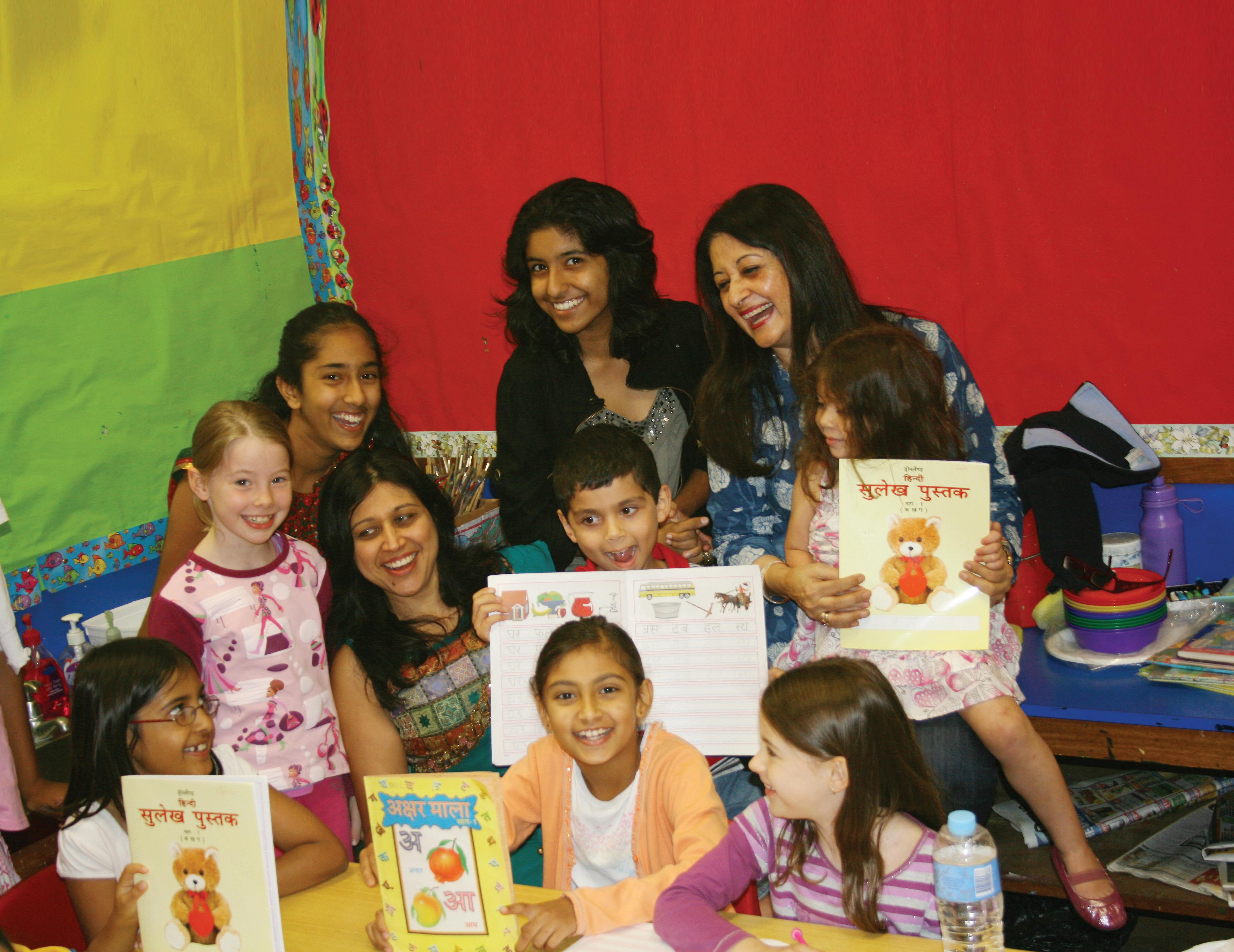

FREE Vol. 18 No. 6 (1) • March (1) 2011 • www.indianlink.com.au • FORTNIGHTLY SYDNEY Level 24/44 Market St, Sydney 2000 • GPO Box 108, Sydney 2001 • Ph: 18000 15 8 47 • email: info@indianlink.com.au Published Sydney • Melbourne • Adelaide • Brisbane • Perth A battlecry for HINDI

2 <> MARCH (1) 2011 INDIAN LINK

MARCH (1) 2011 <> 3 NATIONAL EDITION

4 <> MARCH (1) 2011 INDIAN LINK
INDIAN LINK
PUBLISHER
Pawan Luthra
EDITOR
Rajni Anand Luthra
ASSISTANT EDITOR
Sheryl Dixit
MELBOURNE
Preeti Jabbal CONTRIBUTORS
LP Ayer, Gaurav Pandey, Swati Nishar Dedhia, Sudha Natarajan, Sydney Srinivas, Malli Iyer, Farrha Khan, Prashant Dixit, Chitra Sudarshan, Noel G deSouza, Tanveer Ahmed, Roy Lange, Gaurav Surati, Ritam Mitra, Geeta Khurana, Thomas E King, Sivaram Iyer, Nancy Sood
ADVERTISING MANAGER
Vivek Trivedi 02 9262 1766
ADVERTISING ASSISTANT
Drishya Sharma 02 9279 2004
GRAPHIC DESIGN AND LAYOUT
Kaye Martin
Indian Link is a fortnightly newspaper published in English. No material, including advertisements designed by Indian Link, maybe reproduced in part or in whole without the written consent of the editor. Opinions carried in Indian Link are those of the writers and not necessarily endorsed by Indian Link. All correspondence should be addressed to
Indian Link Level 24/44 Market St, Sydney 2000 or GPO Box 108, Sydney 2001
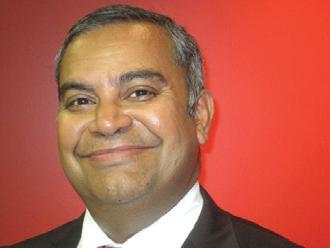
Ph: 02 9279-2004 Fax: 02 9279-2005

Email: info@indianlink.com.au
Women’s empowerment is the key
March 8 this year marked the 100th anniversary of Women’s Day, lauding the economic, political and social achievements of women past, present and future. Yet there are many issues that continue to affect women in 2011. While we acknowledge that there are women in every major role in modern society, we have to admit that there are challenges faced by women globally, like problems of a widening pay gap, inadequate retirement savings, high rates of domestic violence and even homelessness.
Although it is interesting to note that important positions in Australia are filled by women - Governor General of Australia, the NSW and Queensland Premiers and the Prime Minister, to name just a few - we cannot avoid the fact that there are less than 10% women employed in senior executive roles in the top 200 companies listed on the Australian Stock Exchange. This gender inequality persists in our society, regardless of so-called changing trends. That’s why occasions like International Women’s Day offer a good platform to shine a spotlight on unfair issues. One hopes there will be positive action from the debate which follows. The results may take time to achieve, but at least there is a persistent awareness created of these problems.
For migrant women, the financial issues which mainstream Australian women face such as gender pay gap and retirement savings, are most certainly likely to affect their settlement into a new country. Retirement saving is a major area of concern as they have the added disadvantage of entering the work force later than the average
BY PAWAN LUTHRA
Australian woman who was born here, and hence, they will need to plan more for this stage of their lives. They will also need to master domestic financial issues, which may not have been as important in India thanks to extended family support, but takes on a different meaning here.
Many who have migrated to Australia in their 30s-40s, have come from an established financial setup in India. While women are extremely proficient in taking care of domestic issues, all financial management issues are left to the husband. This provides both partners with a comfort level that blends with the traditional concept of family that has been practiced through the ages. The father’s role is to provide; the mother’s is to nurture and care.
On arriving here, these traditional roles continue to be followed as the couple struggle to find their feet in their new home. While major decisions like purchase of property etc., are undertaken by mutual consent, daily financial management is normally handled by men.
This arrangement, while comfortable, creates an acute degree of ignorance in women about basic issues of budgeting and planning. Issues such as personal insurance and retirement planning are often not understood by women who allow their partners to take the financial decisions.
Because women are unaware of the basic financial planning issues, some important ones which affect the entire family, are likely to fall through the cracks (creating a monetary imbalance). In India, in the case of death or disability of the partner, substantial family support would help to guide the wife and children through the maze of legalities and money management; however, these options may be limited in Australia for many migrating families. While friends would offer to assist, there would only be a limited level of involvement.
In this new world, it is vital that migrant women empower themselves to fully understand and manage their family’s financial affairs – from budgeting and insurance, to wealth creation and retirement. Knowledge of these issues and taking ownership of them will create a strong sense of empowerment for women in the community.
For the men, their partner’s involvement in money matters will have many benefits. The whole family can participate in budgeting; for the children it will be a learning experience on the cost of living and consequences of overspending. In fact, women can provide relevant feedback as they are aware of the cost of groceries and other home expenses. They can be valuable allies in controlling spending and even with wealth creation.
More so, if young Indian Australians here learn financial literacy skills, this will go a long way in ensuring financial success for future generations of the family. This is indeed a boon which mothers should be able to hand down to their daughters.
MARCH (1) 2011 <> 5 NATIONAL EDITION www.indianlink.com.au EDITORIAL
What’s On
SPIRITUAL
Mysore spiritual leader visit
Sat 19 March Sri Anaghadatta Inc presents Sr Sri Ganapathi Sachidananda Swamiji performing a Sri Chakra Pooja and Ganapati Homa at Redgum Function Centre, 2 Lane St, Wentworthville, 9.30am.
Sun 20 March Healing and Meditation
Music at Marana Auditorium, 16
MacMahonSt, Hurstville, 5.30pm.
Details Santosh Vanka 0412 677 670.
Chinmaya Mission Holi
Sun 20 March Holi celebrations, 10.00am to 11.30am at the Chinmaya Sannidhi
Ashram, 38 Carrington Road, Castle Hill. Details Br Gopal Chaitanya, 02 8850 7400; 0416 482 149; www.chinmaya.com.au
Events at Manav Dharam Society of Australia

Fri 11 Mar Pravachan on Navdha
Bhakti by Mahatma Suvidhya Baiji at Ram Krishna Mandir, 24/7 Lyn Parade, Prestons. 7.30 - 9.30 pm.
Fri 25 Mar Pravachan on Atmagyan by Mahatma Suvidhya Baiji at Sri Mandir, 286 Cumberland Rd, Auburn. 7.30 - 8.30 pm.
Details Mahatma Suvidhya Baiji on 0422 059 772 or Sanjeet on 0432 682 275.
Brahma Kumaris weekend retreat
1 – 3 April Brahma Kumaris Raja Yoga Meditation Centres, Sydney invite you to a weekend Hindi Retreat to understand and explore the secrets to establish easy and constant link with the Almighty Authority for inner peace in the self. Venue: Inner Space Centre for Spiritual Learning, 150
Macarthur Drive, Wilton. Details Asha Bhen 0435 196 146 or Devendra Bhai on 0431 446 056.
FUNDRAISERS
Indo-Celtic sounds
Fri 11 March
Tapestries of Sound and the Krishna Murphys present a special night of Indo-Celtic sonic indulgence. Proceeds will go to the Red Cross Christchurch earthquake appeal. Mars Hill Café, 331 Church St, Parramatta (about 15 mins walk from Parramatta Station).
Doors open 8.00pm
Holi Hullad
Fri 25 March Rekha Rajvanshi presents Holi Hullad, a fundraiser for the Queensland flood affected. Enjoy the spirit of Holi with Bollywood songs, dances, humorous poetry, tambola and Bollywood trivia and traditional Holi dinner. 7.30pm-11.00pm at Parravilla Function Centre, 42 Campbell St Parramatta. Details Rekha Rajvanshi 0403 116 301
SENIORS
Sri Om Care
Fri 25 Mar Riverstone Neighbhorhood
Centre, Park Street, Riverstone from 10.00am to 1.00 pm.
Sat 26 Mar Liverpool Library Hall, Liverpool from 11.00am to 3.00pm Sun 27 Mar Picnic at Auburn Park
Macquarie Road, Auburn
Details Jay Raman 0410 759 906.
MISC
UIA’s community forum
Sat 19 March Seniors’ Forum at 10.00am at Parravilla Function Centre, 42 Campbell St., Parramatta. Working lunch will be provided. Details Aruna Chandrala 0410 338 900.
Nutrition researcher seeks subjects
Are you an Indian origin mum with children 1 year to 5 years of age? Rati Jani, a child nutrition researcher from Queensland University of Technology, Brisbane, would like some information from you. You must be older than 18 years of age, residing in Australia for more than 1 year and less than 8 years. If you’d like to share your experience and help Rati in her research, please complete a questionnaire survey about your feeding practices. The questionnaire is in English and will take about 20 minutes to complete. The questionnaire is online at: http://survey.qut.edu.au/ survey/171152/1429/ If you wish to fill in a hardcopy please contact Rati on (07) 3138 6223 or email rati.jani@student. qut.edu.au. (This project has been approved by the QUT ethics committee, approval number 1000000943).
OneWorld Multicultural Festival in Hornsby
Sun 20 Mar Harmony Day and cultural
diversity in Hornsby Shire will be celebrated at Hornsby Park with music, dance, food and fireworks from noon to 8pm. See traditional performances by Aboriginal, Indian, Korean, Chinese and many more multicultural groups. Sample traditional cuisine from around the globe or pick up a bargain at the festival markets. Watch thrilling fireworks display at 8pm. Details visit www.hornsby.nsw.gov.au/ whatson or call 9847 6739.
SENIORS WEEK 2011
Sri Om Care event
Sat 19 Mar Sri Om Care celebrate Seniors’ Week at Auburn Town Hall, 11.00 am to 4.00 pm. Free bus pick up and drop off, free whole-day medical camp, multi cultural entertainment by seniors and youth, and free lunch. Families of seniors invited to see the special activities for seniors organized by Sri Om Care. Details Jay Raman 0410 759 906.
RAIN event
Thur 24 Mar Resourceful Australian Indian Network (RAIN) announces a ‘Herbal Green Bolly-Food Festival at Senior Citizens’ Centre, 91 Queens Road, Hurstville, 12.30pm to 3.00pm. Program includes henna celebration, cooking with herbs competition, herbal delicacies book launch, talk on herbal remedies, Bollywood entertainment and lunch for seniors. Details Sudha 9585 9158.
6 <> MARCH (1) 2011 INDIAN LINK


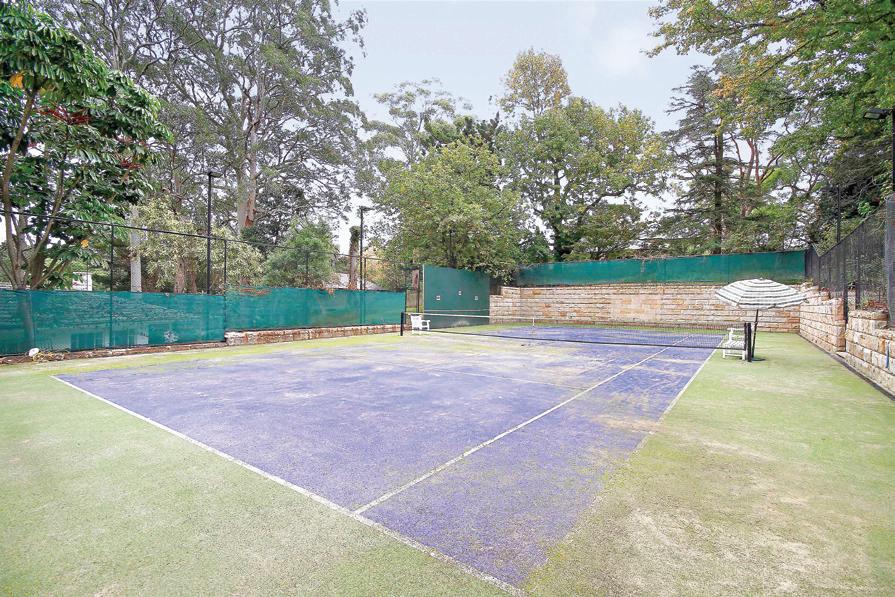




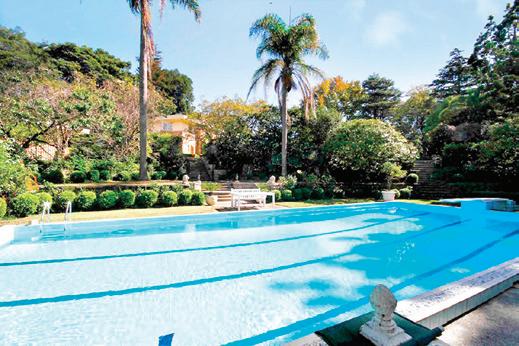

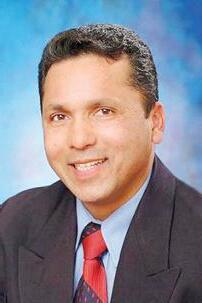
MARCH (1) 2011 <> 7 NATIONAL EDITION PYMBLE 7 7 2 2 2 1 4 2 2 5 3.5 3 4/5 3.5 2


8 <> MARCH (1) 2011 INDIAN LINK
Hindi for primary students
Some state schools have introduced Hindi as a foreign language for primary level students
BY RAJNI ANAND LUTHRA
If you have primary school children in your family, you’ll know how much fun learning a foreign language at school can be. Your kids have probably come back home with French versions of their first names, or learnt to count up to 20 in
“Countries such as India and China are significant trading partners with Australia, and there’s little doubt that our students will be connected through work and life with these two super-powers in the future.”
Japanese, or gone to school on “Italian Day” dressed up as Italian characters.
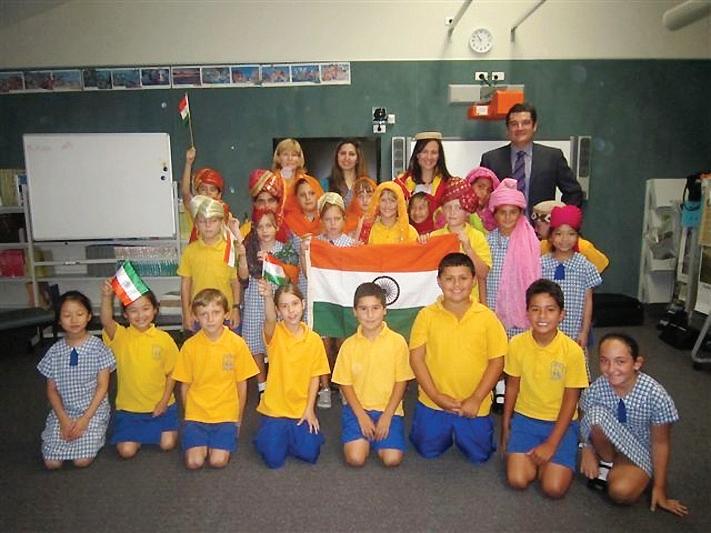
If you’ve sometimes quietly wished your own language and culture could be part of such an exciting program for your children, your wish has come true. In some Sydney schools starting this academic year, Hindi is one of the languages that primary level students are learning.
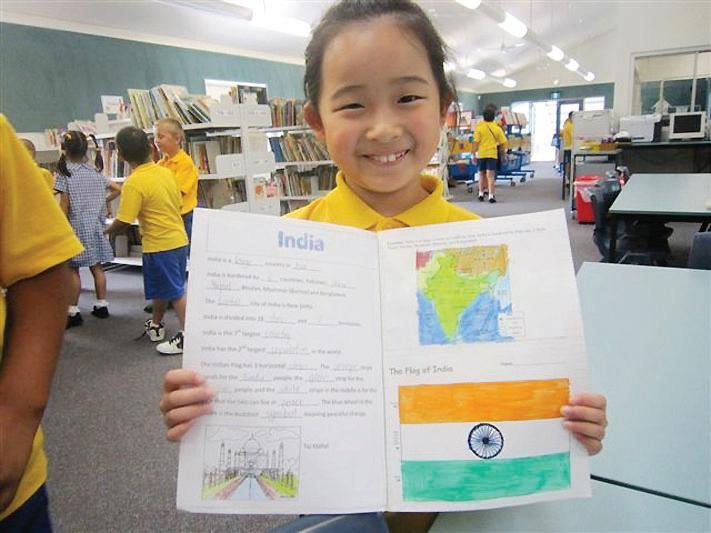
Many non-Indian families are probably learning Indianised versions of their kids’ names (perhaps Harry becomes ‘Harish’ for the weekly Hindi lesson, Jack ‘Jagdish’ and Susan ‘Susmita’), aspects of Indian culture (what that dot really means), and preparing to dress their kids in “Bollywood glam” for that fancy dress parade.

In a new program named “India Calling”, the NSW Department of Education and Training has selected seven primary schools in the Sydney Region to launch an educational program based on Hindi and Indian culture.
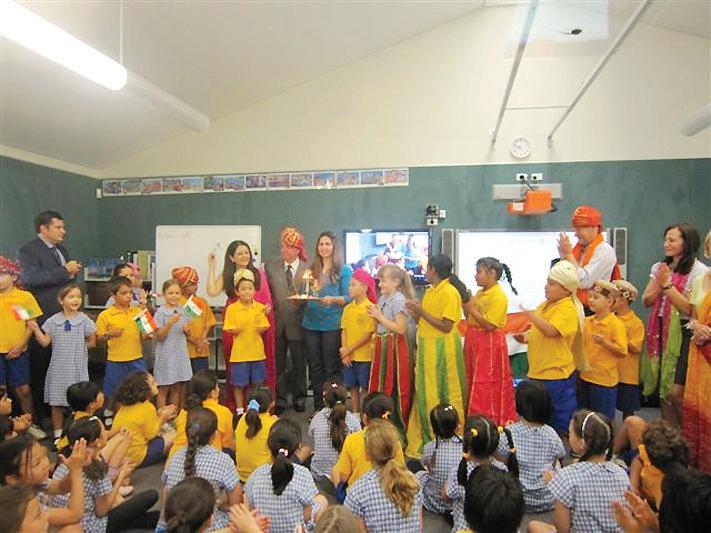
The program is part of the ‘Region’s Expanding Horizons with Asia’ initiative, which began in 2008 and has reached nearly 12,000 students. So far concentrating on China through the ‘Expanding Horizons with China’ initiative, the Hindi program began this year as a pilot.
“India Calling provides our students and teachers with knowledge and understanding about India,” Dr Phil Lambert, the regional director of the Department of Education and Training, said. “Countries such as India and China are significant trading partners with Australia, and there’s little doubt that our students will be connected through work and life with these two super-powers in the future.”
True to Indian tradition, Dr Phil Lambert lit a ceremonial lamp to start off the first lesson on 9 February.

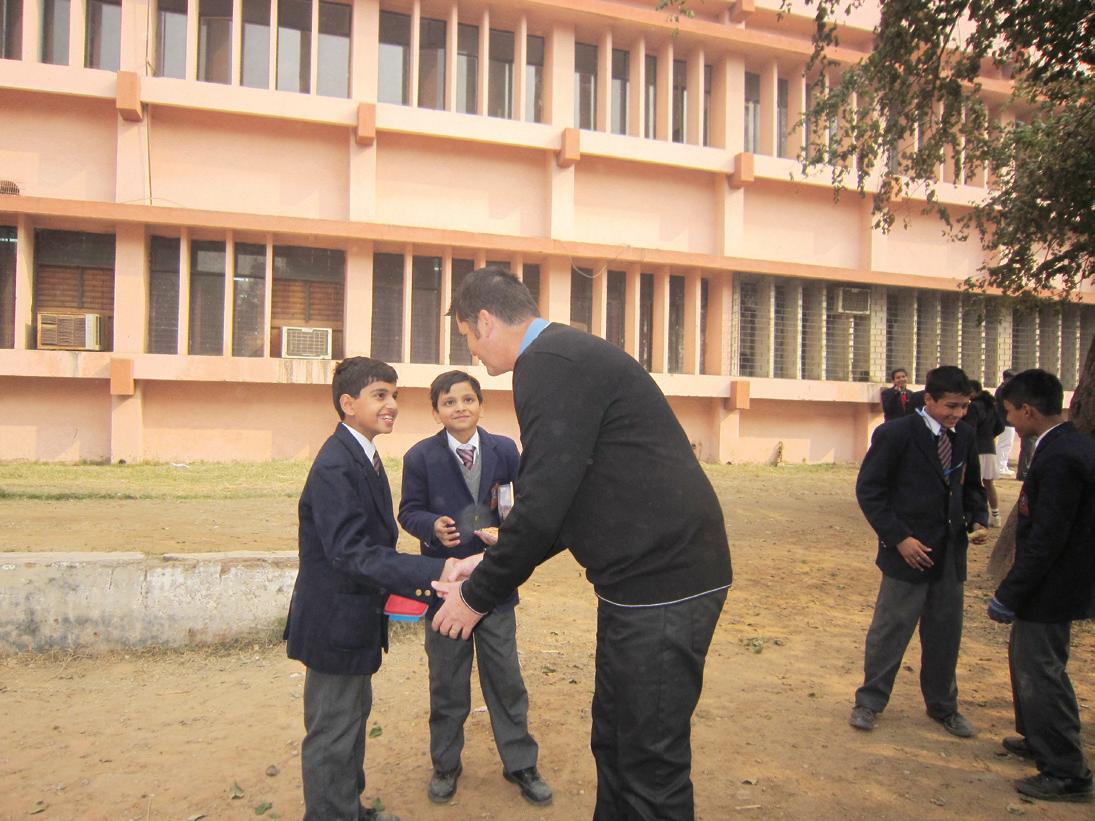
The program targets students in Years 3 and 4 who attend face-to-face lessons with specialist Hindi teacher Kulwinder Kaur. Quite uniquely, the also program involves lessons using video conference technology, through the Department’s innovative Connected Classrooms resources, connecting a total of 520 students across all the participating schools.
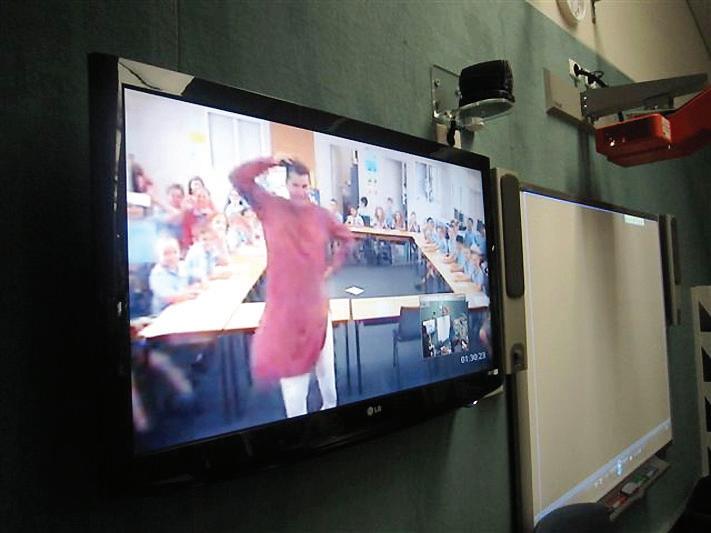
About what the lessons involve, Dr. Lambert revealed, “The weekly themes are centred around aspects of Indian culture. The teacher uses the theme to provide the basis for teaching Hindi and also ensures that aspects of Indian culture are incorporated into each lesson. The aim for each lesson is to develop an understanding of some basic concepts and some Hindi words”.
Students from the schools will also meet on significant days in the Indian calendar and participate in cultural activities. Later in the year the participating schools will be linked with sister schools in India, again through video conference.
Dr. Lambert initiated the program with the help of a Working Party made up of curriculum consultants, teachers and principals of participating schools, and experts in Indian culture and the Hindi language, notably Mala Mehta OAM of the IABBV and Gambhir Watts of Bharatiya Vidya Bhavan.
Mala Mehta, well-known in the community for her passion for the teaching of Hindi, was very pleased at this new program. “It was wonderful to be singing Hum Honge Kaamyaab with some 500 kids, most of them non-Indian,” she enthused. “And afterwards to teach some of them to make poori-aloo!”
How will the success of the program be assessed?
“The Working Party is scheduled to undertake a review of each Term’s program at the end of each term,” Dr. Lambert revealed. “An evaluation framework is being developed to
assess students’ understanding and skills at the end of 2011. The evaluation will determine the direction beyond 2011. This might include extending the program in 2012 to other schools and/or extending the program to older students. Feedback to date suggests that the program is highly successful and that other schools are looking to join the program if invited”.
Let’s hope the program continues, in light of a new draft proposal recently released that does not include Hindi in the languages program for schools.
The participating schools in India Calling are: Ashbury Public School, Carlton South Public School, Cronulla Public School, Double Bay Public School, Kogarah Public School, Mascot Public School and Oatley West Public School.
MARCH (1) 2011 <> 9 NATIONAL EDITION SPECIALREPORT
www.indianlink.com.au
Mala Mehta, Phil Lambert and others at the launch of the first lesson in the India Calling program
Mathew Jackman of Oatley West Public School (Sydney) meets students at Army Public School in Delhi (left) and Shri Ram School Vasant Vihar
(Above) Carlton South; India calling student; Oatley West teacher
Dr. Phil Lambert
Crusade for Hindi
A decision to drop India’s national language from Australia’s national curriculum has the community up in arms
Hindi will clearly show up as one of the fastest growing languages in Australia in the next census. Yet Hindi is not in the radar of language policy with either the State or Federal governments. The time has come for us as a community, to get together and prove that there is a viable ongoing demand.
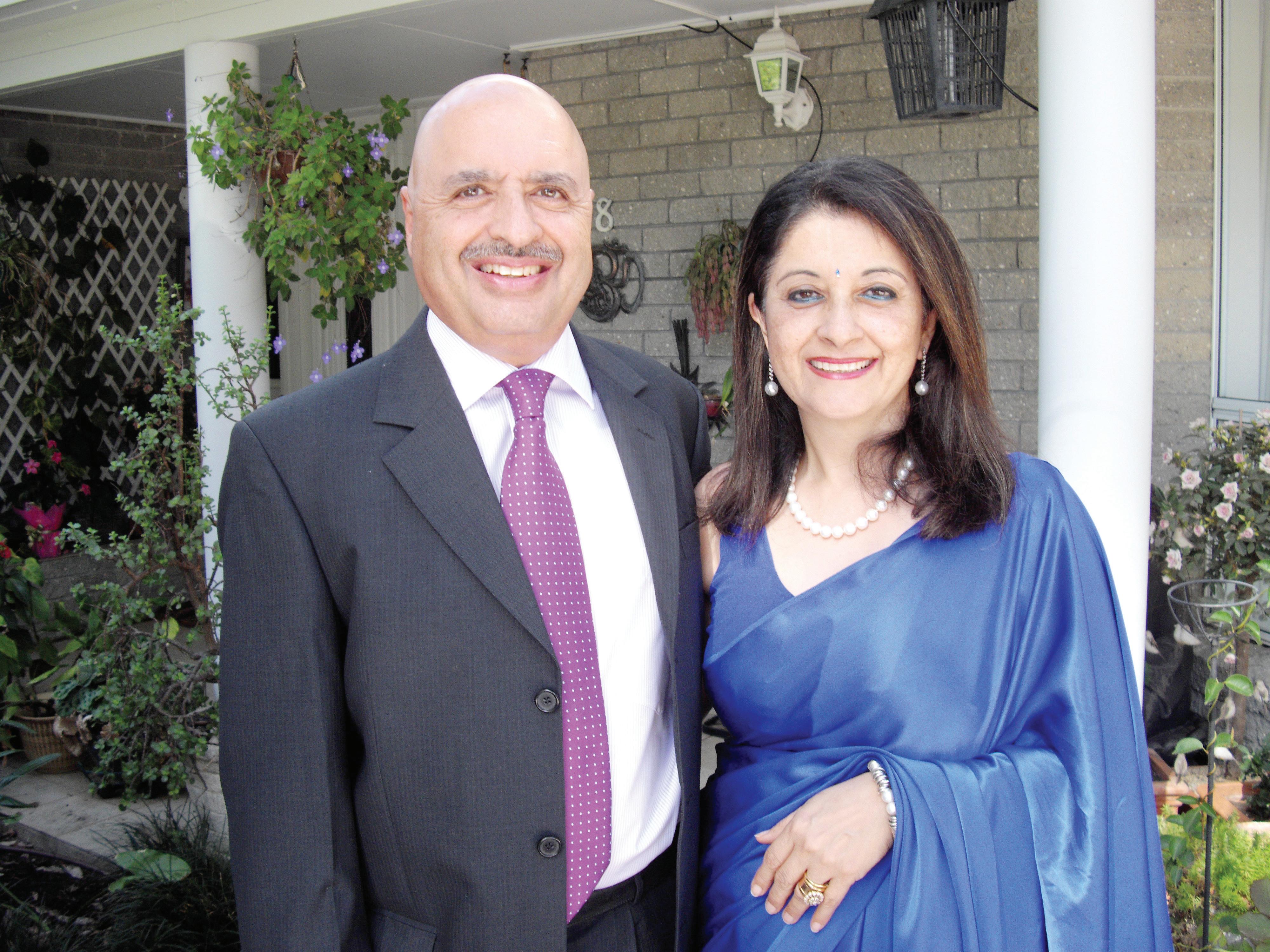
10 <> MARCH (1) 2011 INDIAN LINK
COVERSTORY
Passion for Hindi: Mala Mehta
Not only will knowledge of Hindi facilitate better cultural, trade and diplomatic exchanges, but Mala feels it will also benefit Australian intelligence and security.
Another advantage is that Hindi as a language is relatively easy to learn. (In comparison, there are many hundreds of characters to learn in Chinese, for instance). Additionally, aspects of popular Indian culture are already well-known in Australian society, and by all accounts, well-liked. The “India Calling” program being trialled in Years 3 and 4 in some state schools this year, has reportedly gone down well enough for other schools to have an expressed an interest as well.
The decline of Hindi
And yet despite this, there seems to have been a steady decline in the need for Hindi. Sydney University shut its doors on Hindi in the early 1990s. Currently at the school level, only West Ryde Public School offers Hindi during regular school hours. Outside of school, the Saturday School of Community Languages (SSCL) has centres at Liverpool, the Hills district and Strathfield. The third option is to enrol in Hindi schools that are run as part of NSW Community Languages program (such as Mala Mehta’s IABBV at Thornleigh, or other schools at Green Valley, Rooty Hill, Girraween and Quakers Hill).
The problem with this last option, Mala points out, is that students living far away from these centres miss out. Also, students are not motivated to spend part of their weekend at school again, burdened as they are with sport, homework, cultural and social activities. Perhaps the takeup rate may be better if Hindi were offered as part of the regular school curriculum.
“The future of Hindi is definitely in the mainstream,” Mala says. “At my own school I’m finding that numbers are increasing way too rapidly for me to cope. Like other community-run schools, I don’t have enough resources to do justice to the program.”
Another problem Mala has observed is that for some inexplicable reason, Hindi is scaling low as an HSC subject, causing students to shy away from it. Last year only 16 students sat the HSC in Hindi, with no one scoring in Band 6.
By contrast in 2009, 21 students took Hindi, with half scoring in Band 6 and half in Bands 5 and 4. And in 2008, Hindi students numbered 26, with 93% scoring in Band 6. In 2007, 40 students sat the HSC in Hindi, with all of them scoring in Bands 5 and 6. So why has Hindi been scaling low? This is certainly not the case with other languages like French.
Perhaps geography is a reason Hindi misses out. When government departments talk about “Asian languages”, they refer to Chinese, Mandarin, Korean, Japanese and Indonesian. Indian languages, for some reason, are not considered as “Asian”; somehow, the subcontinent is seen as different from “Asia”. A case in point is former Prime Minister Kevin Rudd’s National Asian Languages and Studies in Schools Program (NALSSP) which set a target of doubling the percentage of Year 12 school-leavers fluent in Indonesian, Korean, Japanese and Chinese by the year 2020, devoting $62.4 million to the program. Hindi was excluded here too.
Is there a need for some re-education here?
The final analysis
The case against Hindi however, seems to be in line with the general case against all language learning. There is decreased interest overall in studying languages, and many factors have been identified as contributing to this, including general community apathy, low scaling of languages in the HSC, and the belief that in the primary years, basic literacy and numeracy are the most important responsibilities of school education.

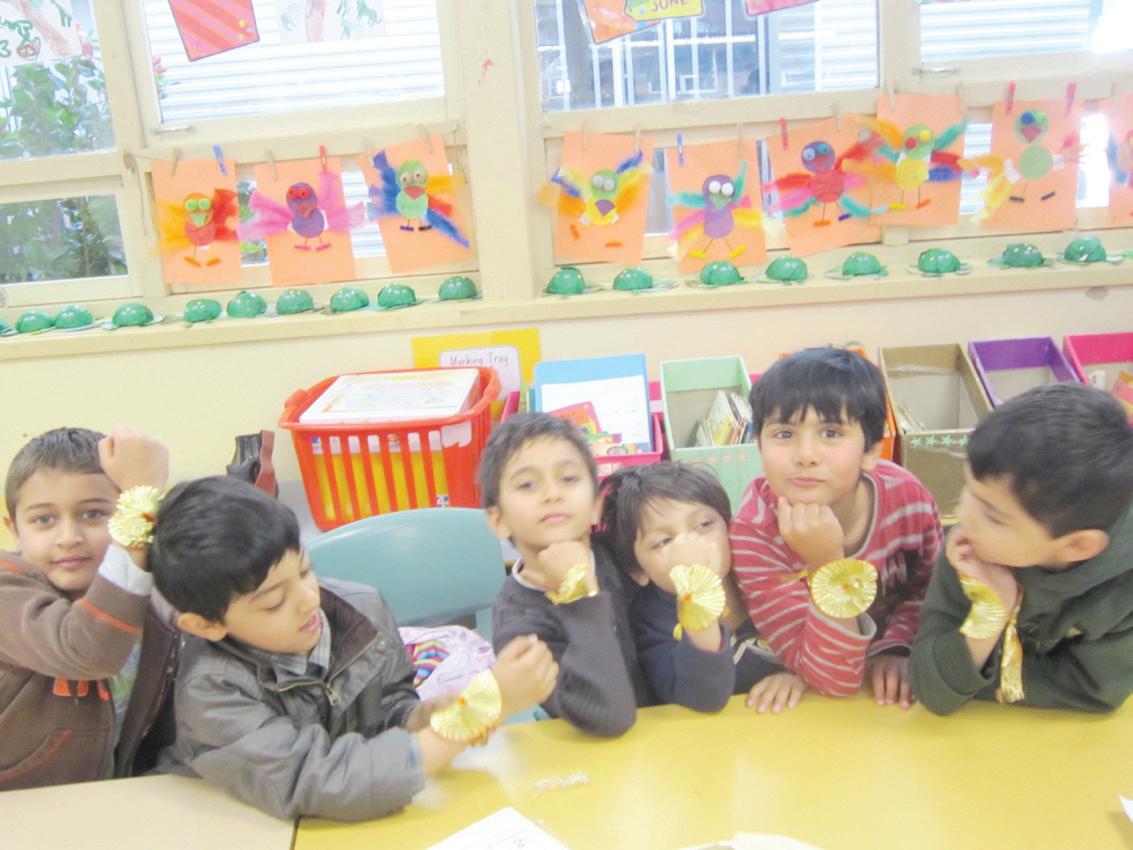
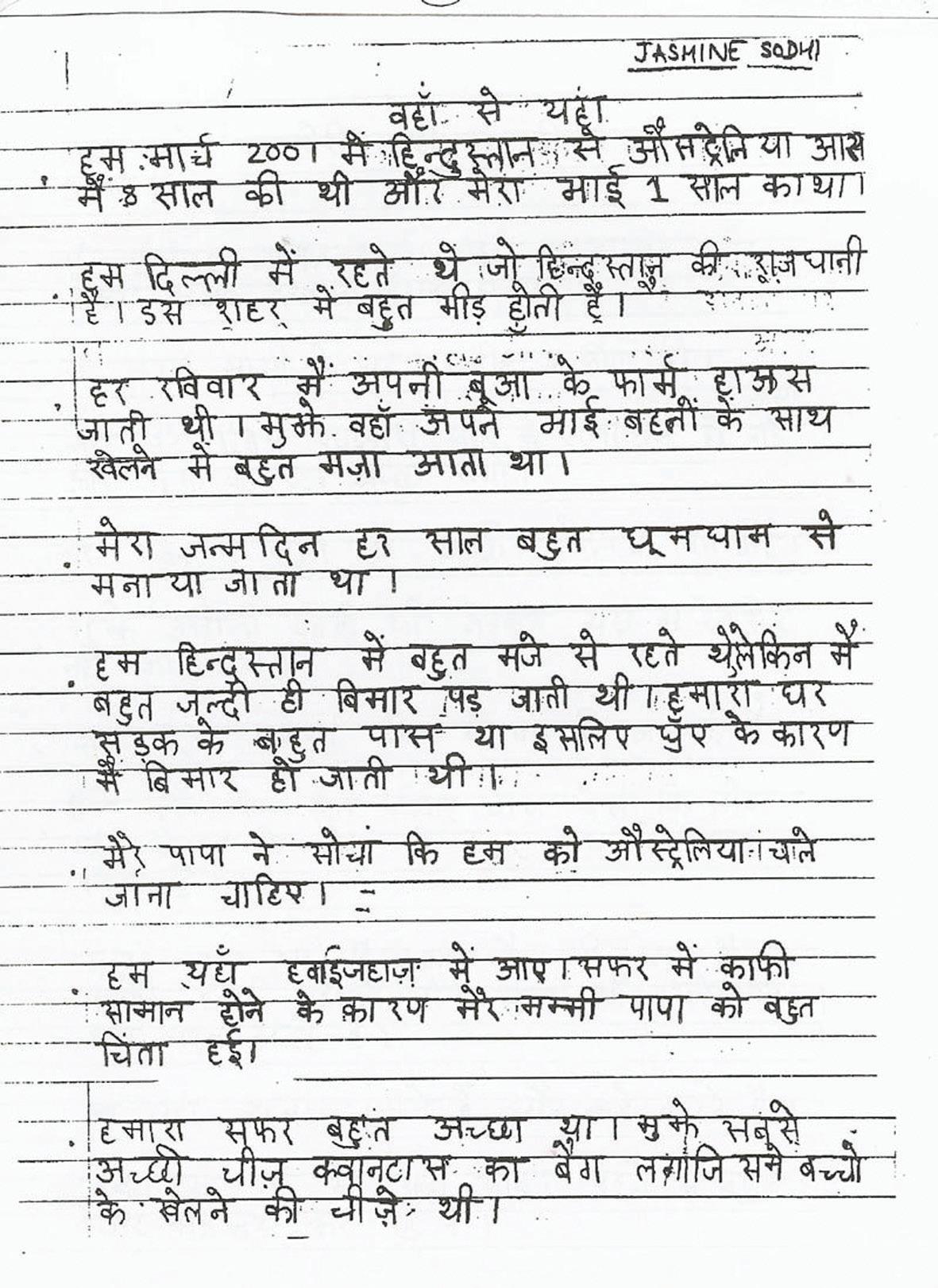
Languages Consultant Graham Sims is all too aware of this lack of interest. He retired as Languages Inspector for the NSW Board of Studies in 2009, and was involved in the introduction of languages such as Hindi, Urdu and Tamil into the curriculum.

“I have seen the number of languages available for study increase from 11 to 40, but the total percentage of students choosing to study any language at senior school level has declined spectacularly. Fewer than 10% of NSW students now present any language for the HSC”.
With over 40 languages to choose from, 90% of our HSC students decide not to study any language except English, which is compulsory.
But perhaps the biggest hurdle Hindi has faced is a lack of community support. “I have repeatedly received in writing from government departments, that no one has ever made a request for the study of the Hindi language,”
laments Mala.
It appears that students are being attracted by options other than Hindi or other Indian languages. The culture of sport in the mainstream has slowly but surely infiltrated – and though this is not necessarily a bad thing, it is taking time away from languages. Then again, among the Indian community here, it is quite normal to find primary-aged children choosing to identify with the culture of the mainstream, more than the culture of their parents. (Luckily though, an inward stance back into the community is just as normal towards the late teen and early adult years, when there is a renewed interest in Hindi and the culture of India). And because of India’s vast diversity of dialects, perhaps immigrant parents prefer their children to learn the language of their state of origin, rather than the country’s national language. Perhaps as well, Hindi could do with a little bit of help from the Indian government, just as the Japanese government has pushed its language. Nonetheless, the ultimate responsibility rests with the community: unless we support our national language Hindi in a major way, perhaps even financially, its downward slide will continue.
The way forward for now
Luckily, Mala’s call to arms has not gone by unheeded. The Hindu Council of Australia is currently preparing a joint submission, spearheaded by Sanjeev Bakri and Vijai Singhal in response to the ACARA draft. The United Indian Associations called for a special meeting to discuss the issue. Promise of support has also come in from Hindi teachers in the state of Victoria (lead by Dinesh Srivatsava); members of Melbourne’s Sahitya Sandhya and Sydney’s Hindi Samaaj, Hindi news publications such as Hindi Gaurav, and Indian community organizations in Tasmania and Queensland. Noting that “every voice can make a difference,” Mala has also been urging other Hindi language schools across the country to respond to the draft document as well. “Other educational institutions offering or wanting to offer the Hindi language, business enterprises, or even individuals who feel strongly about the importance of this initiative should submit individual submissions,” she says.
With a significantly increasing Indian migrant community, it’s important to lend a voice in support of the Hindi language, as a part of preserving our national heritage. Let us hope that we can finally say with pride, “Hum huey kamiyab!”
Log on to http://www.acara.edu.au/languages.html and provide your feedback.
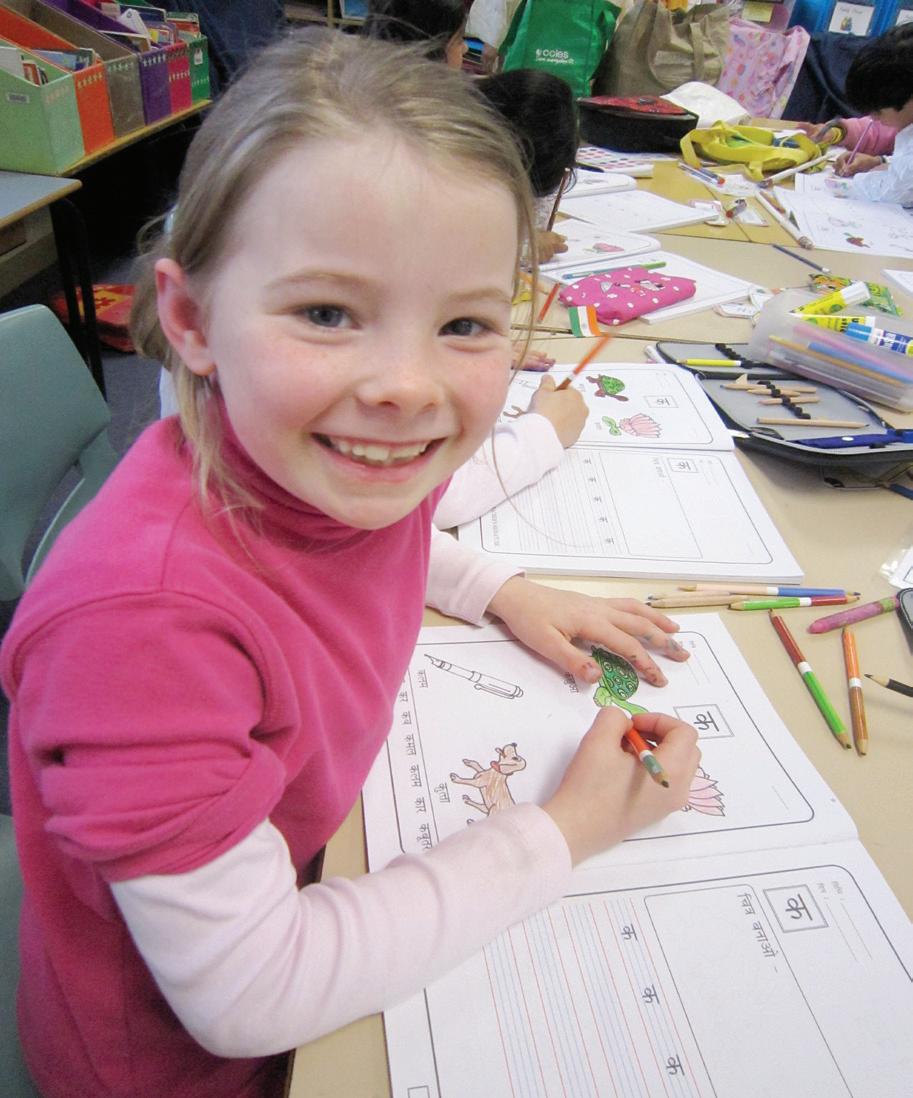
NATIONAL EDITION www.indianlink.com.au
The ultimate responsibility rests with the community: unless we support our national language Hindi in a major way, its downward slide will continue.
Hindi teacher Ruchira Virmani at Mala Mehta’s IABBV School
A politician comes to tea
Rather than complain about a lack of political representation, a group of local Indians have been working constructively with the Liberal Party to help candidates at this month’s State election get a better understanding of Indian culture and of issues that matter most to them.
The grassroots campaign invites Liberal Party candidates into the homes of members of local Indian community, to share a meal with friends and family and to appreciate the richness and diversity of ethnic Indian culture as part of the broader mosaic of multicultural Australia. The group has already organised eight such events and have plans for another fifteen later this month.
The grassroots campaign invites Liberal Party candidates into the homes of members of local Indian community, to share a meal with friends and family and to appreciate the richness and diversity of ethnic Indian culture as part of the broader mosaic of multicultural Australia.
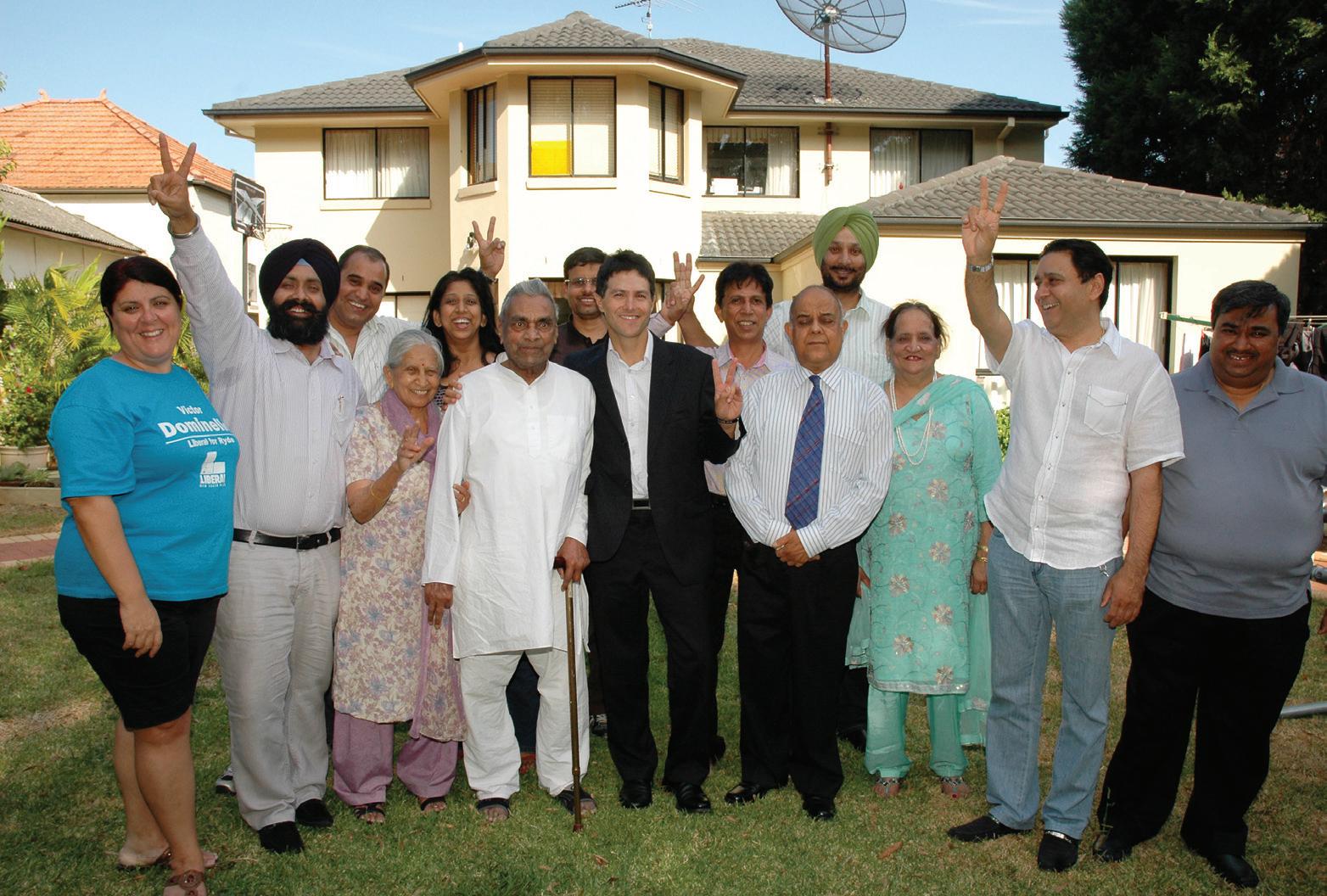
“We will continue to engage with our local members even after the current election campaign as this is an important exercise in building ‘India-literacy’ within the broader community and with our political leaders, which is constructive multiculturalism at its best” said Dr Jagvinder Virk, a founding member of this group.
The events have ranged in size from twenty-five to a hundred guests with hosts that hail from different parts of India. Community members Gurmit Tulli at Bella
Vista, Ashwani Sharma at Ryde, Jasvinder Bhogal at Kellyville are but a few hosts of these parties. A grand cocktail party was organised by Satinder Benepal of Maharaja Group of restaurants for David Elliot, the Liberal Party candidate for Baulkham Hills. Other Liberal candidates which have met with the Indian Australian community through these parties include Ray Williams (Hawkesbury) Victor Dominello (Ryde) and Geoff Lee (Parramatta). A number of other gatherings are being planned prior to the 26th March elections.
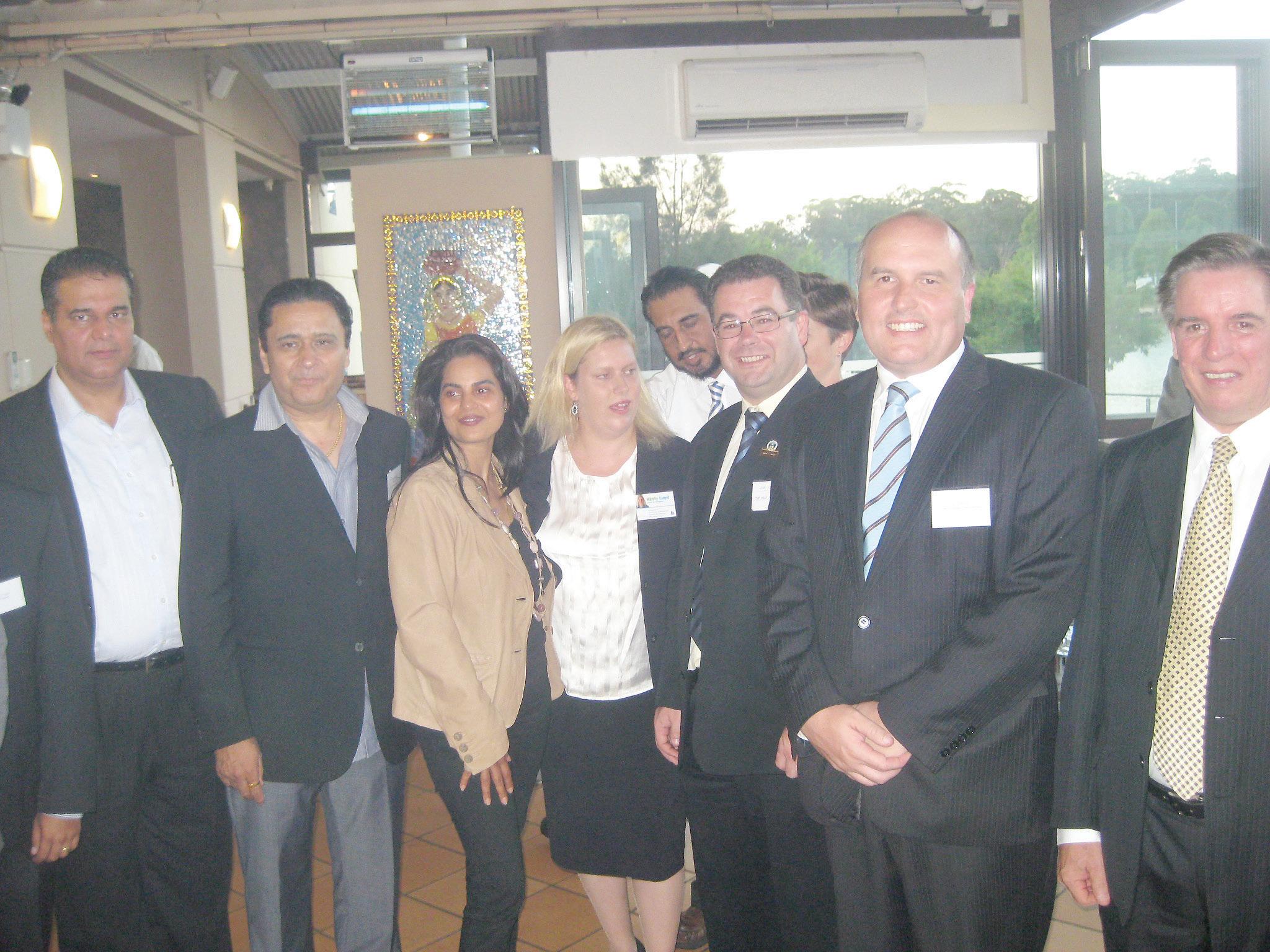
Feedback has been positive. “In a democracy, we all have a duty to get to know our political parties, what they stand for and how it affects us. Many Indian Australians run small businesses and have links into India. The current Labor-Green alliance has failed to manage our relationship with India and we pay the price in our businesses through lack of opportunity” said Mrs Sharma, one of the hosts.
According to Dr Virk, the Indian community now has a better understanding of the policies of the Liberal Party, “One of reasons for the Indian community to engage with the Liberal opposition in NSW, is that the Liberals want to have closer ties with India and if they come to power, these closer ties could mean more business opportunities for Australian companies. This would even mean greater options for the local Indian business community here. Though this involvement is only at State level, any pressure which the local Indians can make in the political process of helping reverse the Labor-Green ban on the sale of uranium to India can only help”.
Ray Williams, Liberal Member for Hawkesbury, who recently was the guest at a gathering of over eighty community members hosted by Mr Jaswinder Singh
INDIAN FOOD TAKE AWAY FOR SALE
•
Indian Food Take Away for sale in Norwest Business Park.
• Shop located in food court of shopping centre with Woolworths and many speciality shops. Shopping centre within walking distance of private hospital and offices.
• Site offers plenty of growth potential. Immediate opportunities to grow business through catering.

Call 0408 474 417
Bhogal, said, “These special social occasions have been beneficial in highlighting the various views of people in our community and the concerns they have with the increased cost of living, caused by excessive electricity prices and the threat of a new tax on carbon. The Australian Indian community have expressed to me that they are turning to the Liberal Party to make a change that will return NSW to the premier state once again”.
Victor Dominello MP Member for Ryde and coconvener of the Parliamentary Friends of India, struck a chord with the community with his keen insight on multiculturalism “One of the most important elements which makes Australia great is our cultural diversity. It is said that a great river never refuses small streams. Australia is “the great river” and over the years, she has accepted streams of people from all around the world, including streams of people from England, streams of people from Ireland, streams of people from China, from Italy and from India”.
In recognition of the importance of our trade relations with India and China, the Liberal Party has promised to appoint a Parliamentary Secretary for Asian Trade to directly oversee the NSW trade offices in the region and to co-ordinate the engagement strategy.
For those with a belief in the Liberal values of enterprise and hard work, this has been a good forum to push for their preferred candidates in the State Election. These Indian Australians include among others Jagvinder Virk, Bipin Sharma, Rahul Jethi, Gurtej Thind, Jaswinder Bhogal, Gurmeet Tuli, Raj Gokul, Sanjay Patel, Sunit Khosla, Vijay Rana. All power to them for standing for their beliefs.
12 <> MARCH (1) 2011 INDIAN LINK
www.indianlink.com.au COMMUNITYSCENE
Victor Dominello (centre), MP from Ryde, at a tea party organised by local Indian Australians
Satinder Benepal from Maharaja Group of restaurants hosted cocktails for Liberal candidate for Baulkham Hills David Elliot(second from right) at his restaurant in Bella Vista attended by local community members
Sales & Marketing Executive – Prepaid Calling Card

IDT Telecom Australia is growing . . . join a global telecom leader supported by an extensive regional team!
To support our aggressive expansion plans in Australia we’re hiring Sales Executives based out of our Sydney offices for sales of calling cards and other exciting products.

Job Description
You’ll be responsible for developing your territory and increasing sales of IDT’s extensive world-class line of prepaid phone cards throughout an assigned territory. Meet sales targets by opening new channels and by effectively supporting and servicing existing channels. Provide market feedback and execute marketing programs at the retail level.
Experience
A proven track record and at least 2 or 3 years of sales experience, preferably in the Phone Card or Telecom business or the FMCG Industry in channel sales. Results oriented, energetic, aggressive, self-disciplined with good customer relations and negotiation skills. Excellent English required and Chinese and/or Hindi language skills a plus. Some computer knowledge required.


Salary and commission plan commensurate with experience.
Please send CV and salary requirements to careers@idtasia.net
About IDT: IDT is a world-class company listed on the New York Stock Exchange. We’re a global leader in international communications with offices in over 25 countries worldwide.
IDT Telecom Asia Pacific (Australia) Pty Ltd
MARCH (1) 2011 <> 13 NATIONAL EDITION
Community women lauded on Women’s Day
solution to having funds dedicated towards the betterment of women. Ms. Michelle Rowland, Federal Member for Greenway and a lawyer who has worked as a solicitor for victims of domestic violence, emphasized how a multicultural society leads to better social and economic benefits. Ms. Prudence Goward, MP, Shadow Minister for Women and Sex Discrimination Commissioner brought up the issue of having very few women in the work force and even fewer in the higher echelons of business. Availability of affordable child care, better education for women and equal pay for equal work were some of the ways to improve this ratio.
The Guest of Honour Dr. Kalpana Ram, Head of Anthropology at the Macquarie University and Inaugural Director of the newly established India Research Centre, spoke of her research in social trends and how they impact on women. Issues like racism and sexism in institutional forms, and undertaking of menial jobs by educated and skilled migrant women, were some the issues she highlighted.
and unequal pay for women as compared to
The forum also took the opportunity to inform and educate women about the newly introduced Paid Parental Leave Scheme, Domestic Violence Assistance and Law Access. Presentations and talks were made by the respective government and agency members giving information, which would help the cause of women.
Sahajwalla (for outstanding achievement and contribution to science); Dr. Kalpana Ram (for outstanding achievement in research
Earlier on, Mrs. Aruna Chandrala, President of UIA introduced the forum, highlighting some of the issues facing
for Parramatta) said she believes having not just a woman Prime Minister but also a woman in the Treasury would be the

Quiz questions about prominent Indian and Australian women, prizes in the form of lucky draw and cultural programs were interspersed between talks to keep the audience engaged and entertained.
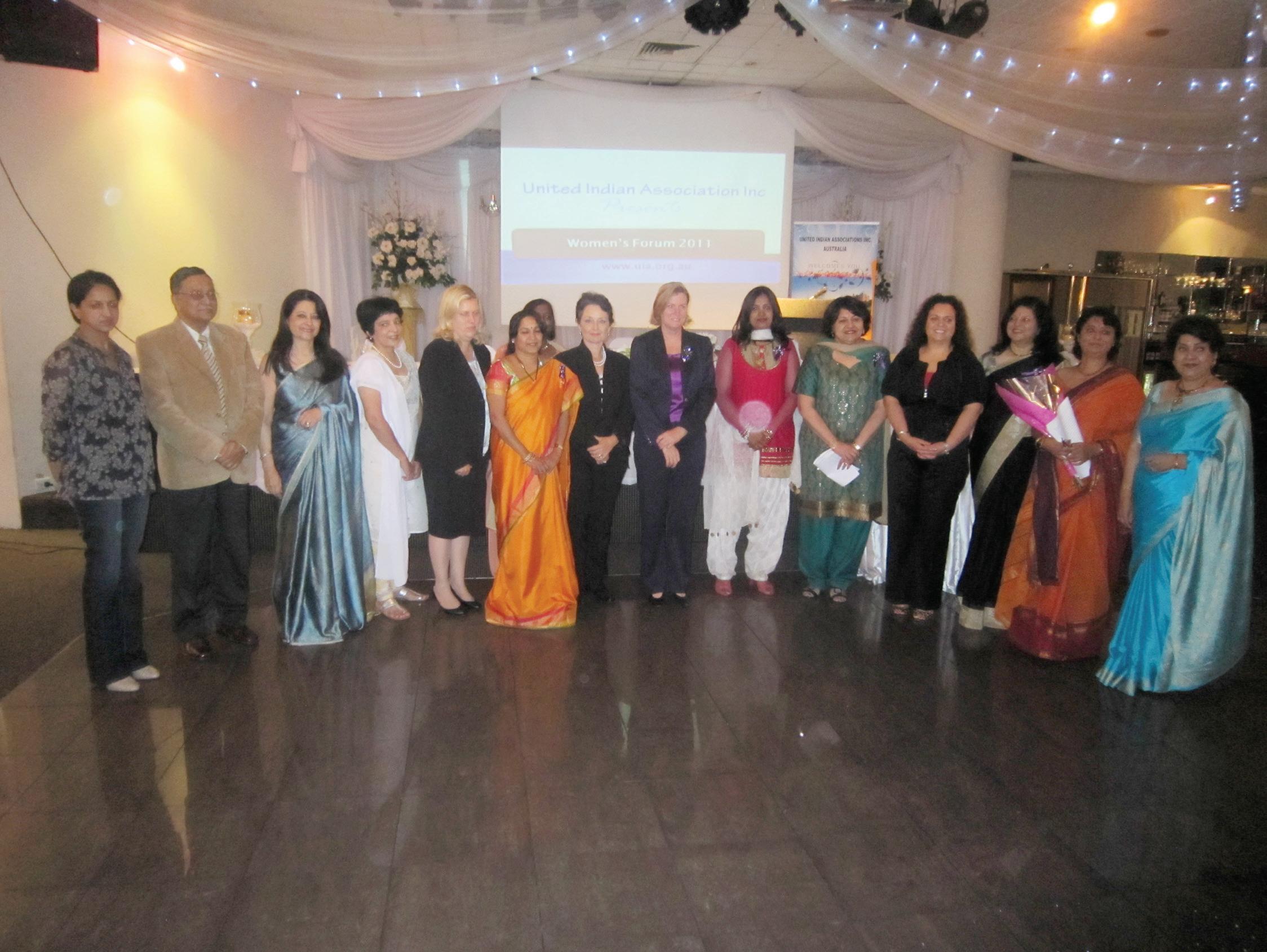
 Swati Nishar Dedhia
Swati Nishar Dedhia
14 <> MARCH (1) 2011 INDIAN LINK www.indianlink.com.au COMMUNITYSCENE

MARCH (1) 2011 <> 15 NATIONAL EDITION
New director for Australia India Institute
The University of Melbourne has appointed one of India’s leading thinkers and writers on international relations, Professor Amitabh Mattoo, as the inaugural Director of the Australia India Institute.
He is currently a Professor of Disarmament Studies at the Centre for International Politics, Organisation and Disarmament at New Delhi’s Jawaharlal Nehru University and has been a Member of the National Knowledge Commission, a high-level advisory group to the Prime Minister of India.
Prof. Mattoo was the Vice-Chancellor of the University of Jammu from 2002 – 2008. He received his Doctorate from the University of Oxford and has been a Visiting Professor at Stanford University, the University of Notre Dame, the University of Illinois and at the Maison des Sciences de l’Homme in Paris. He has published extensively, writes regularly for Indian newspapers and is a well-regarded television commentator.

Prof. Mattoo has been awarded the Padma Shri, one of India’s highest civilian awards, for his contribution to education and public life.
“I consider the appointment to be a great honour as well as a great responsibility.
I am confident that we can meet the challenge of building a world class institute in Melbourne with a focus on India. I am thankful to the Chancellor and the Board for reposing this trust in me,” Professor Mattoo said.
Professor Mattoo will take up his three year appointment in Melbourne, Australia in April 2011.
In announcing his appointment the Chairman of the Board of the Australia India Institute, Chancellor of the University of Melbourne and recently appointed
Victorian Governor-elect, Alex Chernov AO QC said:
“We are delighted to have as Director a person of world renowned academic and administrative calibre such as Prof. Mattoo. He has a wealth of experience in areas concerned with university affairs, government and other institutions. We look forward to his providing leadership at the Australia India Institute, the principal aims of which are the promotion of greater exchange in knowledge between India and Australia in a range of areas of mutual interest.”
Australia’s High Commissioner to India Peter Varghese said “I congratulate Prof. Mattoo on his appointment as Director of the Australia India Institute. Such a senior appointment will boost the Australia India Institute’s capacity to build the dialogue between Australia and India across a broad spectrum of issues. I am particularly pleased that at a time when Australia and India’s strategic interests are converging the appointment of Prof. Mattoo will boost the dialogue between our countries on international strategic issues.”
The Australia India Institute is a crucial part of the strategic engagement between Australia and India. In recognising both the importance of the relationship and the need for stronger connections between Australia and India, the University of Melbourne established the Australia India Institute in 2008.
The Institute was officially launched by the then Deputy Prime Minister Hon. Julia Gillard MP at the Australian High Commission in New Delhi on 1 September 2009.
In late 2009, the Australian Government Department of Education, Employment and Workplace Relations (DEEWR) provided just over AUD $8 million to the Australia India Institute over three years.
Australia India Institute launches new program with Asha and Nossal Institute for Global Health
The Australia India Institute recently announced the first of a series of collaborative research programs in India. Called A New India-Australia Partnership to Support the Aspirations of Delhi’s Urban Poor, the new program was launched in collaboration with Indian NGO Asha and the Nossal Institute for Global Health
The Institute has funded 40 projects for 2011 across its six priority areas of Resources and Environment, Regional Relationships, Health, Education, Contemporary India and Economics and Business.
Australia’s High Commissioner to India Peter Varghese said “The Australian Government has been proudly associated with the excellent work of ASHA for several years. This new partnership with the Australia India Institute and Australia’s Nossal Institute for Global Health will expand cooperation in research, education and community engagement. It is a unique initiative and I congratulate the Australia India Institute for its support of the inspiring work of ASHA in empowering slum communities, especially through education.”
Designed to operate in the three areas of research,
education and community engagement, the program was launched by India’s Minister for Human Resource Development, Kapil Sibal at the Habitat Centre on 2 March 2011.
The project will examine and document the critical components of the ‘Asha model’ of slum communities which has seen much success in Delhi over the last 22 years.
Asha was founded in 1988 by Dr Kiran Martin, a paediatrician, as a healthcare program in a single slum colony in Delhi. Since then Asha has developed a holistic model of slum development that is currently reaching more than 400,000 people in 50 slums, approximately 10 per cent of the New Delhi slum population.
Asha has not only improved the health and environment of the slum residents but its Higher Education program marks the first time in India’s history that large groups of children from the slums have been admitted to university.
“By providing greater opportunities and improved capacity for Delhi’s urban poor, Asha, the Australia India Institute and the University of Melbourne aim to show that global investment and development
requires strengthening of relationships between all sections of society. Furthermore, the strengthening of relationships between Australia and India reflects the mutual benefit and understanding the two countries can gain from cooperation,” Dr Martin said.
A Memorandum of Understanding (MOU) between the Australia India Institute, the Nossal Institute for Global Health (the University of Melbourne) and the Asha Community Health and Development Society, New Delhi was also signed on the Occasion by the Chairman of the Board of the Australia India Institute Alex Chernov, Professor Susan Elliott (Deputy Vice- Chancellor, Global Engagement, University of Melbourne) and Dr Kiran Martin, Founder Director, Asha.
The Australia India Institute is a crucial part of the strategic engagement between Australia and India. In recognising both the importance of the relationship and the need for stronger connections between Australia and India the University of Melbourne established the Australia India Institute in 2008.
16 <> MARCH (1) 2011 INDIAN LINK
www.indianlink.com.au INDIA-OZ
Prof. Amitabh Mattoo
If you are a student looking to settle down permanently in Australia, or have any other visa requirements, look no further than Australian Visa & Migration Consultancy Services. We know your problems and challenges. We also know ways to succeed and save you time and money. We are a team of ex-students with over 15 years experience, so you are in good hands at AVMCS. 95

Fax: 02 98912872
email: info@avmcs.com.au

MARCH (1) 2011 <> 17 NATIONAL EDITION
Wigram
Street, Harris Park, NSW 2150 Tel: 02 98939606
Don’t delay, call us today on 02 9893 9606 Contact Sanjay Deshwal on 02 98939606 or 0412 462 344 JUST 3 MINUTES FROM HARRISSTATION!PARK
web: www.avmcs.com.au
Spreading the word on beach safety
BY GAURAV PANDEY

Around this time two years ago, a wonderfully spirited young man, Rootvij Kadakia, lost his life trying to rescue his friend at Victoria’s Lake Tyers Beach. Today, for many a concerned individual, his life has become an inspiration to spread the beach safety message.
The Rootvij Kadakia Foundation (RKF), in association with Life Saving Victoria (LSV) and educational institutions, has in the last two years provided potentially life-saving water safety tips to more than 1000 international students.
The ‘Beach Program’ held at Williamstown Beach in Melbourne recently was a part of the Foundation’s summer campaign to promote beach safety. The program, supported by Victoria University and LSV, was a big success with more than 200 newly arrived international students taking part in it.


Members from Life Saving Victoria (LSV) briefed the group about the need to take precautions in the sea. Then, divided into teams, the students participated in several dry and wet fun-filled activities under the watchful eye of LSV lifeguards. They were provided bogey boards, surfboards, life jackets and other protective equipment.
The participants, among other things, were taught how to seek help when in distress; the need to stay between the red and yellow flags in the sea, an area patrolled by lifeguards; and to swim parallel to the beach if caught in a rip current.
“The objective at Rootvij Foundation is to educate people from diverse backgrounds about the dangers the sea presents,” said Mounil Kadakia, founding member of RKF and brother of the late Rootvij Kadakia. “Providing training to students within a short period of their arrival in Australia would help them safely enjoy the wonderful coastline of this country.”
Often tourists and international students are unaware of the risks in the sea and even experienced swimmers can encounter situations that may surprise them and prove difficult for them to handle.
“Statistics show that the cases of sea accidents are high among migrating populations. Most of them come to Australia with very little knowledge about safety measures to be followed in the sea,” said David Holland of LSV.
According to the National Coastal Safety report for 2009-2010, of the 82 coastal drowning deaths in Australia during the period, 32 percent were of a foreign ethnicity and 6 percent were international tourists. The cases of drowning among migrants and tourists went up from 9 in 2006 to 26 in 2010.

Such programs can go a long way in educating those who have not had a chance to receive formal swimming
education. This was the fourth ‘Beach Programme’ conducted by the RKF this year. Last year, it conducted three such programmes and one ‘Meet a Lifeguard’ programme. The organisation also plans to conduct similar events for two workplaces this summer and is keen on working with anyone interested in spreading the message.
“We have plans to start a similar project in India in the near future. We are also planning to reach out to the wider Indian community in Melbourne and conduct events for them the next summer,” Mounil said.
The Foundation is dependent mostly on donations and so far, the support of friends, family and Rootvij’s workmates has kept it afloat. “Our activities are growing at a fast pace. This is because there is more awareness about the need to educate the migrants and international students on this critical issue,” Mounil said and added, “This also means that we require all the support that we can get via the community. I would like to urge our Indian community to come forward and help us in spreading the word.”
For more information, visit www.ReadTheBeach.com
Mounil Kadakia can be reached on 0421 777 913 or at mounilkadakia@gmail.com
18 <> MARCH (1) 2011 INDIAN LINK
In the name of a young man who lost his life to the sea, a charitable organisation is raising awareness about being surf savvy
Rootvij Kadakia

MARCH (1) 2011 <> 19 NATIONAL EDITION

20 <> MARCH (1) 2011 INDIAN LINK
paratha
Mushroom and pea paratha
Stuffed vegetable and cheese Paratha

Paneer Paratha
Methi Paratha
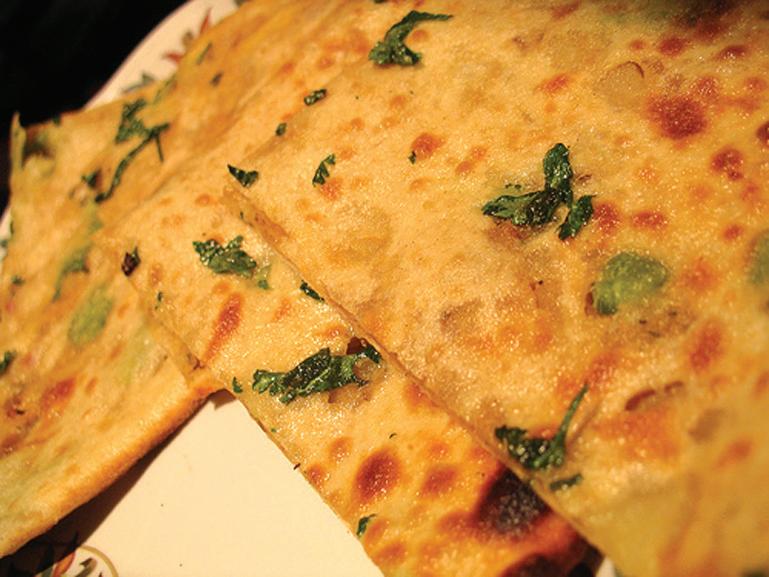
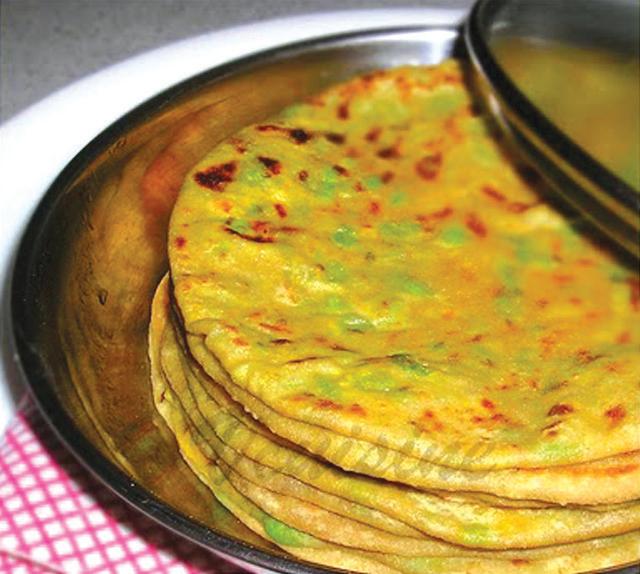
Mooli Paratha
Gobi Paratha
Mattar Paratha

NON-VEGETARIAN PARATHAS
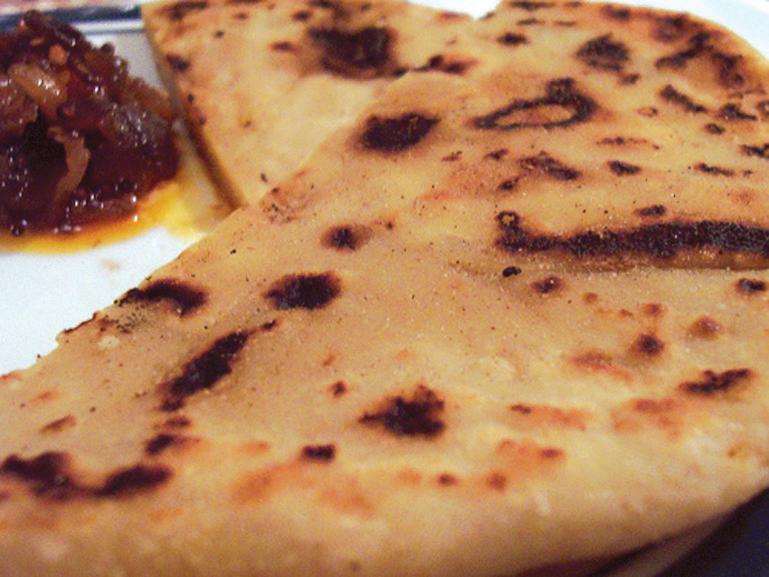

Keema Paratha
Chicken Paratha


Egg Paratha
DESSERT PARATHAS Shakkar Paratha
Chinni Paratha
MARCH (1) 2011 <> 21 NATIONAL EDITION 139 STEPHEN STREET BLACKTOWN PHONE: 9671 7820 The true taste of Punjabi food and our Sydney famous special Paranthas Quality Quantity Service
VEGETARIAN PARATHAS Poodina Paratha Lachha Paratha
Palak Paratha
Aloo Paratha
Methi aloo Paratha
Oriental style stir fry
139 STEPHEN STREET BLACKTOWN PHONE: 9671 7820 Call now on 0404 086 254 Quality Quantity Service Take-away Catering from $9pp UNLEASH THE FLAVOUR of traditional Indian food
Australian researcher wins inaugural CNR Rao Award
Blake Plowman, a third year PhD student at RMIT University in Melbourne, has been awarded the inaugural CNR Rao Award for outstanding contribution in materials science, an important frontier area of interdisciplinary research.
Prof. Margaret Gardner, ViceChancellor and President, RMIT University, presented the award to Blake in Bangalore, India recently.
The award, named after one of the most prominent Indian scientists and a former RMIT University visiting Fellow Prof. CNR Rao, was open to all PhD students. Prof. Rao’s work on transition metal oxides has led to basic understanding of novel phenomena and the relationship between materials properties and the structural chemistry of these materials.
“Blake was chosen for the quality of research he has carried out, specifically in the area of functional materials development, and the significance of his publications,” says Prof. Suresh Bhargava, Deputy Pro-Vice Chancellor (International) at College of Science, Engineering and Health at RMIT University.
“Blake’s work focuses on the
electrochemical formation of noble metal nanostructures, including gold. His work on gold electrochemistry can open new avenues and give exciting insights on the function and fate of gold in the body.”
Blake, whose work has been published in reputed international journals such as Chemical Communications and Electrochimica Acta, is currently carrying out his research under Prof. Rao at the International Centre for Materials Research in India.

Much of Blake’s success can be credited to the positive professional research culture, open access to most important research journals and conducive environment provided to researches in Australian universities.
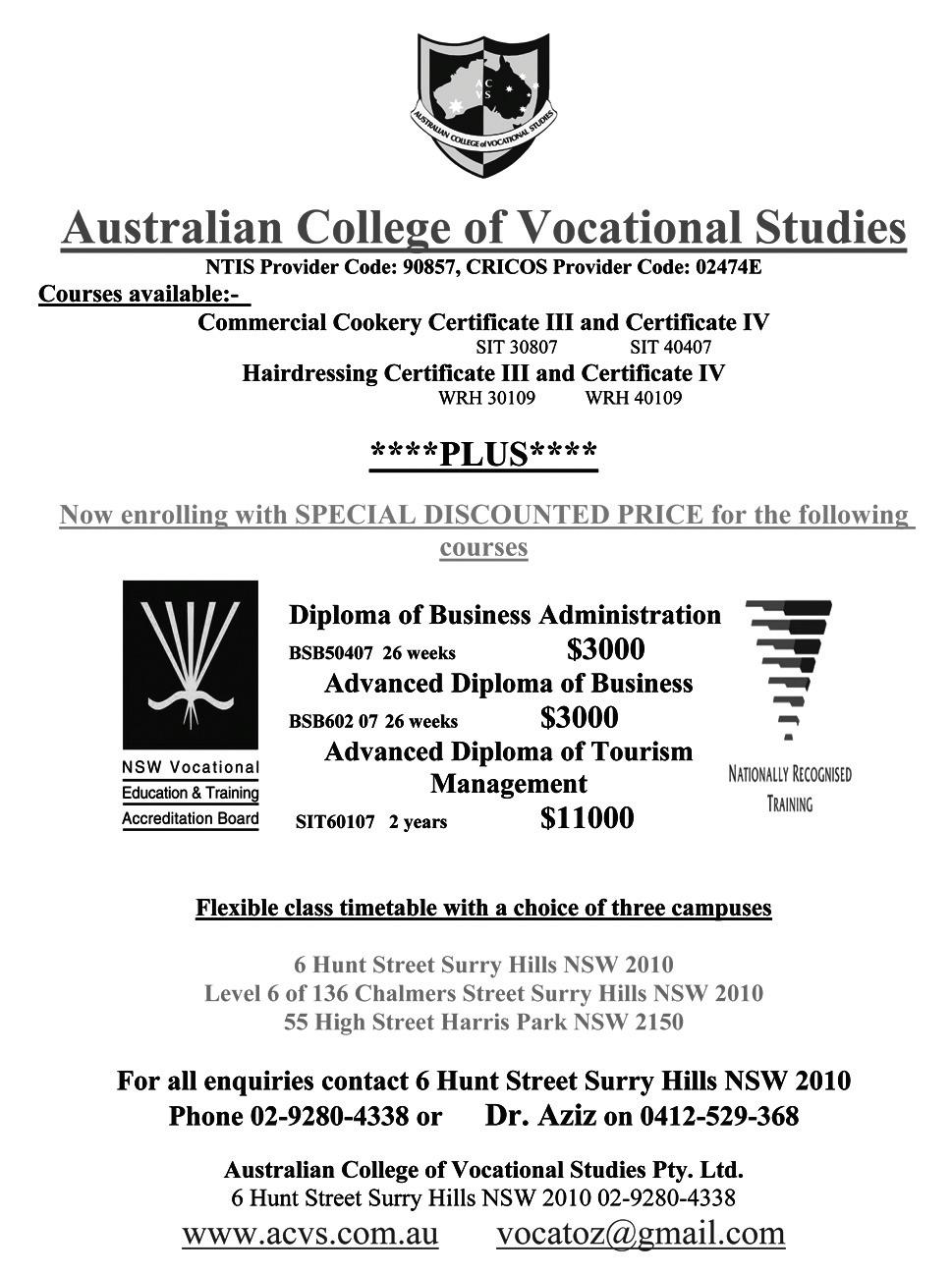
It also highlights the growing collaboration between Australian and Indian universities in the field of research.
The Indo-Australian Science and Technology Fund, Indo-Australian Biotechnology Fund and the recently introduced Grand Challenge Fund are examples of this.

“More programs are being initiated and most Australian universities are planning to establish their research centres with top Indian universities,” Prof. Bhargava says.
Blake is a part of the Prof. Bhargava Advanced Materials and Industrial Chemistry Group at RMIT University. The group consists of 12 post-doctoral fellows, 20 Ph.D students and three honours students.
Prof. Bhargava is among the growing number of academics of Indian origin who have carved out a niche for themselves in the field of research in Australia. His work has resulted in a major breakthrough in alumina technology and three industry-related patents.
The CNR Rao Award was introduced by the donation of an Indian academic working at RMIT University to respect Prof. CNR Rao’s contribution to chemical sciences.
“The inspiration behind the award was Prof. Rao’s recent visit to RMIT University, and the fact that this year is the International Year of Chemistry. Given the research strength of the university in the development of functional materials Prof. Rao was seen as the perfect role model for young scientists in this area,” Prof. Bhargava says.
22 <> MARCH (1) 2011 INDIAN LINK
www.indianlink.com.au MELBOURNE
Gaurav Pandey
Blake Plowman

MARCH (1) 2011 <> 23 NATIONAL EDITION
What have the RAIN (Resourceful Australian Indian Network) Seniors been doing lately?
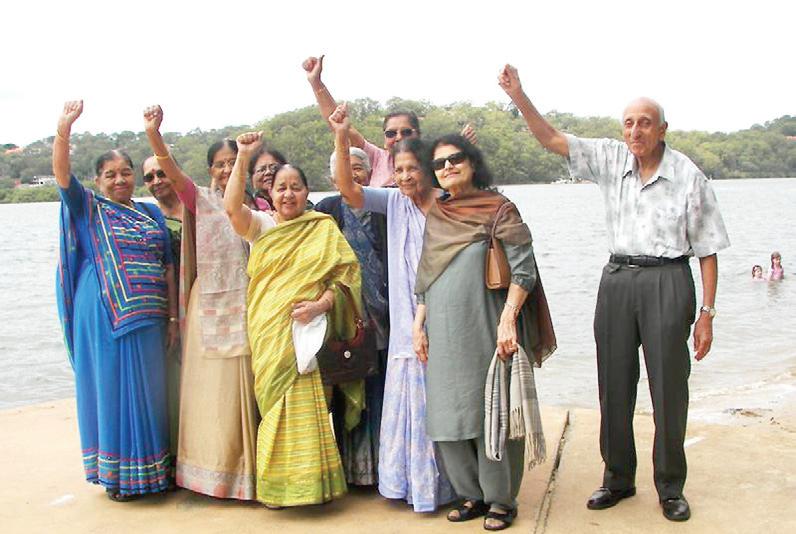

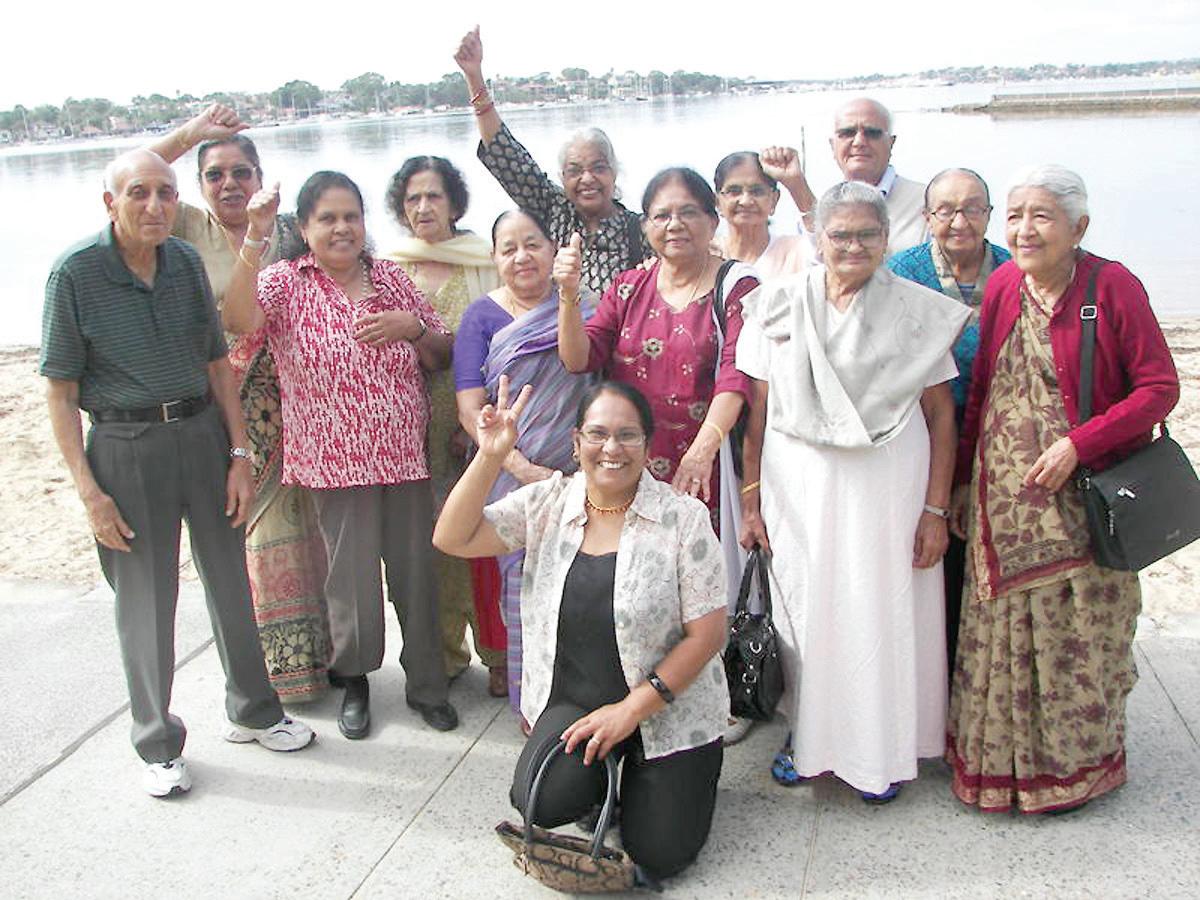
We have been having a mind-body-andsoul workout. We have been becoming environmentally aware. We have been learning actively the nuances of gardening. We have been discussing - and sharing - recipes of herbal cooking. In short, we have been enjoying life!
And out of the fun we have been having lately, we have been able to create a wonderful resource for anyone who’s interested: a book on herbs, written by us!
The whole process started with the Senior Satsang project funded by the Hurstville CDSE grant. It has worked out well to provide seniors a chance to enjoy the company of their peers, visit a park, move around, stretch and relax the aching bones. At Satsang (prayers) our members sit down to sing a bhajan , read a chapter of the Gita and listen to explanations, after which come the mind-and-soul workout. Each member comes up with a question, an experience or a thought and this gives expression to several dormant concerns that need so desperately to be shared. A laugh or two, a tear or two and that feeling of ease and relaxation at the end of it all…The practicality of what the Gita preaches and the philosophy that evolves, does that to you.
Having had the happiness of expression, we are ready once again to please the needs of our body, hunger. We share a hot Indian vegetarian meal cooked by the RAIN food committee volunteers at the Hurstville Community
Food Services. Now thoughts turn to cooking, food and recipes. This gets us ready for the next project.
With support from Hurstville and Kogarah City Councils we decide on sharing some herbal recipes. But what about the seniors who are less mobile and cannot join our activities? Well, the idea comes up, why don’t we visit them and have a table top herbal garden organised for them? The steering committee gets small pots of herbal plants ready. We visit our friends at home with the pots and activities, smiles, singing and simple talking, bringing some sunlight into their dreary existence. We’ve also encouraged the home-bound seniors to come up with herbal recipes.
Now our youth support group springs into action. The youngsters have designed and planned a recipe book to be launched as part of Seniors Week celebrations. Thanks to young Sapna Shah and Shiwani Sanghvi, our book ( Aushadi Rasoi: Herbal Cuisine ) is getting ready fast and looking great, providing essential information on herbs and what can be cooked using them.
We invite all seniors to participate in this great celebration of ‘Live Life’ supported by Department of Ageing, Disability and Home Care. The day is 24th March and the time is 12.30pm.

 Sudha Natarajan
Sudha Natarajan
The book Aushadi Rasoi (on sale for $10) will raise funds for the purchase of a respite care home for use by RAIN seniors. For information contact Sudha at 02 9585 9158.
24 <> MARCH (1) 2011 INDIAN LINK www.indianlink.com.au SENIORS
On being resourceful
A seniors group pools resources towards a book that will be released shortly as a fund-raising initiative
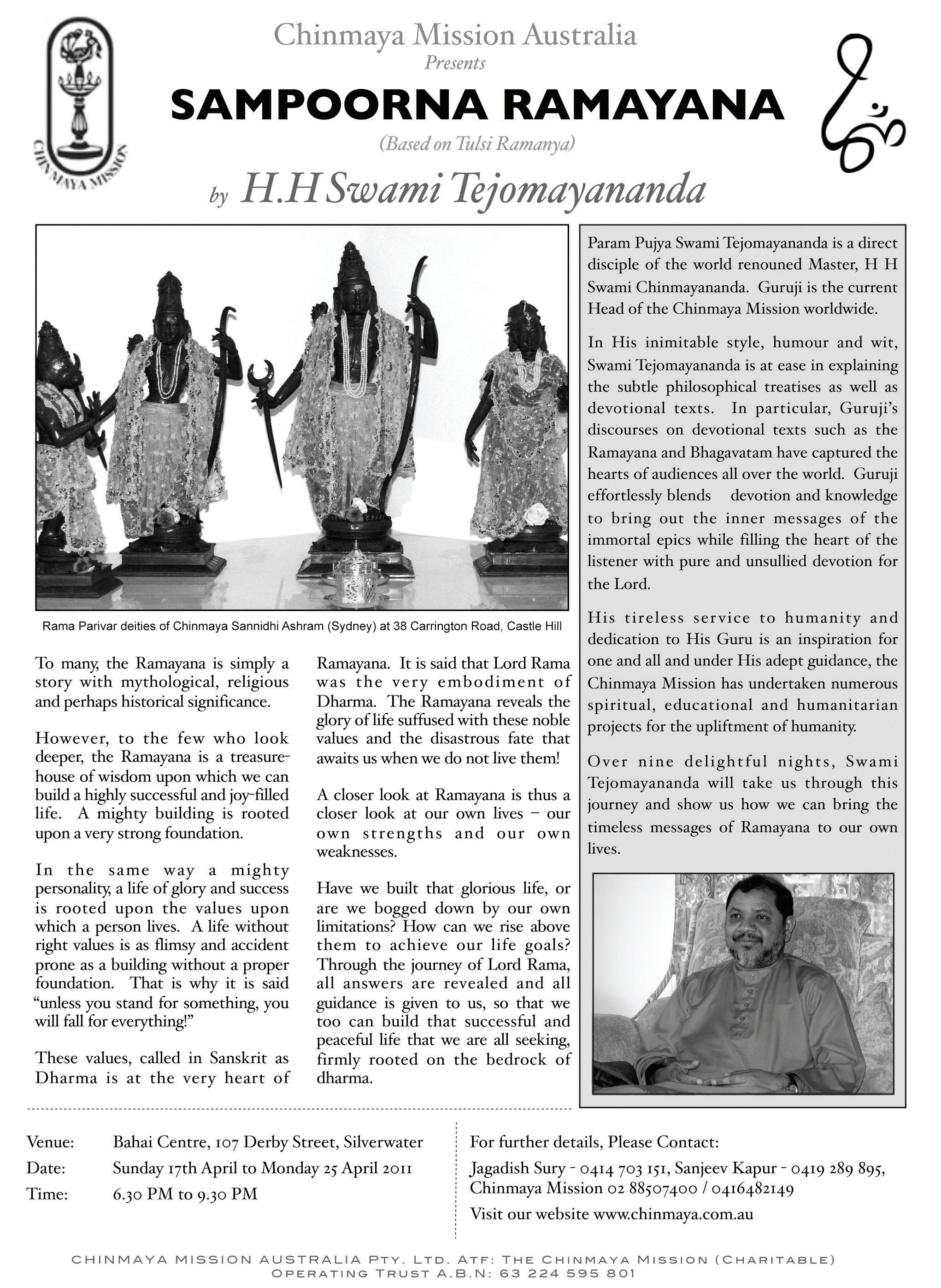
MARCH (1) 2011 <> 25 NATIONAL EDITION



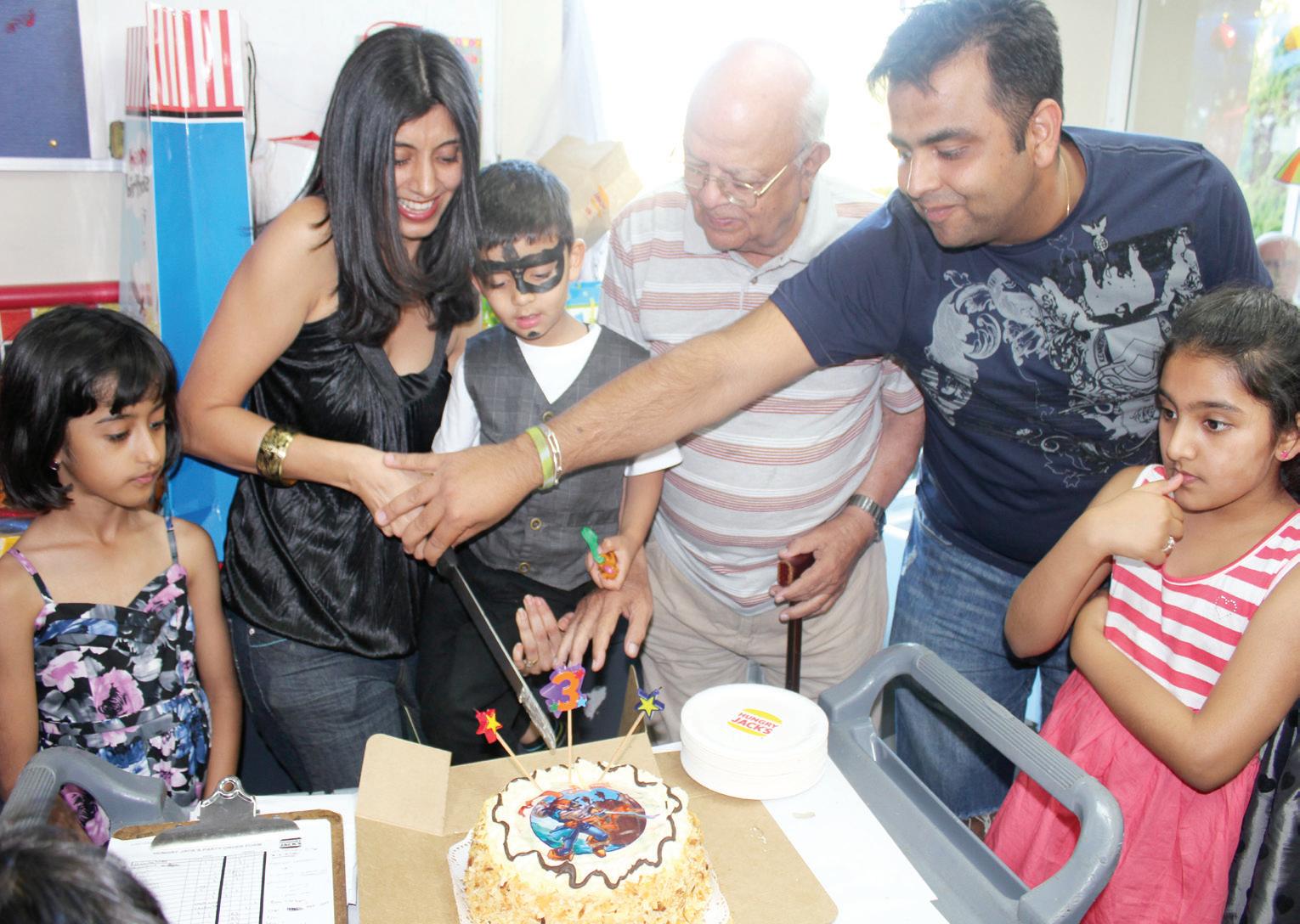






26 <> MARCH (1) 2011 INDIAN LINK www.indianlink.com.au THISMONTH
Happy couple Jinnie (Manjarika) De, daughter of Dr. Subrata and Manjusha De and Romey Nassar,son of Joseph and Nazira Nassar at their wedding at Star City, Sydney, on 20 February 2011.
Photo: Photodesign
Siona Trivedi (extreme left) celebrates her third birthday with friends
Aryan Kewalramani celebrates his 3rd birthday at with Dadaji Roop, Mum Deepa and Dad Kiran
People Places Parties Do you have a photo for this page? Email it to info@indianlink.com.au
Rajiv Ahuja turns 50
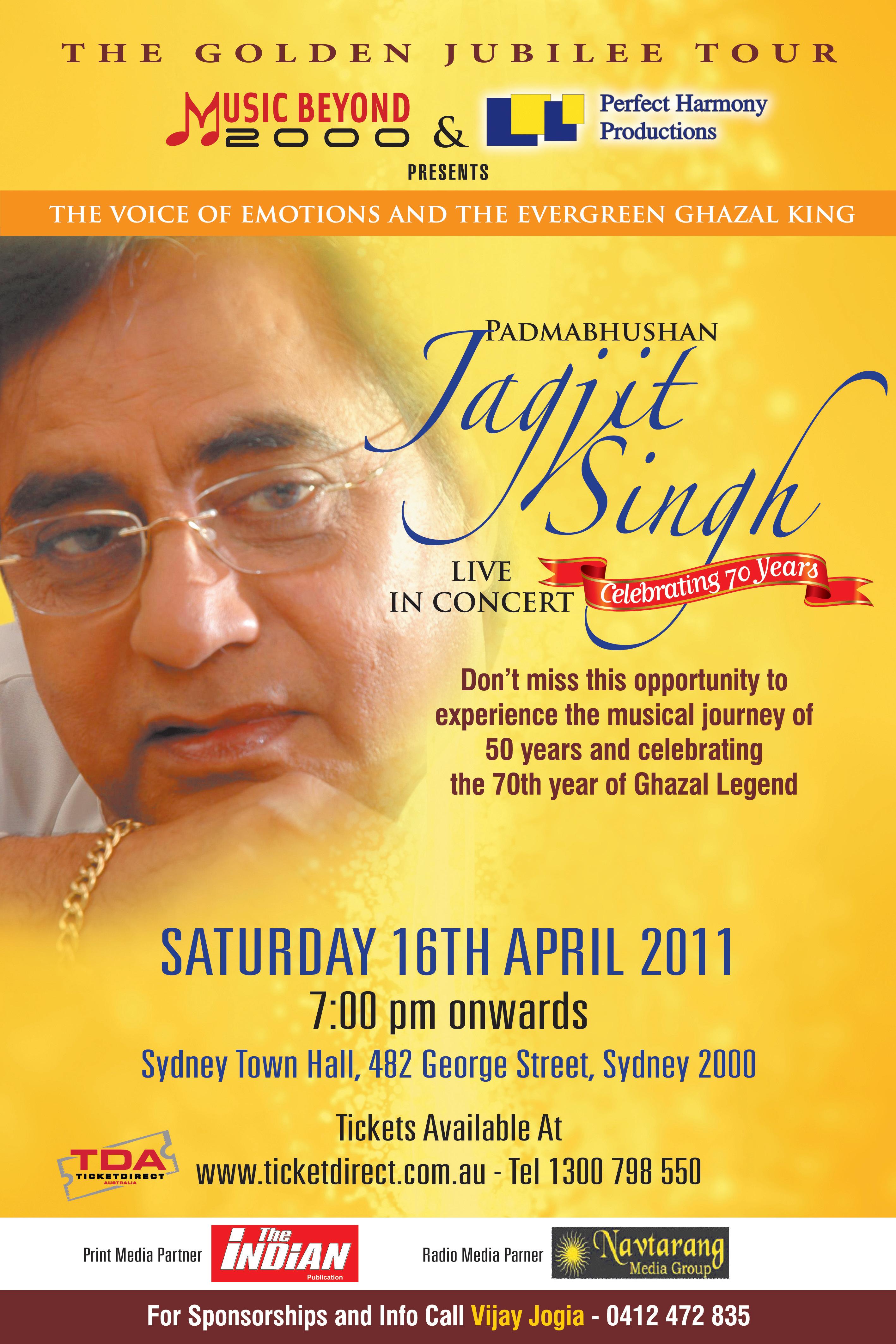
MARCH (1) 2011 <> 27 NATIONAL EDITION
Two instruments, one maestro
Adelaide’s upcoming music festival will showcase many talents, but the performance of renowned Indian flautist and shehnai player Rajendra Prasanna will be a treat


Come March, the air in Adelaide is filled with music from all over the world during the four-day music festival WOMAdelaide, which is held in open venues spread over the sprawling 30-acre Botanic Park hugging the city at its northeastern fringe. WOMAD, short for World Music and Dance, was founded in the UK and made its first Australian debut at Adelaide in 1992, as an adjunct to the popular biennial Adelaide Festival.
Over the years this has morphed into an annual mega musical event, drawing some 80,000 fans over four days to be mesmerised by two hundred plus artistes from over 25 countries. This music, arts and dance festival provides an opportunity for people to experience and enjoy the music of cultures from all corners of the globe. India, with its rich cultural traditions and a multitude of music and dance forms gets good exposure as Womadelaide regularly invites a few Indian artistes to perform. In the past they have ranged from top notch classical maestros to folkloric groups not known beyond their own state borders. Last year the star attraction was Ravi Shankar: three weeks shy of his 90s, the sitar supremo did a jugalbandi with his daughter Anoushka to the delight of a raving audience.
This year’s invitee is Rajendra Prasanna, who is a doyen in playing two instruments with equal aplomb - fluent in the flute and superb in shehnai. In a telephone interview before his arrival here, this Varanasi-born virtuoso said he was trained in playing shehnai by his grandfather Gauri Shankar, and flute by his father Pandit Raghunath Prasanna, who introduced the flute to the family that had been shehnai vidwans for five generations. So what made him take up the flute, I asked and his son Rishab, acting as translator, replied: “Pandit Raghunath realised that shehnai recital is in demand only for family festivals and
wanted his son to have a second string to the bow.” Now the flute has firmed up as the family’s favourite instrument since both Rishab, 26, and his elder brother Rajesh, 27, have become flautists in their own right.
Born to a shehnai dynasty, Rajendra Prasanna learnt this art almost from birth and from the age of four, started accompanying his grandfather at his performances. But playing the flute had to wait until he turned sixteen.
So does he play both flute and shehnai at every concert? “While performing within India, I play either the flute or shehnai depending on the occasion and what the organisers ask for. But overseas, I play both. Although they are wind instruments, each requires different skills and technique,” he answered.
Intrigued a bit, I asked if the maestro plays the same ‘kriti’ (composition) on both instruments one after the other to showcase his mastery?
“No, I play a classical composition on the flute first, then a folk song for a break followed by a different composition on shenai; never the same composition on both,” responded Rajendra Prasanna.
Rajendra Prasanna ranks equally with Hari Prasad Chaurasia for his breathtaking artistry, but his style of playing resembles that of the great Panna Lal Ghosh as it is a ‘gayaki’ (singing) style. HisisHis recitals are characterized by simplicity, playful vivacity and sweet melodiousness.
Prasanna has performed in many overseas countries. He was the first flautist and shehnai player to visit Pakistan after the Partition for a concert in 1986. He was a special invitee at the 9th Asian Music Festival in Hong Kong in 1984 and the 1988 Bulgarian Festival. He participated in the ‘Music Festival for World Peace’ organized by Maharishi Mahesh Yogi in France, Holland, Lebanon and Cyprus in 1993. He was invited to the ITC World Music Festival in America, Canada and Switzerland in 1997 to celebrate the Golden Jubilee of Indian independence. He took part in the Grammy Award winning music video organized by Pt. Ravi Shankar at the Royal Albert Hall, London in 2002, in memory of the late George Harrison.
Prasanna’s talent transcends to television as well, as he has performed for the famous tele-serial Sanjha Chulha (joint hearth) for which he received the Rose Award in 1994. Rishab added that his father has enjoyed musical forays in many other TV shows. He is presently working for the National School of Drama in New Delhi, lecturing on music.
Concluding the interview I asked if he will have a go at the didgeridoo, the well-known wind instrument of Australia’s indigenous people.
“Every instrument is different, even within the same family,” was his diplomatic reply.
Rajendra Prasanna performs in Womadelaide on March 13 and also in Sydney, Brisbane and Melbourne.

28 <> MARCH (1) 2011 INDIAN LINK L P Ayer
www.indianlink.com.au STAGE
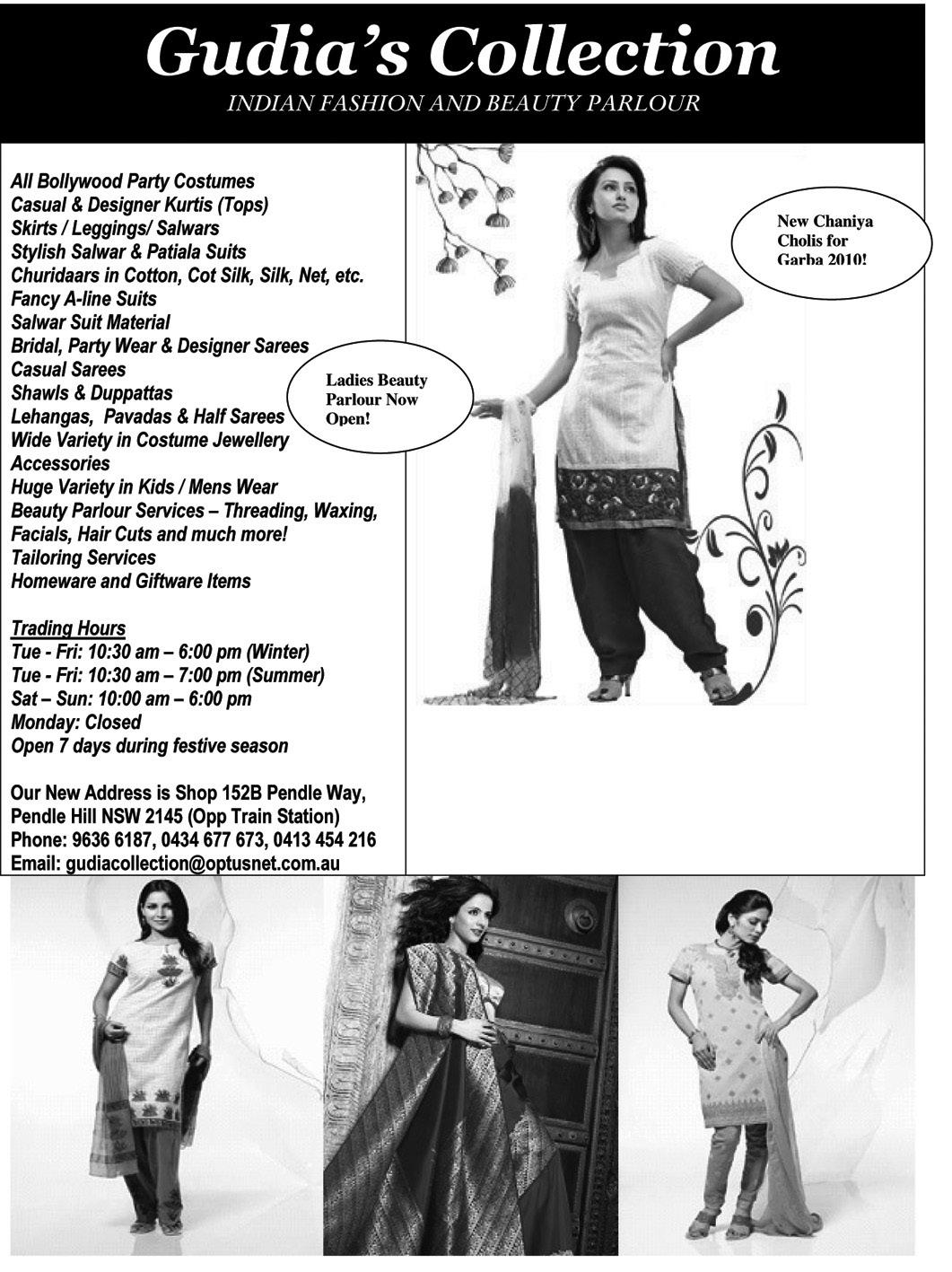



MARCH (1) 2011 <> 29 NATIONAL EDITION Unique Education and Migration Education Consultant (For Student Admissions) E-visa Facility Available For expert coaching in Lowest Fee Guaranteed IELTS ENGLISH GURU Suite -1, 71 A Macquarie St, Parramatta, Phone 0411 520 546, 9687 9741 www.englishguru.com.au • Power Packed Sessions. • One and Two Weeks Crash Courses Available. • Money completely refundable, if not satisfied with the first tuition session.
Two pioneering musicians
Wherever in the world Carnatic music is practised, two great music figures are honoured every year. The grand composers Purandaradasa and Thyagaraja, are remembered annually in special tributes (known as “aradhanas”) organised by devotees of music. The tradition has been ongoing for centuries, and is even
Purandaradasa Aradhana
2011 is the eleventh year of paying homage to Sri Purandaradasa by the Carnatic music fraternity in Sydney. A legendary composer and poet, his creations of the 16th century in Kannada and Sanskrit live on and inspire every student of Carnatic music to this day.
The lyrical beauty of Sri Purandaradasa’s compositions coupled with their melody have vast appeal because of their simplicity and ease of understanding, not to mention the “bhakti bhaava” that was the route he chose for his salvation. His compositions, reportedly numbering over 450,000 can be classified as keerthanas (also known as devaranamas), bhajans, padas and ugabhogaas. Despite being independently very wealthy in his vocation as owner of a jewellery business, Sri Purandaradasa renounced the world, became a saint, and devoted his life in the service of Lord Vishnu and His avatars. He also served as the “aasthana vidwaan” (court musician) in the royal court of Sri Krishna Deva Raaya, emperor of Vijayanagara.
Sri Purandaradasa gave every creation his own “mudra” (signature or pseudonym) which is “Purandara Vitthala” – a title conferred upon him by his guru, Sri Vyaasaraaya.
The Purandara Committee had the full support of the Vishwa Hindu Parishad of Australia Inc. to conduct the Aradhana in homage of this great saint. The Committee organized a music competition on February 13, in which several students of Carnatic music participated. The Aradhana on February 20 was marked by singing of “Navarathna Maalika” (compositions of Sri Purandaradasa) by a group of Sydney artistes. This was followed by a prize distribution ceremony, in which students who performed outstandingly during the competition were felicitated.

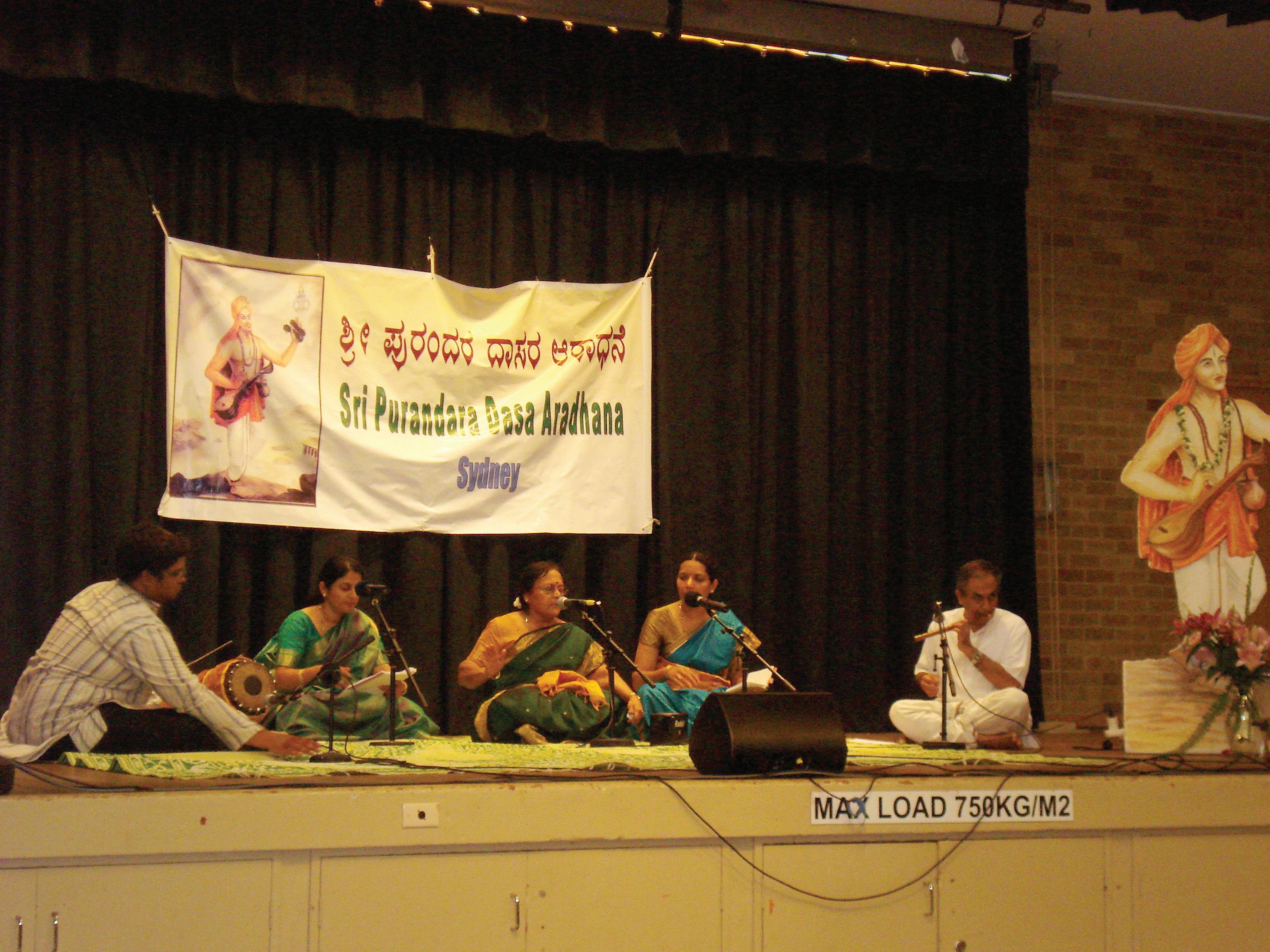
Next followed a talk and an appeal by Smt. Akila Ramarathinam of the Vishwa Hindu Parishad (VHP). She briefed the audience about the activities of the VHP, which aimed at promoting the Sanskrit language,
come forward.

The first half of the Aradhana celebration was devoted to musical renderings by children and youth in smaller groups, guided on stage by well-known music teachers in Sydney and they gave an excellent presentation of Sri Purandaradasa’s compositions.
The morning session culminated with a very enlightening talk on “Great Minds Think Alike” by Prof. Madhusudhana, a retired Professor from the University of New South Wales. He spoke of similarities between the advice given by “Daasa Saints” and the wisdom of thinkers from other faiths, for example Buddha’s teachings and comparisons with St. Matthew’s teachings. He explained how the Saints concurred on “forgiveness”, “control of anger” and “pursuit of wealth”. Prof. Madhusudhana concluded his talk with a mention of how Sri Purandaradasa advised on everyone’s submission to Lord Vishnu and to avail of the “generosity of the Almighty” and His role as a protector.
a detailed explanation of the themes/compositions chosen by the artistes before they were performed on stage.
The Aradhana concluded with a “Maha Aaarathi” by Navarathna group singers. Maha Prasad was then distributed to the audience of hundreds. This is a tradition that deserves to continue and spread to Sydney’s young and old.
THYSELF AS SOUL
Sant Mat is a practical spiritual path based on meditation, ethical living, service to others & love for all creation. Its goal is to enable the soul to return & merge into its source; the purpose of human life described by mystics of all traditions. Discipline & dedication are essential, as is the help of a competent living master. Entry is via a preparation program. There is no charge at any stage.
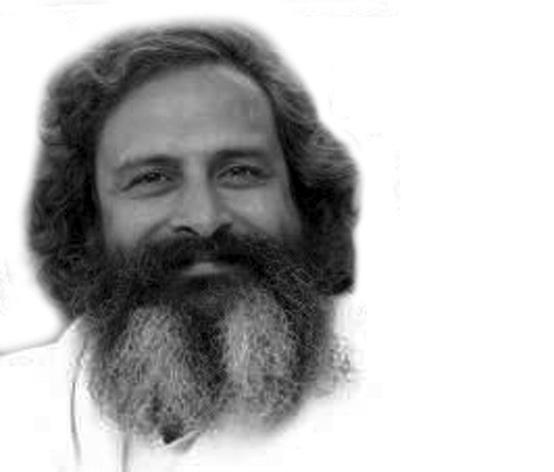
30 <> MARCH (1) 2011 INDIAN LINK KNOW
For more information... Contact Sita 0408 880 155 www.santmat.net.au Know Thyself As Soul Foundation is a not for proft association incorporated in NSW
CLASSICALSCENE
Malli Iyer
remembered with fondness
Thyagaraja Aradhana
I sat in astonishment as three youngsters sing Rama Katha Sudha in Raga Madhyamavathi. What confidence! The purity of diction and the control over Raga and rhythm, made one feel as though one was back in Chennai, listening to maestros perform.
But this was right here in Sydney, at the annual Thyagaraja Aradhana, staged at the Dundas Community Centre in late February over two days.
The enthusiasm shown by these and other youngsters that delivered other compositions of saint Thyagaraja was amazing. The same should be said of the young girl that presented Mokshamu Galada in Raga Saramathi. (These two are in fact the most moving of Thyagaraja’s compositions. The first depicts Rama’s story as the one that washes us clean of all Karma –“Karma bandha jvalanabdhi navae kaliharame”. The second one asks, “Is there no salvation for one who is not a jeevan mukta?”)
What is admirable is that most of these youngsters are born and brought up in Sydney. They take pride in learning and performing this art; the traditions of Carnatic music are indeed safe in their hands.
The event this year saw many performances – by both teachers and mature students. One heard many compositions, all charming: Rama Neeyada, Nidhi Chala, Jnana Mosagaradha, Kalasa Vardhi, Chakkani Raja, Raksha Bettare, Sangeetha Shastra Jnanamu and others. While some were solo renditions, most were presented by the gurus with their shishyas. It provided a unique opportunity to enjoy some of the compositions which are rarely heard as well as those that are popular. The students who are still learning had their moment too. The second day of the program was set apart for them. There were as many as fifty four taking part. I should mention of the youngsters, again born and brought up in Sydney, who gave accompaniment on violin and mridanga to many of the singers on both the days. One should praise their sense of cooperation.

Thyagaraja is the very soul of Carnatic music; he is the one that has enriched it with his compositions, mostly in the Telugu language, and they are marked with characteristic spontaneity. Those who practise the art form owe a great debt of gratitude to Thyagaraja, so much so that Thyagaraja aradhana is observed widely throughout the world. Sydney is no exception. Every year the Sydney Music Circle organises this event where in a few hundred musicians and lovers of music take part. It gets highlighted in every music lover’s calendar as a “Not to be missed event”.
Sunday morning was the highlight of the celebration - the mass rendering of the Pancha Ratna Kritis of Thyagaraja, the ‘five gems’ consisting of Jagadananda karaka, Dudukugala, Sadinchane, Kanakana Ruchira and Endaro Mahanubhavulu in the Ragas Nata, Gaula, Arabhi, Varali and Sri. Singers, instrumentalists and listeners all joined in and experienced the thrill it gives while rendering these compositions. Welcoming the gathering, Revathi, one of the organizers, had noted: Music speaks what cannot be expressed, Soothes the mind and gives it rest, Heals the heart and makes it whole, Flows from the heaven to the soul How true the words seemed, by the end of this wonderful event.
Sydney Srinivas
An Adelaide tribute
One of the eagerly awaited and well-attended Indian cultural programs each February in Adelaide is Shruthi Adelaide’s St. Thyagaraja Aradhana (anniversary). When the event was first presented in 1993 there were only five middleaged female singers, all amateurs, holding full time professional jobs. This year the dais was full, half of the participants school and uni students.


St.Thyagaraja (1767 – 1847) is a Carnatic (south Indian classical) music legend. He had composed some 24,000 kritis (songs), most of them in praise of Lord Ram, his ishta deveta (favourite god). That’s like one kriti every day in his life! No Carnatic music concert - vocal or instrumental - is complete without a few of his compositions sung by the artiste. Only some 700 of his compositions have been found and published St. Thyagaraja’s devotion to Ram was so intense that he was said to have had visions of the Lord a few times. Hence the reverential prefix ‘saint’. He
passed away as he was singing the glory of Ram in the presence of his disciples to whom he had earlier indicated the exact moment of his end. This day is celebrated every year (in January) in front of his samadhi in Thiruviyar (in Tamil Nadu) at which several hundred singers render the saint’s compositions all day long. This year was the 164th - a mass musical event in the open long before the Woodstock was thought of.
Thyagaraja Aaradhana is celebrated all over the world wherever Carnatic music lovers live, Cleveland (US) being the largest outside of India. In Australia, Sydney leads the fray. Adelaide has been conducting this aradhana since 1993, just two years after it was started by a small band of music lovers called Shruthi, to provide a forum for local singers to showcase their talents. It now presents four programs a year by the locals and one or two concerts by overseas Indian artistes.
LP Ayer
MARCH (1) 2011 <> 31 NATIONAL EDITION
www.indianlink.com.au
Finding a space to fit in
The desi connection continues to grow at Sydney’s annual Mardi Gras festival
BY FARRHA KHAN
It’s a lovely night to go to a Bollywoodstyle play, and walking into the Cleveland Street Theatre, I know I’m in for a treat.
In the Space Between , a Trikone Australasia production with an allmale cast, deals with homosexuality in the Indian community and the lack of tolerance and acceptance. But it’s not meant to be a play with an agenda.
“It’s supposed to be entertaining, but with a strong message,” Kunal Mirchandani, the creative director of the play, explains.
The play itself is a part of the 2011 Sydney Gay and Lesbian Mardi Gras festival. It also boasts to be the only gay ‘Bollywood’ production to staged in Australia this year, which to be honest, isn’t too surprising.
The subject matter of this play will probably turn off many people right from the word go, but support for this play has been rather strong, even amongst the Indian community.
“The response from the Indian community has been good, but there are elements that will probably repulse them,” says Kunal candidly. But in the end, Kunal explains, In the Space Between is simply about how “love triumphs all.”
Waiting with a large mixed crowd, I notice the theatre is decorated in true Bollywood style, giving us only a hint of what to expect. The play itself is a combination of vignettes. The theatre is packed as the light dims, and we are all transported to India in the 1920s.
The play begins with the story of unrequited love between a temple choreographer and the Maharaj of the region. What began as a childhood friendship has transformed into something deeper. But due to the Maharaj’s duties and social obligations, they can only remain but friends.
The temple choreographer tells his student about the story of Arjun and Krishna. The story unfolds with Arjun the archer being jealous of Krishna’s consort Radha. Out of his pure, strong love and desire for Lord Krishna, Arjuna goes on a journey to transform himself.
Transported back to modern-day Sydney, we are introduced to Amit, a very happy young homosexual cross dresser living in Kings Cross. That is, happy until his brother from India arrives in


Sydney. Amit struggles to tell his brother the truth, fearing rejection, while Rahul struggles with accepting that his brother is a homosexual.
Amit and Rahul both read the story of Arjun and his transformation into Arjuni.
After the intermission, we are taken back to India in 1947, on the brink of Partition. A Hindu and a Muslim university student begin a friendship in Lahore during the political anxieties faced 6 months before the division of India and the formation of Pakistan. As they accept their love for one another, things come to a head when someone close is killed.
The Hindu student Amit reads the religious text Padma Purana at the beginning of this Act; Imran, his Muslim lover and friend reveals that in the end Krishna left Arjuni. Along with the country, they too are torn apart from each other.
We then get another glimpse into the religious story of Arjuni and a visual representation of Arjuni being torn apart by culture, tradition and society. The play ends with Arjuni needing to conform and return to being Arjun, the supreme archer of Mahabharata.
The play was conceived 8 months ago as the cast and writers got together.
“There were so many different stories to tell, we had to decide which ones to pick and how to tell them to make it all one story,” Kunal Mirchandani reveals.
The way the story unfolds, with the realization that perhaps each story is interconnected through generations, made me smile with the knowledge that the same Padma Purana text has been passed down from father (Amit in Lahore in 1947) to son (Amit in Sydney in 2009).
Sameer Malik, a cast member, believes this play to be an opportunity to have a voice and bring awareness of the gay Indian community.
“Usually we have to move away from the Indian community because being gay isn’t well accepted or tolerated,” he notes. “This play, with the Bollywood element, is a great way for us to embrace our Indian culture, still be ourselves and just have fun”.
But more than try to force ideas on the audience, Kunal hopes that it will at least promote discussions about homosexuality in Indian society.
“When people talk, even in debate and disagreement, the important thing is that it is being talked about. It can become a
more commonplace idea, more visible,” explains Kunal.
But what will definitely get people talking is the use of the real religious text, the Padma Purana

“It is real. But no one really knows about the text because it’s never really spoken about,” states Kunal.
The story of Arjun and his transformation into a woman to fulfil his unrequited love, resonates throughout the play. It gives the play a backbone that strengthens the message of the three vignettes (India in the1920s, Lahore in 1947 and Sydney in 2009).
At the very end, during their bows to another Bollywood song, the actors bring down members of the cheering audience to dance with them on the stage, involving those present in their celebration.
The set is well designed and minimal, but with a large projection on the back wall that helps transport the audience to the different eras of the story. The costumes are eye-catching, allowing the characters to come alive on stage. The fact that the female characters are played by males does not deter or distract from the play’s story at all, because of the costuming.
Although the play has a truly strong and wonderful message of acceptance, I have to say what was most brilliant about the night was all that dancing. The music choices are very well placed, with songs from Bollywood films as well
as religious celebratory songs, and the unique presentation style truly makes it their own.
At the very end, during their bows to another Bollywood song, the actors bring down members of the cheering audience to dance with them on the stage, involving those present in their celebration.

The set is well designed and minimal, but with a large projection on the back wall that helps transport the audience to the different eras of the story. The costumes are eye-catching, allowing the characters to come alive on stage. The fact that the female characters are played by males does not deter or distract from the play’s story at all, because of the costuming.
The actors do a wonderful job and keep the crowds either laughing with well-placed humour, or on edge with drama. My favourite line that I can still quote would have to be:
Amit (1947): I can’t believe I kissed a boy!
Imran: I can’t believe I kissed a Hindu!
After the play, many of the audience wait for the actors to personally congratulate them for such a wonderful performance. The cheers they receive are worthy of the performance, with much clapping to the Bollywood songs and dances.
The play sends out a strong message, but in true Bollywood style… there is even a dream sequence!
32 <> MARCH (1) 2011 INDIAN LINK
MAINSTREAM
It’s Khajuraho at Mardi Gras!
events. The 34th Mardi Gras parade took off on the evening of March 5, with colourfully decorated floats and costumed revellers in an incredibly homogenous mix of glitz, glitter and glamour, all cheered on by spectators of over 20,000 in number.
Thirty years since its inception, Mardi Gras is a symbol for the gay, lesbian and transgender population in Australia, and this year’s theme of ‘Say Something’ had a specific focus on the legalization of same-sex marriages.
As vignettes of Prime Minister Julia Gillard and Opposition Leader Tony Abbot marched alongside couples dressed in their wedding finery, a loud cheer from the spectators drew attention to the subcontinent float presented by Trikone Australasia, manned by the South Asian gay, lesbian, bisexual and transgender (GLBT) community.
The float, resplendent with huge artwork of visuals culled from the Khajuraho temple sites of Madhya Pradesh, made an interesting and unique presentation of India’s heritage. According to the organisers, erotic poses depicting same sex individuals were deliberately chosen as an indication that such relationships were not a new concept, but existed even around the 10th century. The theme of the Trikone exhibit was the collective brainchild of the members who worked hard on a limited budget to develop a stunning combination of history, heritage and art that was both tasteful, real and eye-catching.
Following the float was a contingent of at least 60-70 members of Trikone, representing their community, resplendent in the colourful costumes of their countries of origin. There were representations from the sub-continent, south east Asia, including Indians, Sri Lankans, Fijians, Nepalis, Bangladeshis, among others. The contingent received a resounding
welcome from spectators, particularly as they followed a well-choreographed dance sequence and actually stayed in step through the performance.
The shimmering bright chanya cholis, kurtas, turbans and traditional jewellery gave the segment an aura of festivity that blended in perfectly with the joi de vivre of the Mardi Gras. Although the broader theme of same sex marriages was considered, the lack of time prevented the organisers from displaying a couple in traditional bridal attire.
Of the 135 entrants, the Trikone Australasia float seemed to attract a lot of attention, with spectators cheering and shouting as the float moved through the parade. The atmosphere was that of gaiety and fun, and a good indicator of the success of this festival was that it has been acclaimed as the most peaceful one ever, with a minimum amount of arrests made for minor misdemeanors.
Trikone Australasia was founded in 2008
with the aim of offering a supportive, empowering and non-judgmental environment where GLBT South Asians can meet, make connections, bond and proudly promote awareness and acceptance of their sexuality in society.

South Asians affiliated with Trikone Australasia trace their ethnicities to Afghanistan, Bangladesh, Bhutan, Fiji, India, Maldives, Mauritius, Myanmar (Burma), Nepal, Pakistan, Sri Lanka and Tibet. The number is increasing every year, and the organisation hopes to have a larger and more varied representation at future festivals.
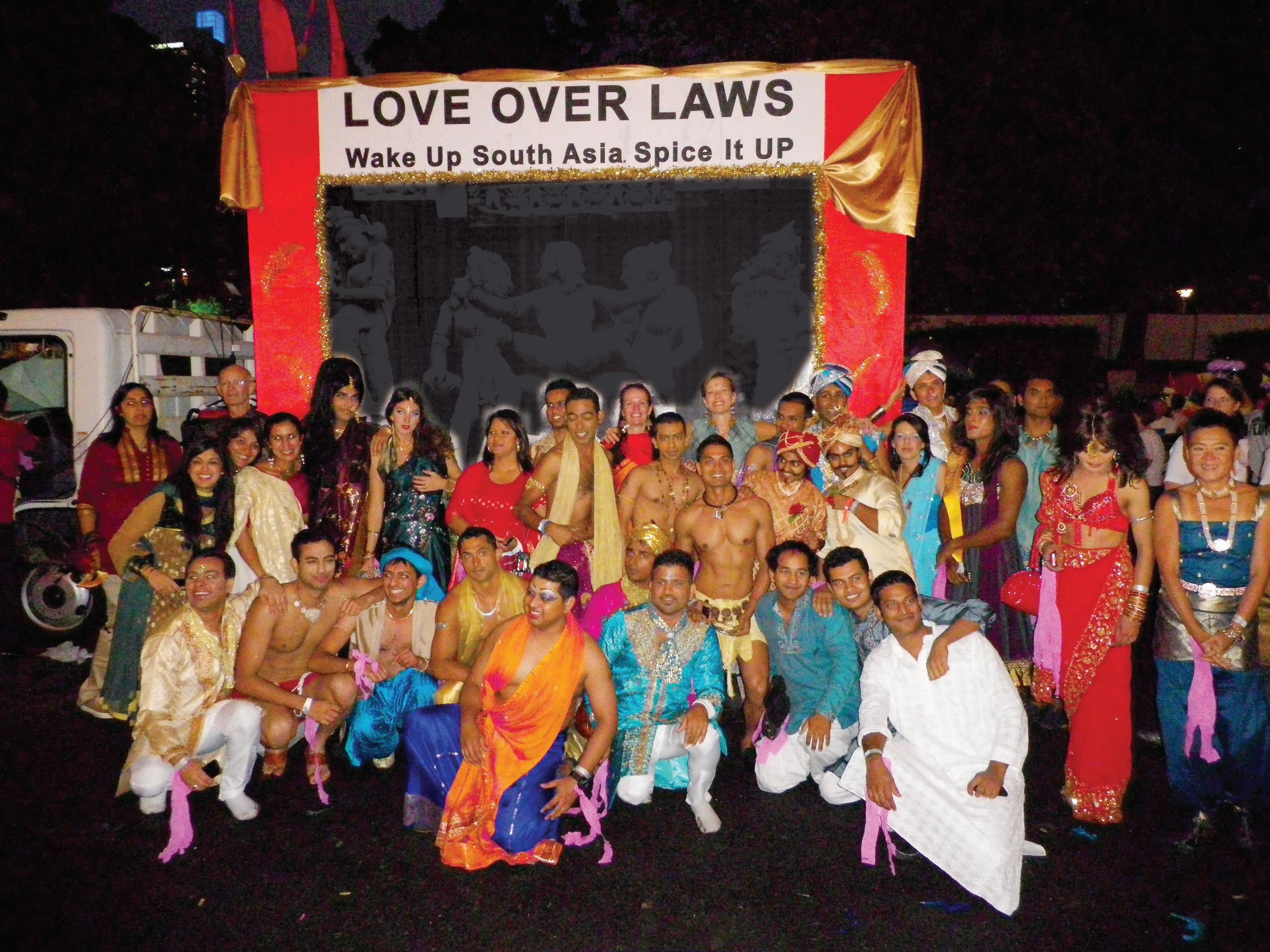

Trikone Australasia actively works against all forms of oppression based on race, gender, religion, class, sexual orientation and other identities. Through their website and cultural nights, film festivals and Bollywood dances parties, Trikone works to nurture and empower the South Asian GLBT community in Sydney and Australia.

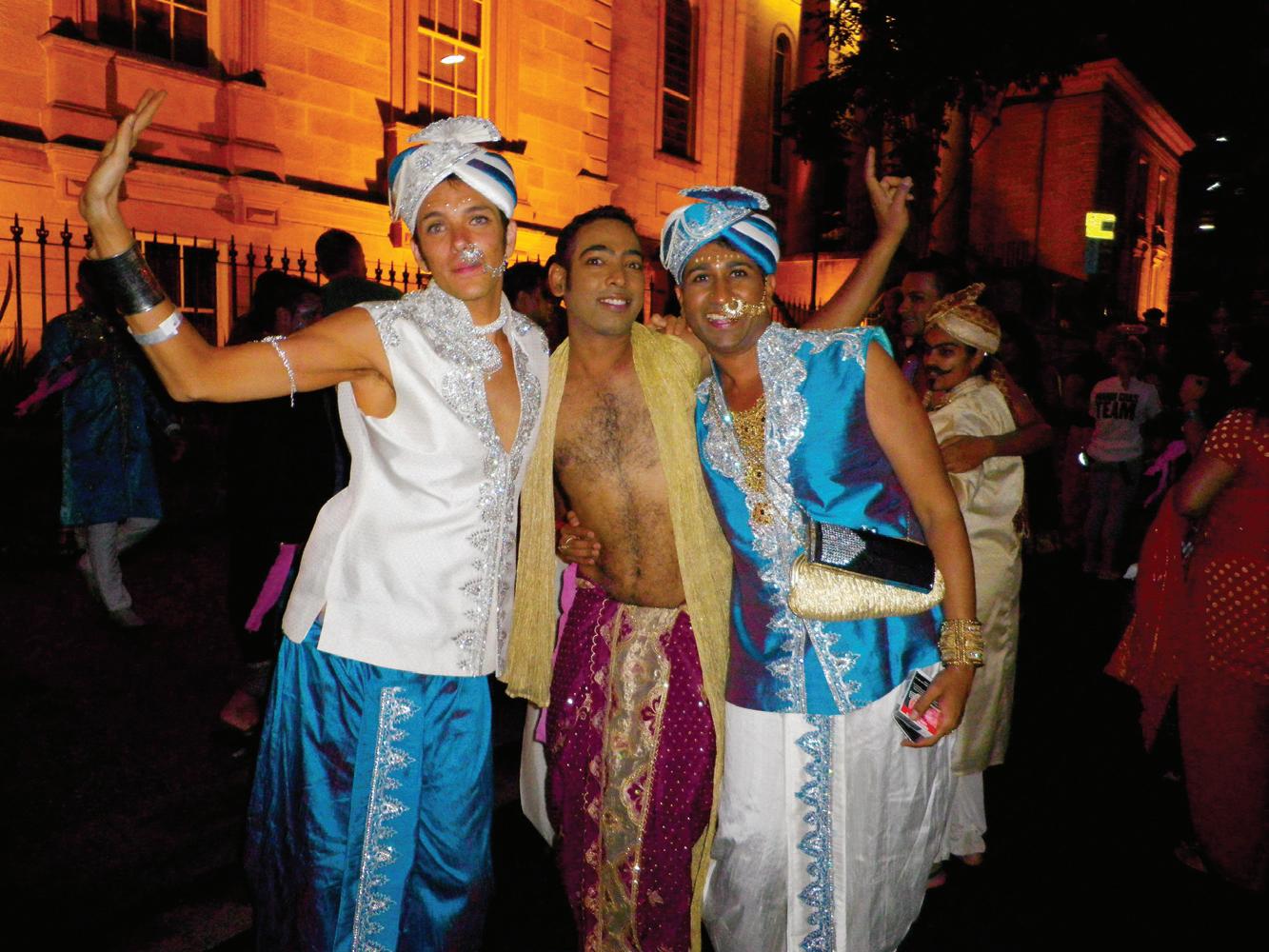 Prashant Dixit
Prashant Dixit
MARCH (1) 2011 <> 33 NATIONAL EDITION www.indianlink.com.au
Lights Camera Action 2011 Indian Film Festival comes to town
Australian Indians and Bollywood aficionados will have their hands full as the annual Indian Film Festival (IFF) rolls into town. The brainchild of Mitu Bhowmick Lange of Mind Blowing Films, this year’s festival follows the success of the inaugural festival in 2010.
This year the film fest celebrates and showcases the best of Indian cinema. Over 30 films are to be featured, including 15 Australian premieres, in a program which not only brings in the razzmatazz of the contemporary Bollywood scene but also celebrates the depth of contemporary Indian films.
Special Guests
Last year, the chief guest was acclaimed Bollywood actor Rani Mukherjee who charmed the audiences and her fans in Australia with her

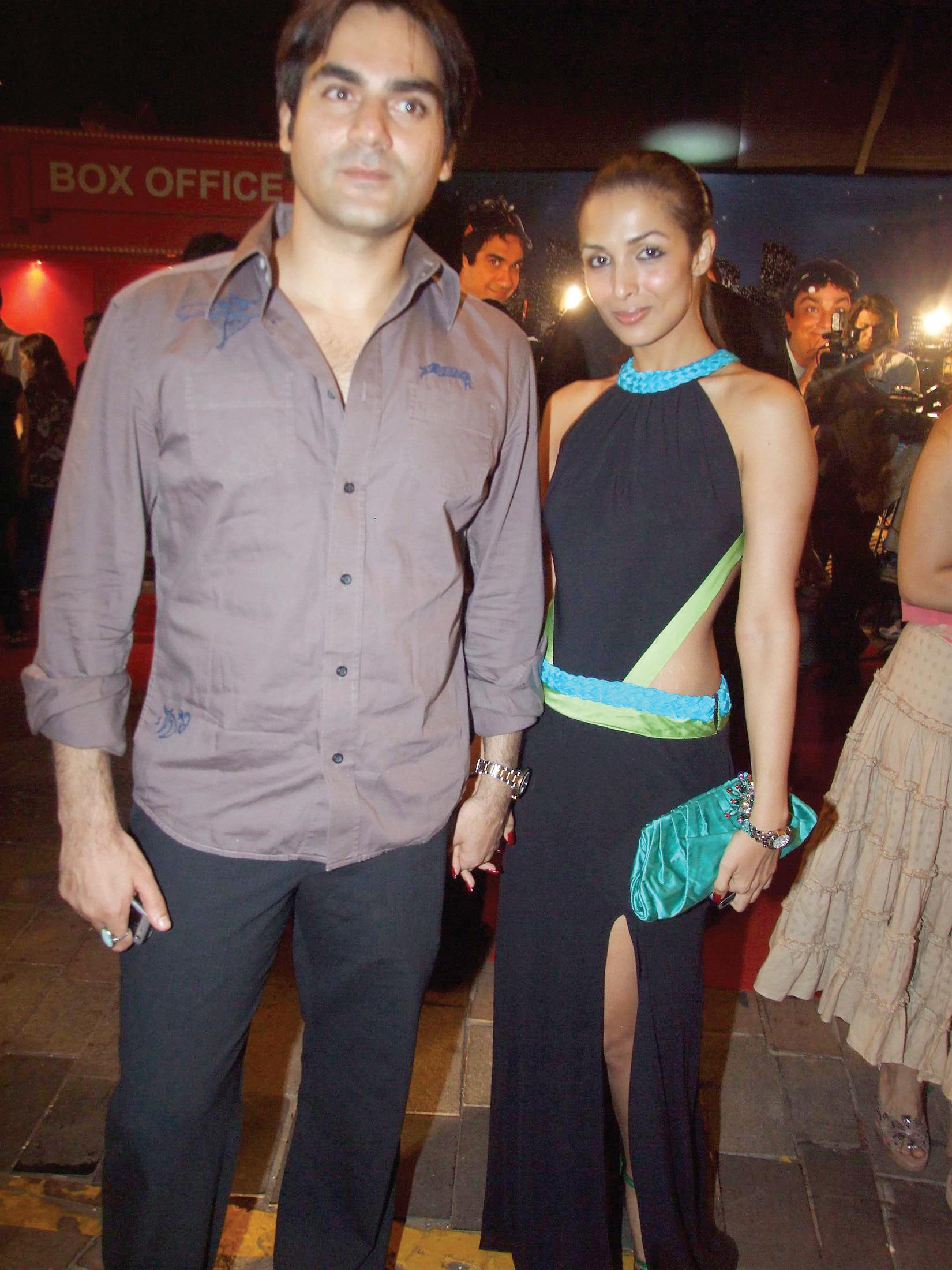
electrifying smile and quick wit as she fielded questions during the Q-and-A sessions for her movies. This year the Indian Film Festival has announced a number of special guests including some of India’s most successful actors – acclaimed multi award winning actor/producer Juhi Chawla star and actor Malaika Arora Khan pop sensation and new acting talent, Filmmakers visiting down under also include directors Kabir Khan Gupta ( Aamir ), Leslee Udwin Ornirban Dhar ( My Brother... Nikhil turned producer Arbaaz Khan, introduce their films and discuss their careers within the world’s biggest film industry.
Mitu Bhowmick Lange says, “This year we are proud to present a broad range of films from traditional Bollywood - which show India at its

34 <> MARCH (1) 2011 INDIAN LINK
PROMOTION
tackle normally taboo subjects. Director Ornirban ‘Onir’ Dhar and star Juhi Chawla will be in attendance. The much-loved Vidya Balan, perhaps more so than any other actress, represents the changing portrayal of women in Hindi films. Her work will be celebrated in the Vidya Balan Retrospective, a selection of four films. Other film highlights include the tongue-in-cheek comedy Tere Bin Laden starring festival guest Ali Zafar; and Just Another Love Story which narrates the life of a fading gay actor in India’s theatre world.
Short Film Competition
One of the objectives of the IFF is to foster greater understanding and collaboration between the Australian and Indian film industries. Following on its success in 2010, the IFF Western Union Short Film Competition is aimed at discovering the future Peter Jacksons, George Millers and Rajkumar Hiranis of the film world. Entries for the 2011 competition have been created around the theme of ‘Dreams’. Judges are director Kabir Khan; actor, writer and producer, Mick Molloy; writer/ director, Rajkumar Hirani; and directors Imtiaz Ali and Shimit Amin who will select three winners – one international, one from Australia, and one from New Zealand. Winners will each receive return air fares to either Mumbai or Melbourne and be given opportunities to meet with key figures in the respective country’s film industry. Each of the winning films will be screened at the 2011 Indian Film Festival and on SBS in Australia, Triangle and Stratos in New Zealand, and World Movies in India. The Australian and International winners will be announced on the opening day of the festival.
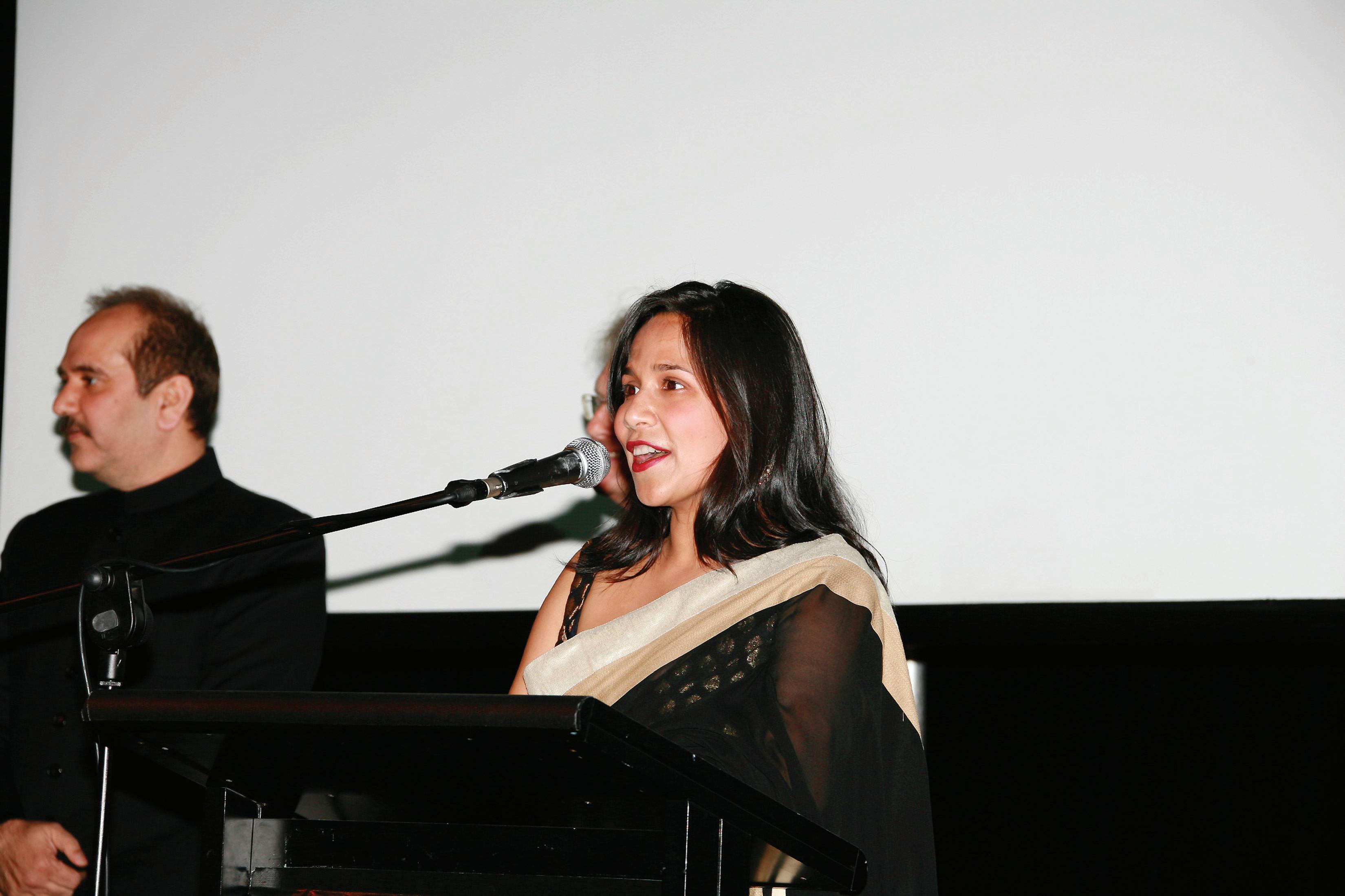
Special events in Melbourne
A major attraction will be in Melbourne where the energy and colour of the 2011 Indian Film Festival will spill out of cinemas and on to the street with a number of special events including a Bollywood dance competition and a Bollywood dance Guinness Book of World Record attempt , both co-presented with the Moomba Festival and taking place at the Moomba Cultural Quarter on the banks of the Yarra River, a glamorous gala and a number of free screenings under the stars at Federation Square.
Indian Film Festival: Bollywood and Beyond will tour Sydney (9-19 March), Melbourne (11-20 March), Adelaide (2229 March) and Auckland (24 March to 3 April).
SPECIAL EVENTS
dancers and win prizes! Bollywood supermodel Malaika Arora Khan and celebrated directors Rajkumar Gupta and Kabir Khan are the special judges and guest Arbaaz Khan will present the lucky winner/s with a prize.
2pm Guinness Book of World Records
Bollywood Dance attempt in association with Moomba Festival @ Moomba Cultural Quarter on the banks of the Yarra River
Ever wanted to do something momentous, something outrageous, something historic? Well here’s your chance. Join the crowds as they try to break the world record for the ‘Largest Bollywood Dance Class’ and gain a place in the Guinness Book of World Records!
7pm Gala Awards night @ BMW Edge, Federation Square Invitation only event
Sunday 13 March
2pm Kabul Express @ Hoyts
Melbourne Central Q&A with director Kabir Khan
6pm Tere Bin Laden @ Hoyts
Melbourne Central
Q&A with actor Ali Zafar
8pm West is West @ Hoyts Melbourne Central
Q&A with director Leslee Udwin
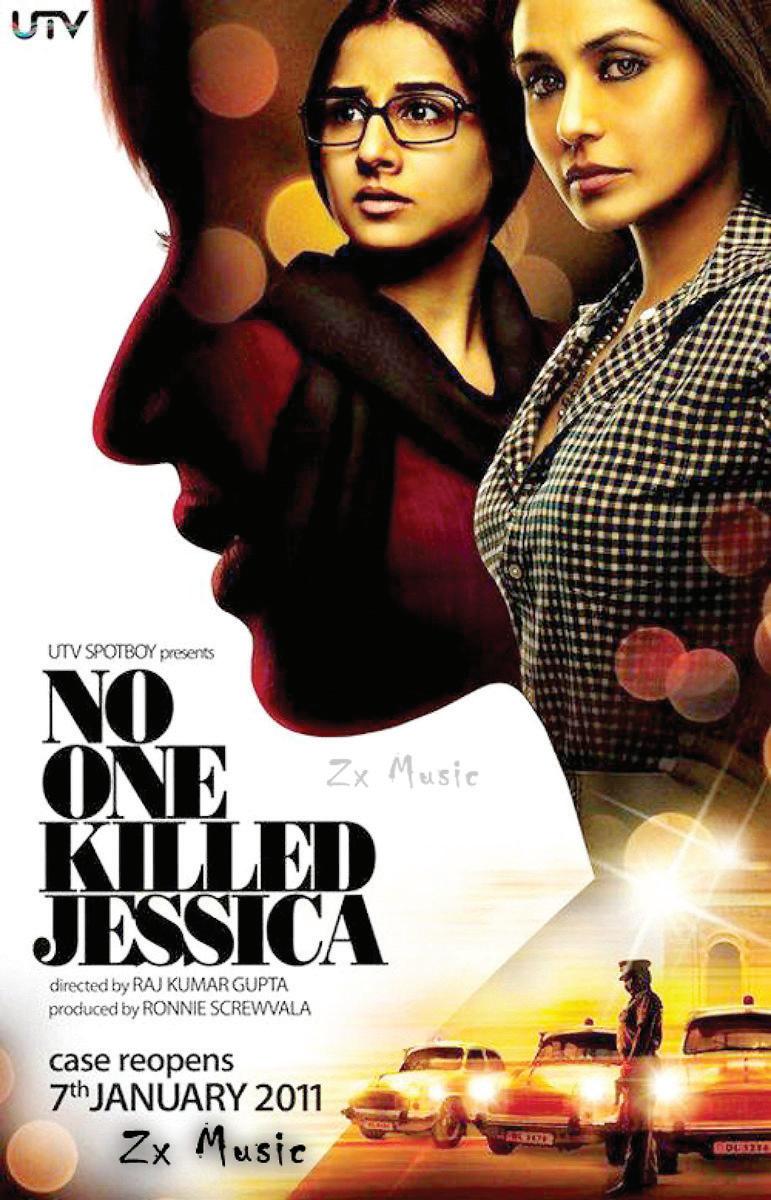
Sunday 20 March Closing Night
7.15pm I Am @ Hoyts Melbourne Central
With special introduction by director Ornirban ‘Onir’ Dhar and actress Juhi Chawla
FREE SCREENINGS AT FEDERATION
SQUARE:
Saturday 12 March
9.30pm Lage Raho Munna Bhai
Wednesday 16 March
9.30pm Aisha
Thursday 17 March
9.30pm I Hate Luv Storys
Friday 18 March
9.30pm Tees Maar Khan
ADELAIDE
Tuesday 22 March Opening Night
6.30pm I Am @ The Mercury Cinema
With special introduction by director Ornirban ‘Onir’ Dhar and actress Juhi Chawla
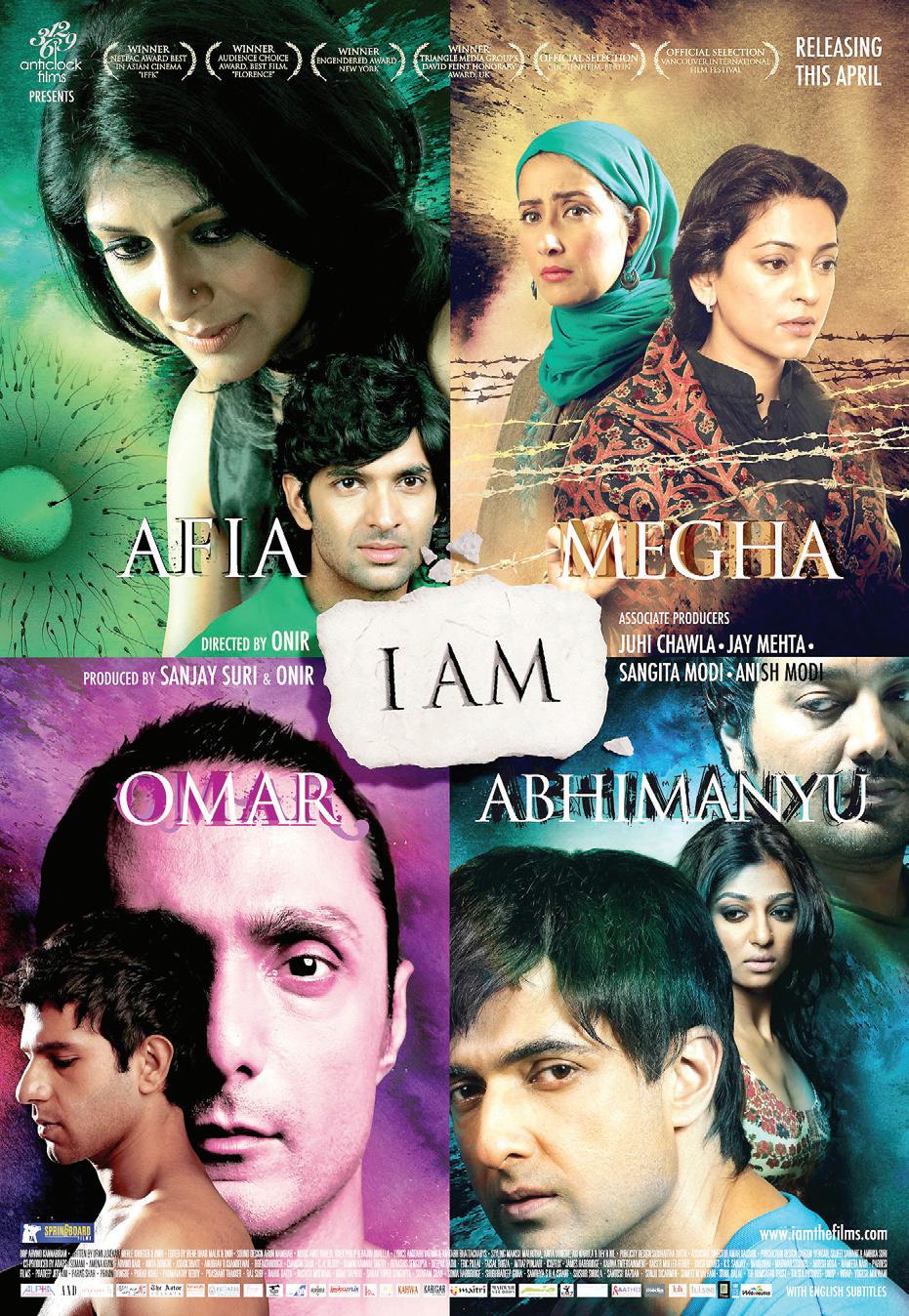
MARCH (1) 2011 <> 35 NATIONAL EDITION
Festival Director Mitu Bhowmick-Lange
Mindset against women has to change: Women MPs
Even as India boasts of reserving 50 percent seats for women in panchayats (village councils) and awaits passage of a bill to reserve one-third of seats in parliament and state assemblies for the fairer sex, women MPs feel that true gender equality will be achieved only when the social mindset changes.
On the eve of International Women’s Day (March 8), women in the top slots of power say that even though the situation is improving, a lot more needs to be done.
“The condition of women has changed a lot, the government has framed several laws and we are working towards giving them a level playing field, but the problem lies in social mindset,” National Commission for Women (NCW) chairperson and Chittorgarh MP Girija Vyas said recently.
“Both in rural as well as urban areas, women are not treated at par with men,” she said.
Communist Party Of India-Marxist leader and Rajya Sabha member from West Bengal Brinda Karat said the condition of women presented a mixed picture.
“It is a mixed picture, there is some good and some bad... more girls are in school, more women are working, more women are today able to break barriers and are full of confidence. However, the bad thing is that the potential and opportunities become fewer down the economic ladder, particularly in rural areas and in urban slums,” stated Karat.
“A large majority of poor women are still prisoners of social system and they are both economically deprived and socially discriminated,” she said.
Nationalist Congress Party MP from Baramati (Maharashtra), Supriya S. Sule says that issues like female foeticide have
to be fought against.
“The condition of women is getting better, but there are problems like female foeticide, missing girl children, especially in age group 0 to 6, and the discrimination between girls and boys,” said Sule.
Some members also opined that the passage of the Women’s Reservation Bill, which will reserve one-third seats in the Lok Sabha, Rajya Sabha and state assemblies for women, will be a great step forward.
“Today, even as women are financially independent, they are not socially independent. There are laws, but implementation needs to be focused on. Reservation for women in panchayats has changed a lot. Once the women’s bill is passed and more women come to parliament, the mindset will change.
Men need to understand that women are companions, not competitors,” Congress MP in Rajya Sabha from Himachal Pradesh Viplove Thakur said.
Speaking on similar lines, Congress MP from Mumbai (North Central) Priya Dutt said reservation can prove to be an important step.
“The condition of women in the country has improved. But it is important to give them level playing field and opportunity. I believe providing a 33 percent reservation is important in this direction,” she said.
Brinda Karat accused the government of being non-committal to the passage of the bill.
“Not bringing the Women’s Reservation Bill will be a discrimination against women. The question is ‘if’ the women bill comes. The ‘if’ symbolises lack of political commitment to walk the talk,” Karat said.
“If the government was committed to strengthening democracy, it takes two minutes to walk from Rajya Sabha to Lok
Sabha,” an angry Karat added.
Minister of State for Textiles Panabaka Lakshmi, however, said that even though the government was committed to the cause of the bill, taking decisions in a coalition was a difficult task.
“I wholeheartedly support 33 percent reservation but the government cannot take a decision unilaterally as it is a collation government,” she said.
Taking a different approach to the issue, Sule said that political reservation in itself was not enough.
“One bill will not solve the problem. The need is for action from all sides. It’s not about women being in politics, there are a lot of things which need to be considered. The problem is that most of the discrimination is considered a way of life and is socially accepted. The problems are in the developing nations. In developed nations, women have equal rights,” she said.
According to the NCW chairperson, the empowerment of women requires a multi pronged approach.
“The need is of a multi pronged approach involving all wings of governance and civil society. Firstly, there should be laws, and they should be executed in a sensitive manner. For this, the law enforcement agencies have to be sensitised,” Vyas said.
“Then comes the role of the women’s commission, the civil society and the media. They are the ones who can monitor the implementation,” she added.
Post-budget, NRIs have to spend more in India
Non-residents Indians (NRIs) will have to spend a little more on their visits to India after the latest budget. As the air travel tax has gone up, NRIs now pay more when they buy their air tickets to travel back home and within India. Their stay at luxury hotels, guest houses and meals at good restaurants will cost slightly more as service and other taxes have gone up.
For medical treatment in India, NRIs will have to pay more because the service tax on healthcare is up. For example, if an NRI undergoes heart surgery, the charges go up between Rs.5,000 and Rs.10,000.
Increasing the income tax threshold marginally from Rs.160,000 to Rs.180,000 will benefit NRIs paying tax. Senior NRI taxpayers over 60 and very senior taxpayers over 80 will benefit more. But not in real terms. The inflation rate is higher than the relief. Most western governments have started announcing tax rates at least three years in advance so that people can plan ahead and India needs to follow this system, urges S.K. Gupta, an NRI chartered accountant.
Despite the recent negative news of scams and corruption, NRIs are still interested in buying property, investing in stocks or mutual funds, starting new ventures and even settling in India to retire. Should they take this plunge after this budget? Yes, considering the returns they can reap from their investments.
Suppose an NRI invests Rs.100,000 ($2,216 or 1,603 euros at current rates) in the three options of fixed deposits, equities and mutual funds (MFs). If an NRI puts down a fixed deposit of Rs.100,000 ,the total amount with interest will rise to Rs.113,000 for one year and Rs.174,000 after five years. If an NRI invests Rs.100,000 in equity, after one year the investment will more than double to Rs.226,000 and in five years, it will rise further to Rs.278,000. Now, if an NRI invests Rs.100,000 in MFs, it will go up to Rs.176,000 after one year more than triple to Rs.358,000 after five years with less
risk than equities.
The highest returns come from MFs when compared to investing in fixed deposits or in Indian stocks. The initial paperwork for getting a Permanent Account Number (PAN) Card and getting KYC (Know Your Customer) takes a lot of time and effort and the budget has not addressed this problem, but the high returns make it worthwhile.
In a bold budgetary move, the Indian capital markets have been thrown open to foreign investors. This means that an individual foreigner can now invest in equity MFs. The NRIs still have an edge in the lower risk debt funds segment as foreigners cannot invest in the area, said Sanjay Durgan of Abundanze Wealth Management.
By holding the Pravasi Bharatiya Divas conferences in India and abroad with other initiatives, the Indian government has roped in rich NRIs to invest in India. NRIs who are also High Net Individuals (HNIs) continue to park their savings and investments in India because they see long-term stability and economic progress of this country. Middle class NRIs want security and steady returns on their savings and so they are also banking on India, said Vikas Vij, a practising accountant.
Ever keen to buy property in India, NRIs are daunted by the sky high real estate prices. But they fear the largely unregulated Indian real estate market. No steps have been taken to license and weed out unscrupulous real estate agents and property developers. Legislation on this problem is in the offing but too many NRIs have been duped. The stamp duty and the procedure for property registration are not uniform all over the country and this poses many problems for NRIs who want to buy property during their short visits. An Indian Stamp Act will be tabled to address this problem. Non-operational limited liability companies in India with NRI partners could not be easily wound up. Now the budget offers an Easy Exit Scheme to wind up these companies.
The total NRI remittances for 2010 were $55 billion. These were expected to rise further last year. This year, NRI remittances from the Middle East, especially Libya, will decline but the total amount is expected to remain at this level and may increase marginally.
Despite the slowdown following the 2008 financial crisis in the West and the current unrest in North Africa and the Middle East, NRIs still continue to look at India for depositing their savings and making investments, although they did not get any special incentive in this budget. Still, NRIs will send and keep their money in India where their heart is.
Iraqi shoe-thrower coming to Delhi to watch play on him Iraqi journalist Muntazer-al-Zaydi, who threw his shoes at former US President George W. Bush at a press conference in Baghdad in 2008, will be in Delhi to watch actor Imran Zahid enact the protest in Mahesh Bhatt’s play The Last Salute
The intrepid journalist’s tryst with globally recorded shoe-throwing is now the theme of The Last Salute to be produced by Bhatt and directed by wellknown theatre personality Arvind Gaur.
Most interesting of all is the fact that the young actor Imran Zahid, who plays Muntazer-al-Zaydi, has been in constant touch with Muntazer to understand the mind of a man who chose such a crude but effective way of political protest against Americanism.
For months, Imran has been struggling
36 <> MARCH (1) 2011 INDIAN LINK
• $149,000 + INVENTORY • RIGHT AT MAIN BUS STOP. • HUGE POTENTIAL TO INCREASE SALES IF OWNER OPERATED. • LONG LEASE. CONTACT 0433405744 / 0433437172 GENUINE BUYERS ONLY. CONVENIENCE STORE FOR SALE IN SYDNEY CBD
to comprehend Muntazer’s Arabic e-mail.
“To play Muntazer I needed to understand the man’s motivations as a human being, journalist and political individual. Though he speaks a smattering of English and we’ve conversed by phone many times, Muntazer-al-Zaydi writes only in Arabic. All his e-mail to me came in Arabic.
“I had to take the help of a lecturerfriend from Delhi University who specialises in Arabic. She helped me unravel the enigma of Muntazer as contained in his e-mails. It’s only through his writing on email that I actually understood why he did what he did,” said Imran.
The actor, who’s all set to play Muntazer in Delhi followed by one-off performances in Mumbai, Kolkat and Dubai in the same month, shares some of the unknown facts about Muntazer-alZaydi.
“Muntazer had been repeatedly warned by the Iraqi government of dire consequences because of his antiestablishment stance, but he remained defiantly pro-democracy. Not too many people know that he had gone to the Bush conference prepared to hurl the shoes, so it wasn’t a spontaneous display of outrage.
“He had, in fact, taken off his shoe before entering the Bush conference and then carefully placed the shoe under his chair. A woman saw him putting the show under his chair and asked him what he was doing with it,” he said.
Muntazer told Imran, “So many dog sniffers and metal detectors couldn’t decipher my true neeyat that day.”
Different incidents, anecdotes and statements that Imran has collected through his enduring communication with Muntazer has now gone into playing the
character on stage.
Imran, who has also been selected to play the slain students’ leader Chandrashekhar Prasad in Mahesh Bhatt’s Chandu , is nervous as hell.
“I’m not allowing myself to think that I will be creating history when the real Muntazer-al-Zaydi will be sitting in the audience in Delhi watching me play him on stage. It’s a feeling I can’t describe in words,” he said.
Also expected at the historic play from Bollywood are Shabana and Javed Akhtar, Amitabh and Jaya Bachchan, Hema Malini, Shatrughan Sinha, Shah Rukh Khan and Salman Khan. Plus, of course, the entire Bhatt clan, including Emraan Hashmi.
But the Bollywood invitees at the play’s inauguration is not what Imran is excited about. After having interacted for so long with Muntazer, the actor is looking forward to meeting him.
“Not just that. Mahesh Bhatt saab will appear on stage in Delhi and the other three performances to read a letter that he wrote to George Bush in 2003. Bhatt saab will also moderate question and answer sessions with Muntazer-al-Zaydi after each stage performance. All in all I think we will be creating a kind of history,” said Imran.
Defence land computerisation
to be completed by March: Antony
With over 11,000 acres of about 17 lakh acres under encroachment, the defence ministry’s project to computerise its land records to streamline management and prevent misuse of its property across the country will be completed by March, the Lok Sabha was informed recently.
Defence Minister A.K. Antony, in a written reply, said the computerisation of
the land records was already in progress and “is likely to be completed by March 2011.”

He said steps had been taken to streamline proper management of defence land and its protection, which included digitisation of land records and survey of defence land using modern technology. Both projects, to be carried out in a timebound manner, have been sanctioned recently, he added.
“It has been decided to review the practice of issuing no-objection certificates for construction of buildings on lands adjoining defence lands,” he noted.
Antony also said that the guidance of the parliamentary standing committee on the defence ministry had been sought on the powers and role of an independent regulator and the difference between the regulator and the Directorate General of Defence Estates.
To another question, Antony said a total of 11,051.955 acres of defence land was under encroachment nationwide.
Uttar Pradesh topped the list with 2,948.826 acres under illegal occupation. Maharashtra came a close second at 2,285.441 acres under occupation and Haryana a distant third with 960.581 acres.
Antony also said the ministry was fighting 227 cases of defence land encroachment in various courts.
India successfully test-fires missile interceptor
India recently successfully tested a ballistic missile interceptor from a defence base in Orissa as part of its endeavour to create a shield against incoming enemy missiles, an official said. The indigenous interceptor ‘Ballistic Missile Defence System’ was fired from Wheeler Island off the Orissa
coast near Dhamra in Bhadrak district.
It successfully destroyed an incoming ballistic missile - a variant of the Prithvi II - fired from the launch complex III of the Integrated Test Range at Chandipur on sea in Balasore district, about 70 km away from Wheeler Island across the sea.
The interceptor was fired five minutes after the target missile was fired.
S.P. Dash, director of the Integrated Test Range at Chandipur, said the test was tracked by various radars and sensors. All weapon system elements, including command and control, communication and radar, performed satisfactorily, he said.
“It was a fantastic mission. It successfully hit the target. The interceptor intercepted the ballistic missile and blasted it into pieces,” Dash added.
“It was a textbook launch and all the events and mission sequence took place as expected. It was a major milestone in the history of Ballistic Missile Defence Programme of the country,” he said.
Defence ministry spokesperson Sitanshu Kar said the endo-atmospheric interceptor missile hit the target missile at an altitude of about 16 km. The test was witnessed by several scientists and defence officials.
Defence Minister A.K. Antony has congratulated the defence scientists involved in the project for the launch’s success.
V.K. Saraswat, the scientific advisor to the defence minister, who was present during the launch operations, congratulated all the DRDO scientists and staff.
“It was a major milestone in the history of Ballistic Missile Defence Programme of the country,” he said.
MARCH (1) 2011 <> 37 NATIONAL EDITION
IANS
Indian artist Jitish Kallat’s sculpture Public Notice 2 is on display at the Maximum India festival at the Kennedy Centre in Washington. The piece recalls the historic speech by Indian independence leader Mohandas K. Gandhi on the eve of the Salt March to Dandi in early 1930, in protest against the salt tax imposed by the British. The Maximum India festival, which runs March 1-20, features Indian music, theatre, literature, movies and art exhibitions. Photo: AP
Melody Queen
It was not just a nostalgic musical journey with Asha Bhosle and Amit Kumar, but a hugely successful, well-presented one
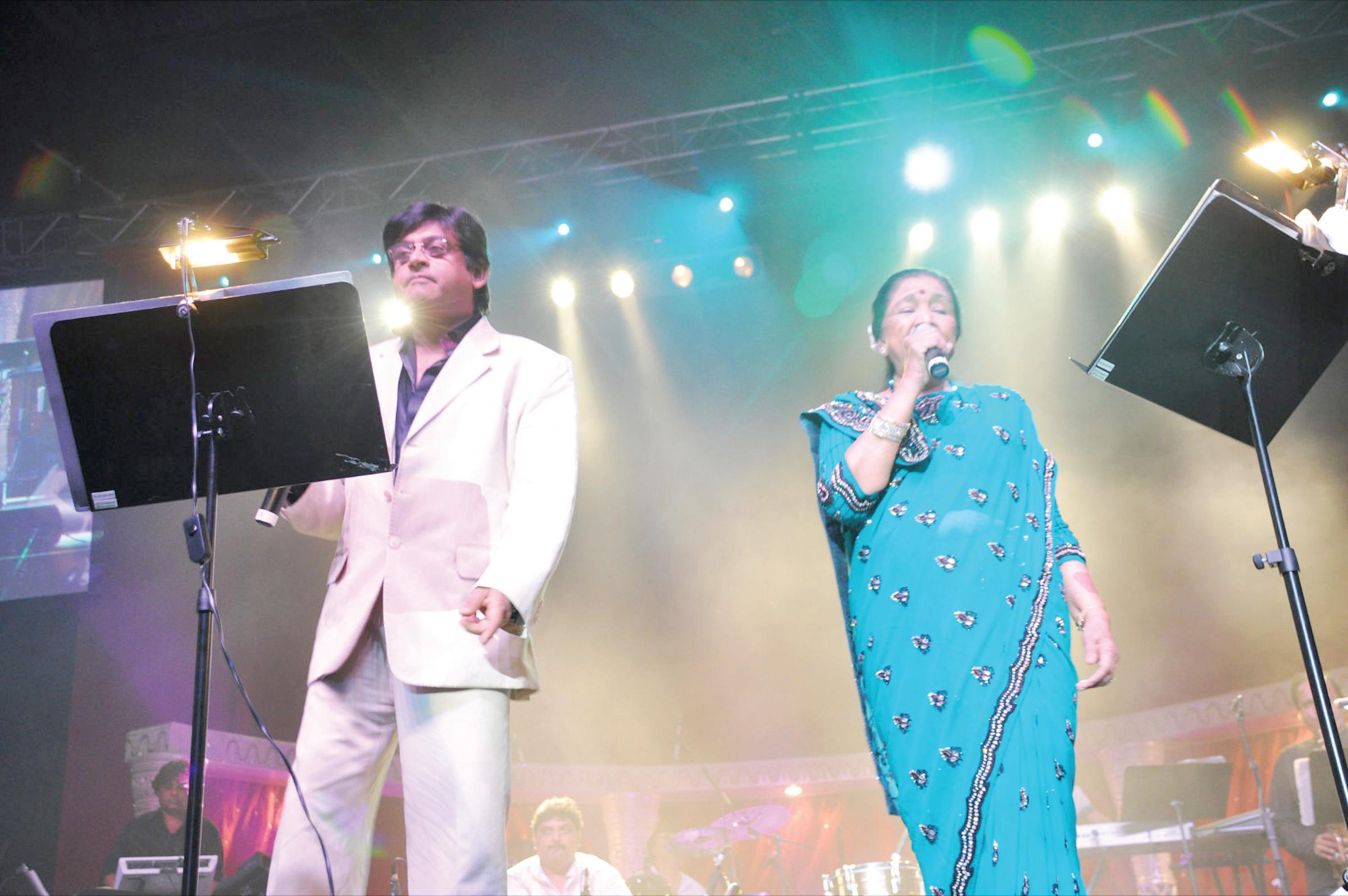 BY FARRHA KHAN
BY FARRHA KHAN

Even a cold windy night couldn’t keep crowds away on March 5 for Asha Bhosle’s Rahul & I concert.
Yes, even despite Rihanna belting out chart-toppers on the other side of Olympic Park and the Mardi Gras rocking through Sydney’s CBD. Splashes of Indian colours and designs created a cheerful kaleidoscope at the Sydney Olympic Park Sports Centre, which was packed to capacity with an enthusiastic audience waiting to hear some of Bollywood’s melody queen Asha Bhosle.
And the 77-year-old songstress did not disappoint. From the moment she came on stage dressed in a light yellow sari that looked brilliant against the red drapes and cream coloured pillars on the stage, she had the audience on their feet, clapping and cheering. Starting off with a bang, her cleverly picked introductory numbers Pyar karne wale (Shaan) and Aaj ki raat (Don), showed off her unique fun-loving personality and love for mast songs that make you believe the world is one big, happy place. Indeed, that mood was to stay on through the entire night.
Amit Kumar, son of legendary Kishore Kumar and a reputable singer himself, introduced Asha and the audience welcomed Bollywood’s “playback royalty” with a huge cheer.
NSW Premier Kristina Keneally came on stage to welcome Asha with flowers, revealing laughingly that the singing queen had called her “so tall”. The Premier’s response was admirable: “Asha Bhosle is tall in stature, in reputation and in talent. She is a towering figure of Indian music,” she said. The audience responded with wild applause!
Member for Hawkesbury, Ray Williams, representing the leader of the NSW Liberal Party, Barry O’Farrell, was equally well-received. What made his moment rather beautiful was not when he gushed over being in the presence of greatness, but when he called her “Asha-ji”.
Asha Bhosle laughed and nodded, letting it slip that she knew it was election time, and breaking the serious mood that had settled upon the stadium. And with that, the audience was ready for her next song.
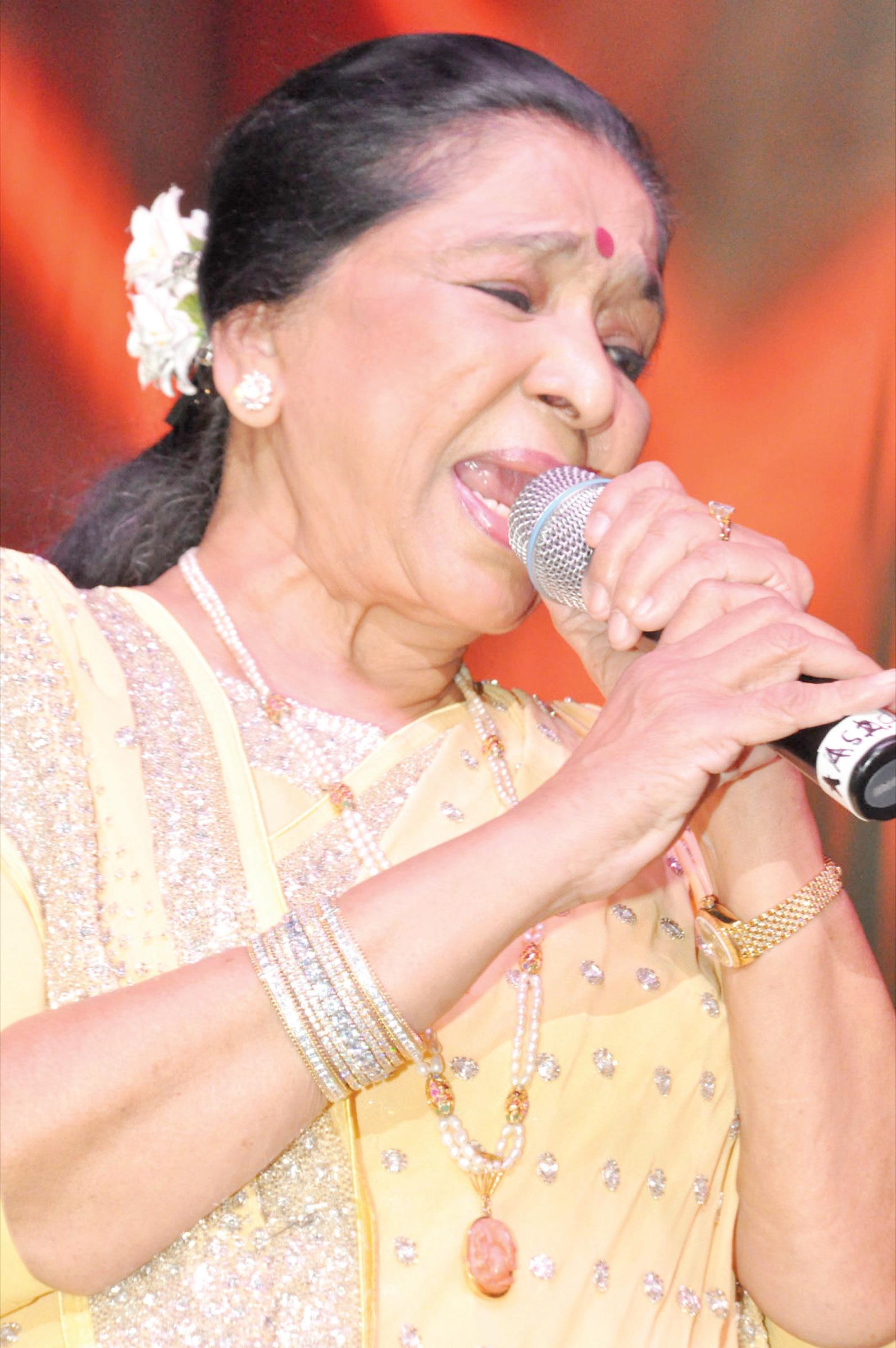
The concert was called Rahul & I and as the night unfolded, Asha revealed small snippets of what it was like working with music director Rahul D Burman, whom she married in 1980. As she partnered with Amit Kumar, we were also delighted with many stories of Kishore Kumar.
In the first act of the evening, Amit Kumar had come out dancing to that all-too-familiar tune, Bachna ae haseeno. He had the audience clapping and singing along with this rendition. There was no doubt that the evening would be a spectacular one.
All-time Asha Bhosle classics like Pucho na yaar kya hua, Tu hai wohi and Chura liya had everyone swaying to the music. Amit Kumar also brought to life some top RD Burman hits and Kishore Kumar classics. His vibrant Yeh jawani had the audience dancing in the aisles. It was strange, I’ll admit, to see 58-year-old Amit Kumar dancing and jumping around with an amazing amount of energy that was simply infectious. He wasn’t even puffing at the end of the song! He immediately reminded us of his illustrious dad, who performed similar antics on stage.
For the supremely hummable old favourite Aap ke kamre meh koi, Asha joined him dressed in a stunning blue sari. At the end of the foot-tapping Ek main aur ek tu, Asha
ended by remarking to Amit, “Baba ki yaad aa gayi!” in reference to his father Kishore Kumar, with whom she had originally recorded the song.
It was one hit after another in a glorious playlist that night, and the stars seemed to be egged on by the audiences’ energy. Tum kahan, Mein yahan had the two dancing like Shammi and Helen. O haseeno zulfon wali got people on their feet, dancing along in gay abandon and thoroughly enjoying themselves.
As the audience settled down a little, Asha sang a couple of Bengali songs upon requests called out. But very soon she was back in mast Bollywood mode, as she decided to treat us to a lesson on the singing style of other performers. Her mimicry began with her usual style of singing for modern young singers, like Aishwarya Rai-Bachchan. Then came the style of Noor Jehan. Then she sang in her older sister’s voice, perhaps poking fun at the so-called rivalry between her and the great Lata Mangeshkar. The real fun part came when she mimicked the styles of an Ustad and then a Pundit and their differing vocal acrobatics, before ending with how a song for the actress Helen should be sung, which had the whole stadium in absolute splits!
This was the perfect introduction to her final two songs, Dum maro dum and Piya tu ab to aaja, which brought Amit back onto the stage. There was something truly special about it all - the sight of a 77-year-old songstress singing and dancing like a little ball of energy, along with a 58-year-old singer. As they both smiled and danced off stage, I couldn’t help but smile too, and hope that I would be as spunky as the duo when I reached that age.
At the end of the foot-tapping Ek main aur ek tu, Asha ended by remarking to Amit, “Baba ki yaad aa gayi!” in reference to his father Kishore Kumar, with whom she had originally recorded the song.
The band was truly brilliant, with composer Nitin Shankar who recorded Asha Bhosle’s album Platinum, heading the musicians. But of the 12-man troupe, it was guitarist Arjun Kanungo who was the real stand out with his two vocal performances as well. His version of Queen’s We Will Rock You by The Eagles were both convincing, and importantly, enjoyed thoroughly by the audience.
Despite the delayed start and uninteresting hosts (who struggled bravely with microphone difficulties), the night was made special by the sheer brilliance of the stars of the show. Yogesh Sharma from Cinestar Entertainment deserves kudos for continuing to bring top-ranking stars out to Australia. With over six months in planning, the Asha Bhosle concert was indeed worth the efforts put in by Yogesh. It was truly amazing to look out over the audience and see them dancing in the aisles, while older ladies swayed together in their seats, singing along to these timeless classics. At one point I saw a young girl of about 8 years, bopping up and down in her seat to Ek meh aur ek tu
Earlier in the evening, a short performance by local singer Shweta Sharma set the backdrop beautifully – her lovely rendition of Main asha hoon was a wonderful tribute indeed. Some of the best songs Bollywood had to offer over decades were brought to life that night, and Asha Bhosle and Amit Kumar’s amazing stage presence kept the audience completely engaged. It was an intimate show that became a stroll down memory lane for the performers and audience alike.
38 <> MARCH (1) 2011
COVERSTORY
Ek main aur...: Asha with Amit


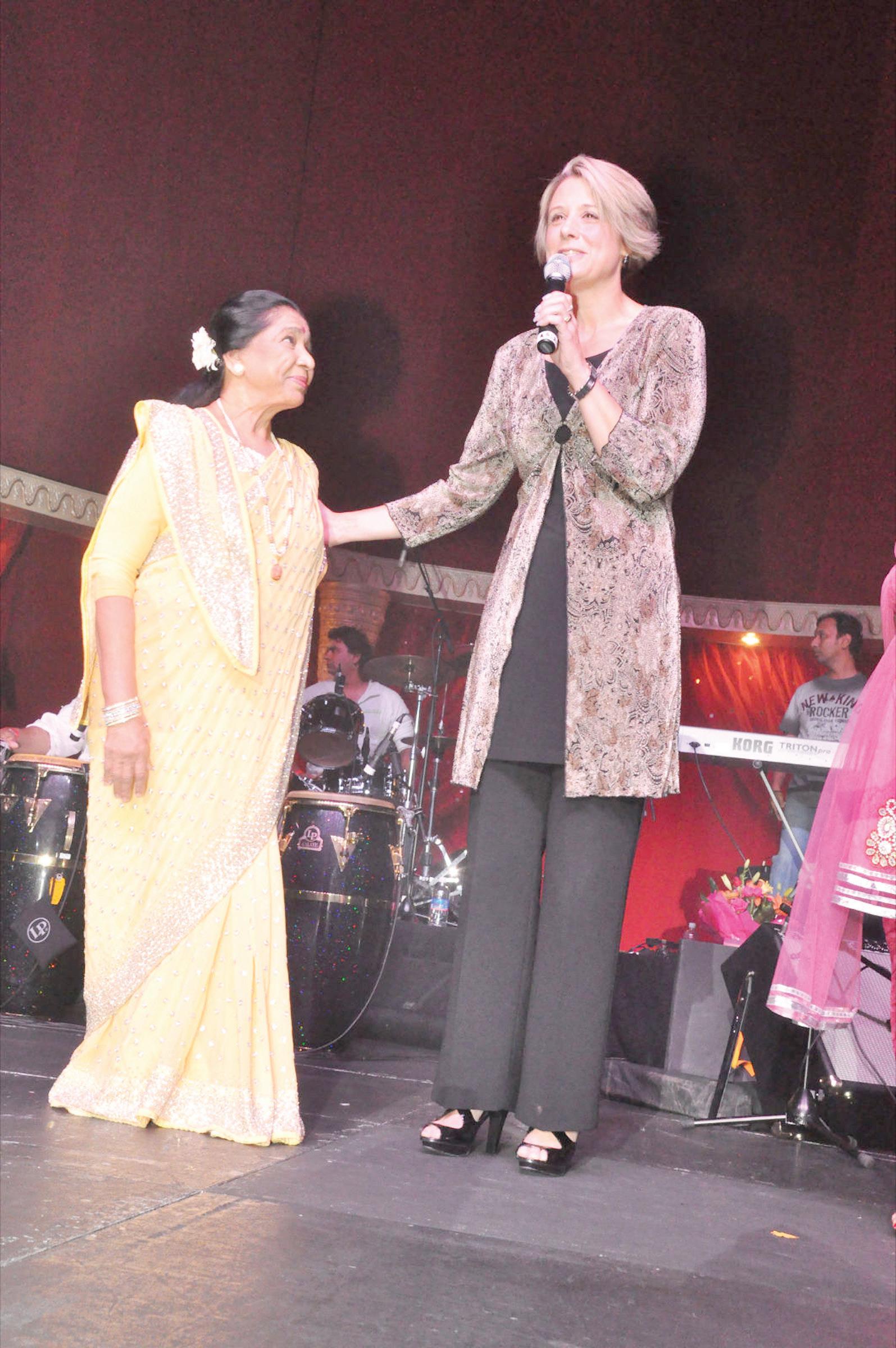
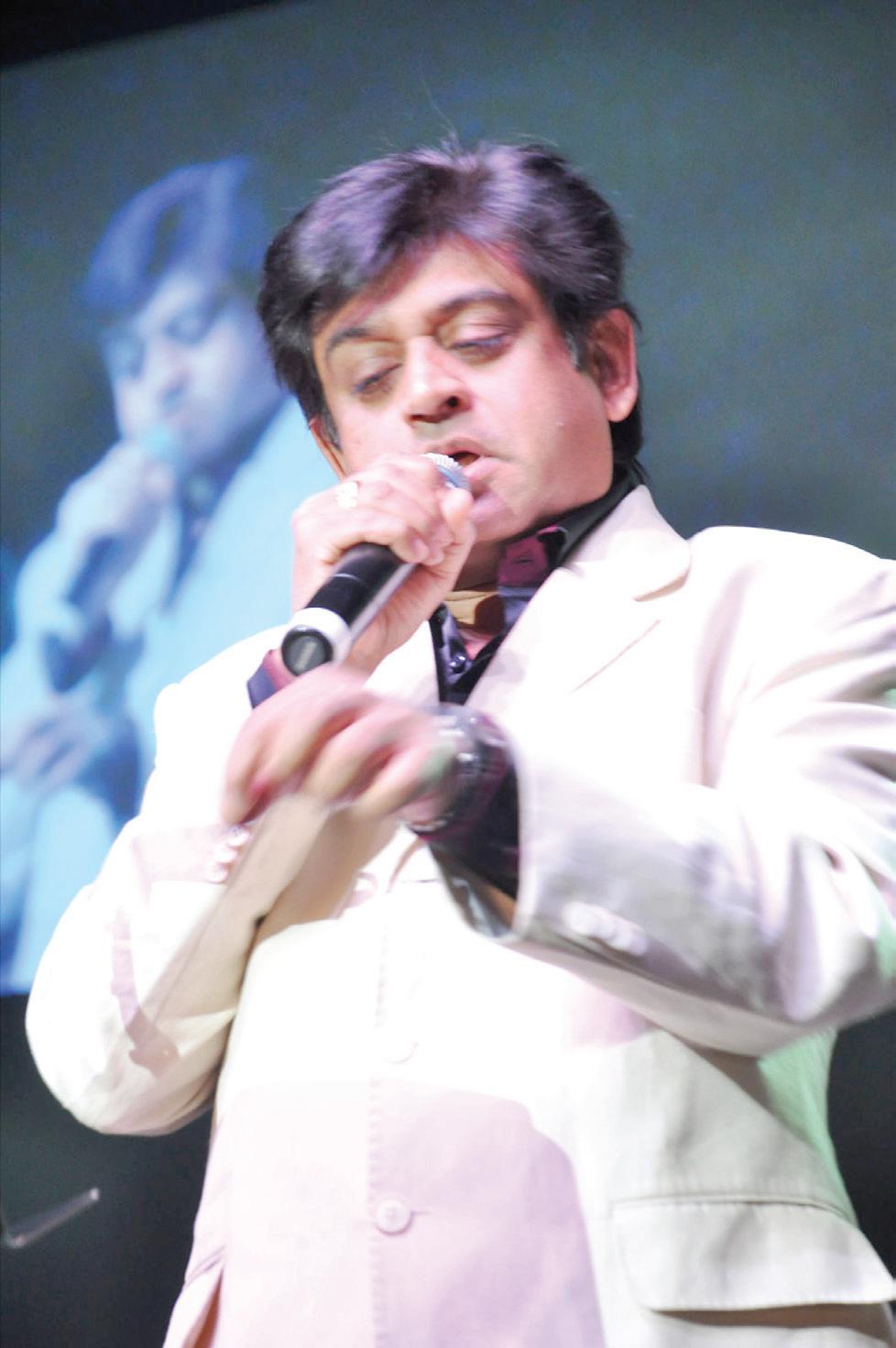

MARCH (1) 2011 <> 39 FEBRUARY
Tall tales: Asha Bhosle with Premier Kristina Keneally
Yogesh Sharma: A career devoted to stage show promotion
Photos courtesy Cinestar Entertainment
Three different books reviewed here look at subjects that have a strong Indian connection and provide well-written, concise viewpoints from the authors’ perspectives
CCancer, commerce and capitalism
BY CHITRA SUDARSHAN
Three books – all non-fiction – are the subject of this month’s review: one by an Indian-born American; another by an American-born Indian who returns to India; and lastly, an American who has written (largely) about the strategic importance of India and the Indian Ocean in the twentieth century.


Siddhartha Mukherjee’s brilliant book, Emperor of All Maladies: The Biography of Cancer, has got such universally glowing reviews since its publication in late 2010, that it will be remiss of me not to mention it here. It has been chosen as the one of the 10 best books of 2010 by New York Times; the top 10 books by Oprah; and the top 10 non-fiction by TIME Magazine. It is a chronicle of the
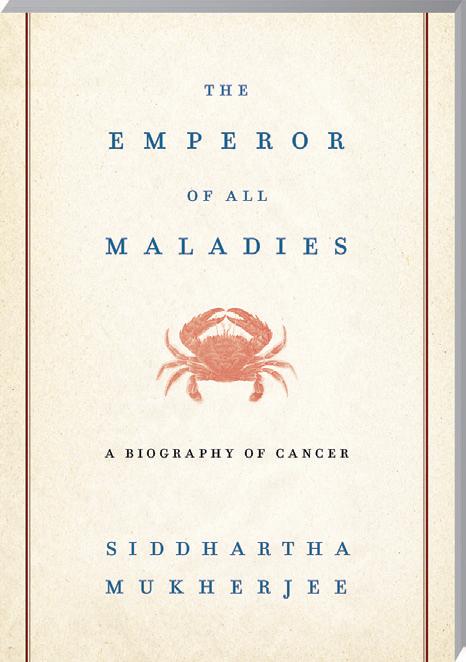
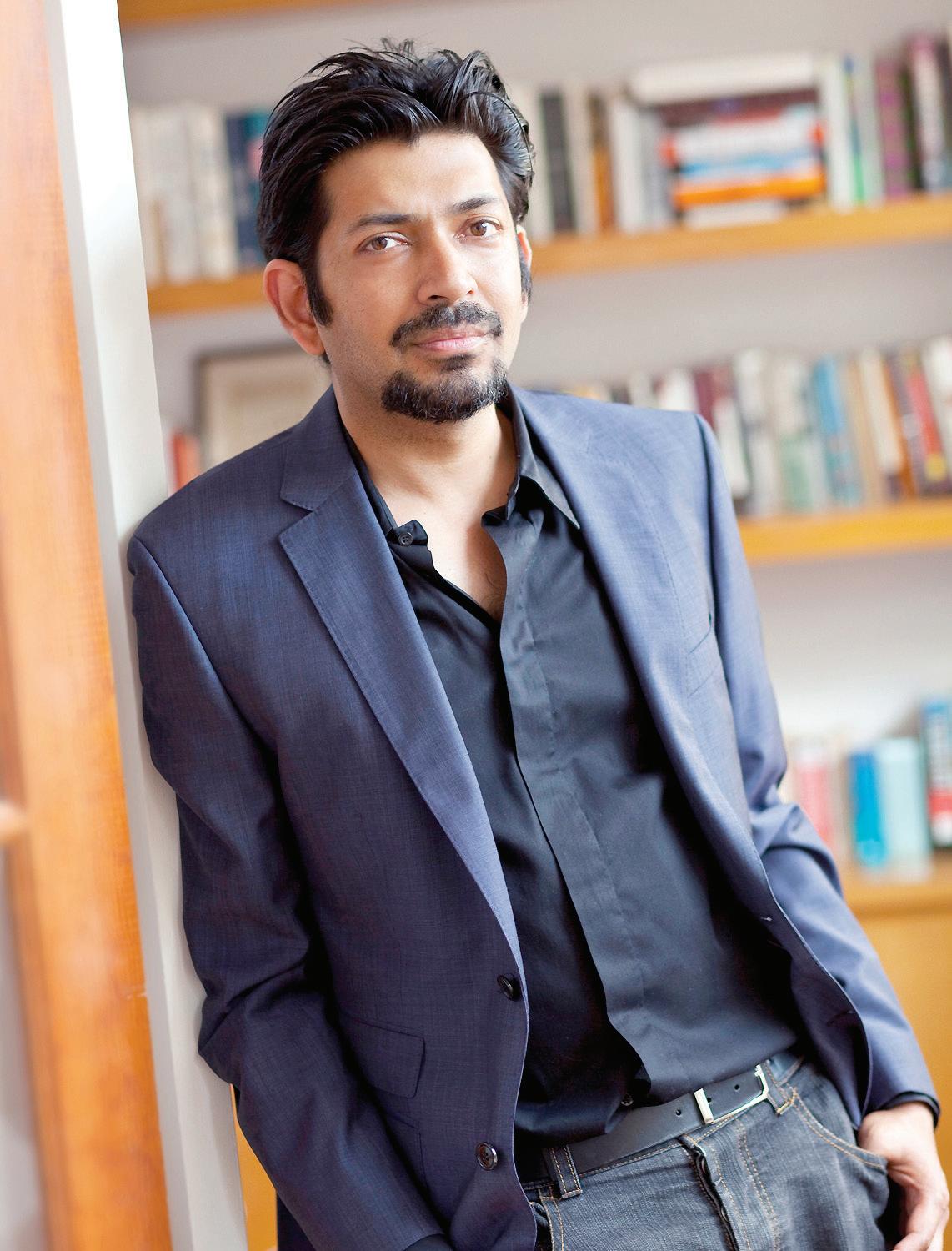
In a nutshell, Mukherjee explains how different cancers behave differently, and their treatment and prognosis vary considerably despite an attempt to find an overarching cure for the disease.
relentless battle of scientists and patients against cancer since the earliest times, and the search for a universal ‘cure’. In a nutshell, Mukherjee explains how different cancers behave differently, and their treatment and prognosis vary considerably despite an attempt to find an overarching cure for the disease. Some cancers are completely curable, others yet to be understood; some cancers are the result of genetic triggers, others are brought on by environmental factors. 24 new drugs are in use now, and treatments available include surgery, chemotherapy and radiotherapy. His prognosis for the disease itself: that most sufferers in the world will increasingly learn to live with it in the future.
Mukherjee is a gifted scientist and writer who has published in several scientific journals and newsmagazines. He studied in St Columbus School in Delhi, went to Harvard, Stanford and Oxford, and works as an oncologist in New York. His humane and compassionate approach towards cancer patients makes it an engaging book that anyone can pick up and read –and will then find it impossible to put down. He is also an accomplished speaker, and there are scores of YouTube clips on the net should readers wish to check them out.
Robert Kaplan’s book Monsoon : The Indian Ocean and the battle for supremacy in the 21st century (Random House, 2010) is about the importance of the Indian Ocean littoral states in the military strategy and security of the 21st century. For centuries now, Europe and the North Atlantic dominated the world: Kaplan believes that the era is coming to an end, and will soon be supplanted by the Indian Ocean region, a change that is not surprising if one looks at history from a long-term perspective. It is a little unusual for a North American to take such a long-term view of history - but he is right. Although the modern era has been dominated largely by European history, it is worth pointing out that it was not always so. There was a time when Arab merchants, Indian traders and Chinese ships plied the waters of the Indian Ocean long before the Roman period or the colonial times. Arabs were not merely desert people; Indian traders and thinkers carried ideas and culture across Southeast Asia; and Cheng He, the Chinese

explorer sailed down South Asia and came almost as far as Australia. In one stone inscription erected by Cheng He in Sri Lanka, he invokes the Hindu deities to protect his ships in their voyage!
Kaplan argues that the emerging economies of India and China are shifting the global axis of trade and commerce, making the Indian Ocean sea lanes the most significant strategic waters of the 21st century. China’s economic rise (it has now officially become the second largest economy, overshadowing Japan’s) has been closely followed by military expansion as it seeks to extend its naval reach deeper into the Indian Ocean, and become a
Islam. Second, despite increasing trade with China, many of the littoral states seek a counterbalance in US support and involvement in the region; thirdly, the US, by engaging with India and China – and other littoral states – could build up a sort of consort of the powers of Indian Ocean region.
The chapter on India makes especially interesting reading: what with all the (unwarranted) chest-thumping triumphalism of the Indian middle classes who want their country to be recognised by all the world and the UN as an ‘emergent power’ and given a permanent seat in the UN. My sympathies here are entirely with Ramachandra Guha (who, in his brilliant essay, pointed out why India is not an emergent or any other power – now or in the immediate future, as it has yet to resolve several grave and existential problems), and with Parag Khanna (who has argued that India does not quite have the ‘strategic appetite’ to become a big power yet). Be that as it may, this book is only another in a long list of publications that have come out recently on the subject. One only has to recall Stewart Gordon’s
After evaluating various scenarios, (Kaplan) thinks there is reason for optimism in the emergence of the Indian Ocean and its littoral states as significant players in a new international order.
When Asia was the World; Edward Luce’s In Spite of the Gods: Strange Rise of Modern India; Friedman’s The World is Flat, and numerous others.
Robert D. Kaplan is a contributing editor to The Atlantic Monthly, has lectured at the FBI, the National Security Agency, the Pentagon’s Joint Staff, major universities, the CIA, and business forums. He is one of the important strategic thinkers in the US, and in 2009 was appointed to the Defence Policy Board: so what he says has import in the US. For those who want one more book to confirm their belief that India will play a greater role in the world, this is just up their alley.
Anand Giridharadas’s India Calling approaches the subject – the rise and rise of India – from a different perspective altogether: that of one of the “stepchildren” of India, whose parents left India several years ago, and whose children are now returning to a different more vibrant and confident country. His perspective is quintessentially American (it seems you can transplant an American in India, but cannot take the American out of him!) in that he sees the new, innovative India as a product of capitalism and globalisation unleashed. For centuries
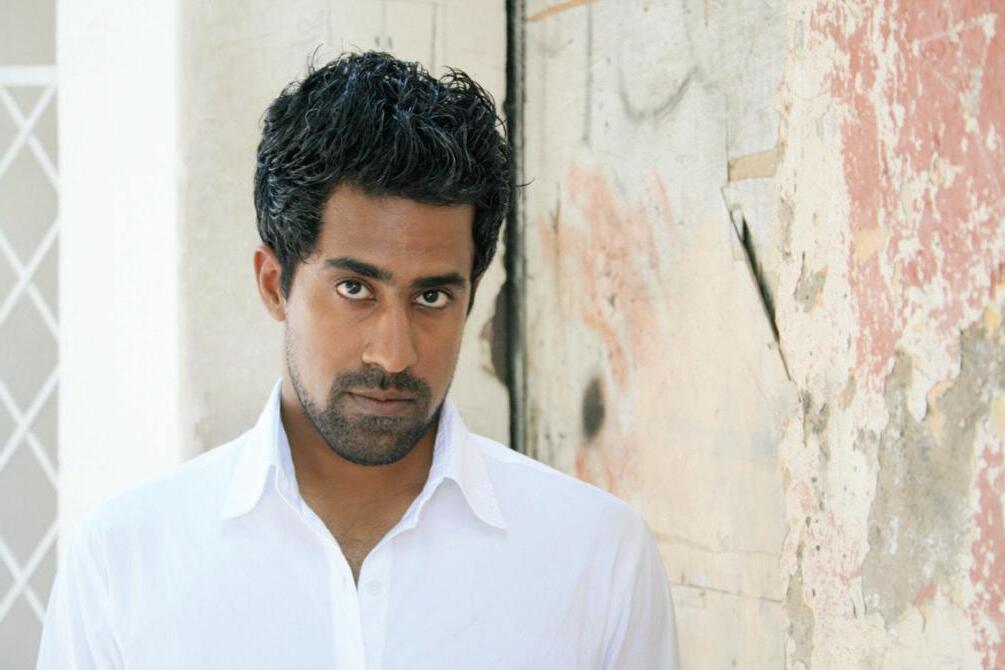
Giridharadas’s perspective is that of one of the “stepchildren” of India, whose parents left India several years ago, and whose children are now returning to a different more vibrant and confident country.
two-ocean Navy; it is helping build the ports of Gwador in Pakistan, Chittagong in Bangladesh, Humbantota in Sri Lanka and Kyaukphyu in Burma – all in the Indian Ocean.
Kaplan is interested in the strategic implications for the US, of this phenomenon. After evaluating various scenarios, he thinks there is reason for optimism in the emergence of the Indian Ocean and its littoral states as significant players in a new international order. For one, he thinks this could be a buffer against the rise of radical
Indians were governed by hierarchy and fate: capitalism has allowed Indians to imagine and even realize lives outside their kismet/fate. This is yet another version of the “India unbound” thesis. The difference is that Giridharadas peppers it with anecdotes and personal histories – such as a page from his grandmother’s diary; a single woman who is a high flying banker and lives with her parents; a poor man who breaks free of his poverty and starts his own business; a Naxalite who works for a newspaper during the day –which lays bare the new India in all its contradictions.
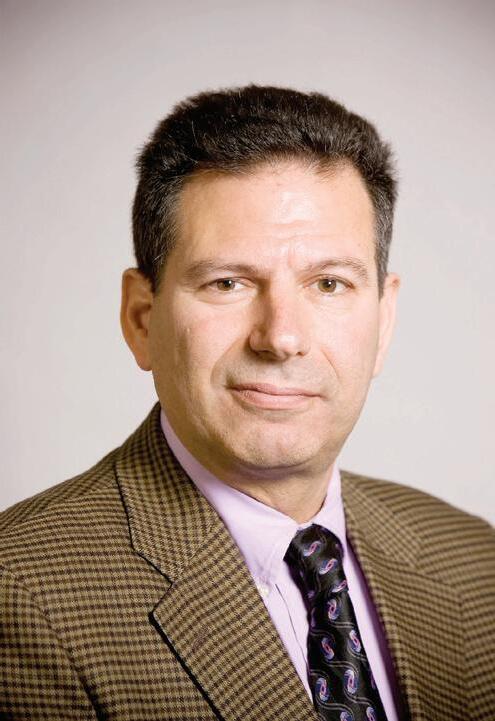
40 <> MARCH (1) 2011 INDIAN LINK
www.indianlink.com.au BOOKS
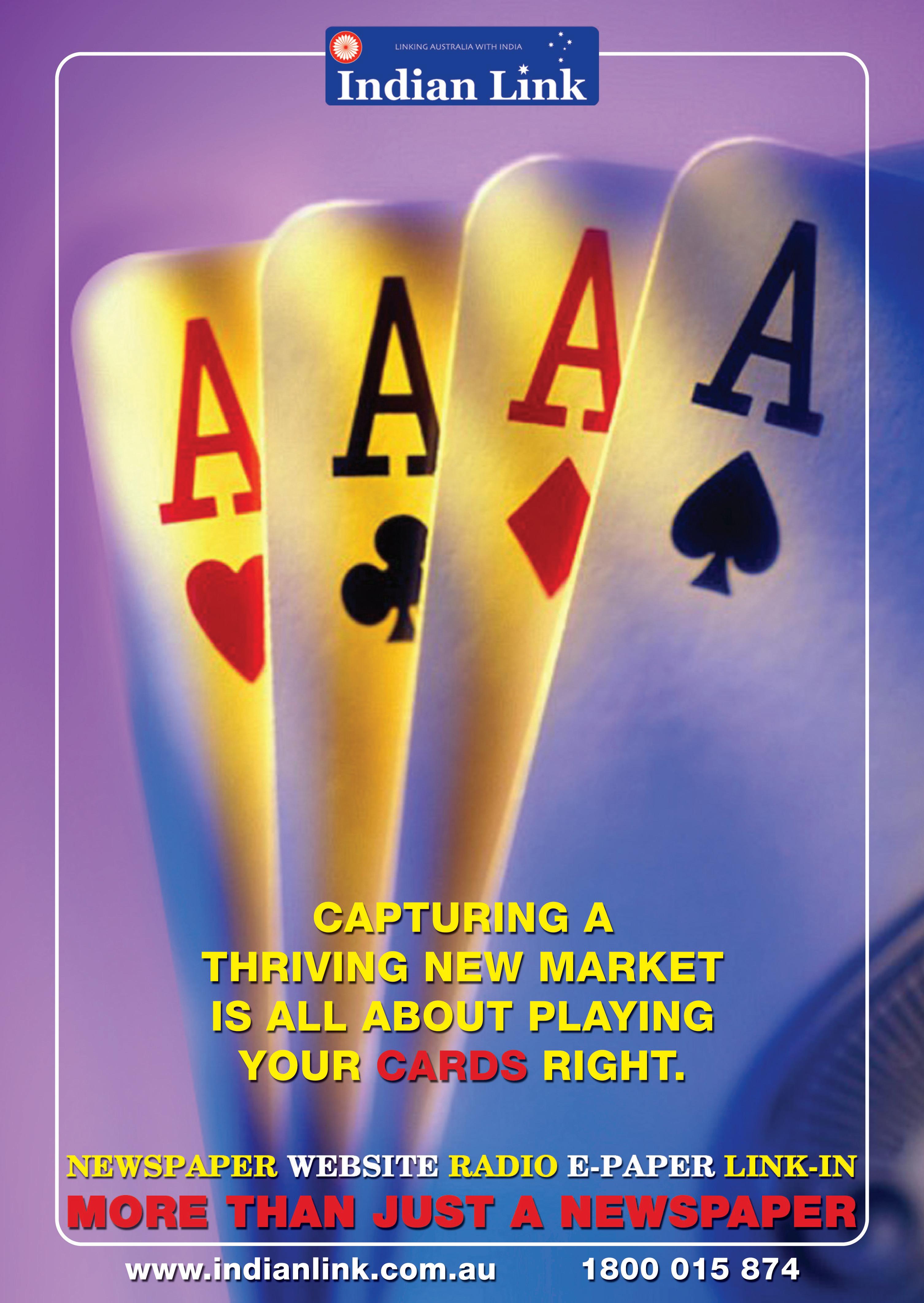
MARCH (1) 2011 <> 41 NATIONAL EDITION
Expanding jungles
BY NOEL G DE SOUZA
The word ‘jungle’, common to several Indian languages and adapted in English and French, connotes a dense tropical forest. Such forests were considered as undeveloped wastelands which ‘undeveloped’ people (junglis) inhabited. The term ‘jungli’ thus came to be applied to rough and uncouth persons.
There is a lot of work yet to be done to train and educate members of India’s Scheduled Tribes who mostly live in forested areas; there is also a need for the wider community to accord respect for the rights of tribals. India has seen just too many instances of tribal neglect which have been followed by armed insurgencies, and these are currently proving to be a very difficult issue in several states.

In Australia likewise, forests and jungles in tropical Australia were once considered a nuisance growth to be exploited; hardwood timber logging was glorified as seen in several government-produced documentary films. The forest dwellers in Australia were Aboriginal tribes who were classed as people needing to be taken into care and ‘civilised’ into the white man’s ways of life. This proved traumatic and left permanent scars on the “stolen generation”.
km of wildlife conservation sanctuaries. A good example is the Western Ghats that stretches from Mumbai to the southern tip of the Indian peninsula. They hold large forests, farms (including tea, rubber and spices) and inhabited areas. They form the watershed of the great rivers which flow eastwards and the smaller rivers which flow westwards. They are under great population pressure for farming and firewood. These are being extensively studied by the French Institute in Pondicherry and the Pondicherry University.
According to the Global Forest Resources Assessment (FRA) of 2010, 25% of India’s land surface is covered by forests. India’s target is to increase this to 33% by 2012 through afforestation. The director of forestry of the Food and Agriculture Organisation, Eduardo Rojas-Briales, praises India for adding 300,000 hectares of forests every year. India dwarfs its South Asian neighbours with regard to both forest maintenance and afforestation. Sri Lanka, in contrast, has only one and half of its original forested area. China has accelerated its forest addition to such an extent that it is now annually adding ten times the forest area that India does!
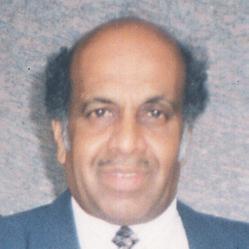
The FAO publication


The world, now seeing the value of forests, is scrambling to save the small percentage of forests which remain on the planet.
The clash of interests in jungles is mostly between economic exploiters (miners, loggers and, in the case of Brazil, beef producers) and conservationists who favour tribal rights.
The world’s tropical forests gave humans an abundance of economic products such as coffee, tea, cocoa, rubber, mangoes, cajus, quinine and a host of alternate medicines. Tropical forests are also home to large numbers of animal species which face extinction because of threats to their habitat.
Besides, forests are the earth’s breathing apparatus, protecting it from carbon dioxide accumulation through absorbing it. The world, now seeing the value of forests, is scrambling to save the small percentage of forests which remain on the planet. In this context, it is good to see that India is getting rare kudos from the FAO (Food & Agricultural Organisation).
India trains its forest personnel well. It has two premier training centres at the Indira Gandhi National Forest Academy in Dehra Dun and the Lal Bahadur Shastri National Academy of Administration in Mussourie. In this respect it outclasses its other South Asian neighbours. New guidelines under the Wildlife (Protection) Act, 1972 and the Environment (Protection) Act 1986, ensure that all mining will be prohibited within 10
The State of Forest Resources: A Regional Analysis says that “China, India and Vietnam have established targets for large-scale forest planting and also developed incentive programmes for smallholders to plant more trees.” China’s plan of a 50 million hectare increase in its forested area by 2020 could be reached by 2015, if its current planting rate continues.
Within the Asia-Pacific region, tropical forests are expanding through government support. In the 1990s, forests were being lost at an annual rate of 0.7 million hectares, but have grown by 1.4 million hectares per year between 2000–2010.
Australia has 12% of its surface (89.5 million hectares) covered through protected forests. This includes 14.6 million hectares of Indigenous Protected Areas which are managed by Aboriginal owners. Between 2004 and 2006, the protected areas increased by over 8.6 million hectares. However, since then there has been no substantial increaseone cause is the extensive bushfires to which Australian forests are prone.
Africa and South America (including the Caribbean), in contrast are losing forests at an alarming rate. Brazil is one of the world’s richest forested areas; it has the largest tropical forest, being 13% of the world’s total forest area. However, its forests are in serious decline through human intervention which is often illegal. Africa, south of the Sahara, is causing great concern because its forests are in serious decline.
42 <> MARCH (1) 2011 INDIAN LINK
India’s increased attempts at afforestation have been globally applauded, but not all countries are interested in preserving their natural heritage
www.indianlink.com.au OPINION
Organisation overdose
How many more community organisations are likely to mushroom, simply as a salve for personal egos?
supposed glory of their own association?
BY TANVEER AHMED
Is there anyone out there in the South Asian community who has not started their own organisation yet?
Barely a week goes by when I don’t notice a new Indian association claiming to better represent Indians, or a Bangladeshi group assured of its greater legitimacy within the community. They are almost universally, projects driven by men of my parents’ generation, often as they head into semiretirement within their paid careers.


Ethnic community organisations play a valuable role in the multicultural landscape. They provide a meeting point for many new migrants. They allow for a renewal and transmission of cultural content from our ancestries and allow for latter generations to have exposure to the culture of their parents.
(I should add at this point, however, local community organisations have usually been very poor at channelling creative content from their children or thinking about how their activities might be modernized).
For example, within the Bangladeshi community there are several examples of new associations being begun by ex-members of more established ones almost entirely because they weren’t elected Presidents of the original groups. To make matters worse, the new ones often copied the names of the old ones and tried to usurp funding as a result.
I have heard of similar trends within other ethnic community groups as well.
Competition can be useful, particularly in business, but among community groups where united views are critical in influencing the decision makers, it can be fatal.

One of the biggest problems with this kind of behaviour is that it condemns our communities to being ineffective when it comes to lobbying with the government or other organisations. The major Indian associations in Sydney are often wooed by MPs and business for they see the growing numbers of South Asians as well as the rise of India more broadly, but they are probably the exception, and not the rule.
At what point is their usefulness destroyed by the constant battling of egos determined to claim for themselves the supposed glory of their own association?
The organisations can provide an important conduit between the broader community and ethnic groups. For example, many MPs look towards community associations to gain a sense of how important constituents like say, Indians in Parramatta, are thinking about key issues.
In fact, barely a decade ago, associations like the Bangladeshi Association of New South Wales would give critical advice about how refugee applicants should be processed by the government. This was stopped when it became clear that local community leaders were abusing their authority and advising of residency often on spurious grounds.

Community organisations can also receive funding from the government, be it to undertake services on behalf of the government - bilingual aged carers are an example - or run programs as they see fit.
So there is little doubt that they are useful. But at what point is their usefulness destroyed by the constant battling of egos determined to claim for themselves the
As a psychiatrist, I can’t help but think some of this behaviour is a kind of hypermasculinity in the face of a feeling of lower status in the wider community. Most elders in the community occupied jobs of much lower status while living in Australia, when compared to what they were likely to have achieved back home. This is one of the sacrifices of migration, undertaking jobs of lower status to ensure the following generation can prosper. My impression is that much of the grandstanding and power-broking that goes on in ethnic community groups, usually inconsequential and trivial in any broader sense, is more about creating a space where powerless, somewhat humiliated men, attempt to exert themselves as men of status, power and influence.
This is of even greater significance when you consider that the organisations are likely to die out with their founders, given that the children who grow up in Australia have shown little interest in getting involved in what can appear as silly and pointless community politics. It will only hurt us into the future. As more and more issues arise where expatriate communities can influence governments and business into making decisions that favour our communities, the less and less likely we will be in a position to make it happen.
MARCH (1) 2011 <> 43 NATIONAL EDITION
www.indianlink.com.au OPINION
Competition can be useful, particularly in business, but among community groups where united views are critical in influencing the decision makers, it can be fatal.
Radio anchors wanted
Are you creative?
Can you think on your feet? Do you have a talking to people? Good command of Hindi?
Upto date with current affairs?
Multiculturalism meltdown
While for now Australia stands solid on its stance promoting multiculturalism, several large powers have already condemned the concept to death
 BY ROY LANGE
BY ROY LANGE
David Cameron, the British Prime Minister, is a recent convert to white extremism, joining a fast growing flock that includes German Chancellor Merkel, French President Sarkozy and has-beens John Howard and former Spanish Premier Jose Maria Anzar. All declaring, with no ambiguity, that multiculturalism has failed. Will this retrenchment to a pre-chicken tikka masala fairyland hold steam? Will Gillard catch the bug?
Cameron, not unlike a metrosexual skinhead, has put forth detailed criteria for immigrants. ‘Do they believe in universal human rights - including woman and people of other faiths? Do they believe in equality of all before the law? Do they believe in democracy and the right of people to elect their own Government? Do they encourage integration or separatism?’
Britain, pompously proud of the freedom she enjoys north of the White Cliffs of Dover made a legendary success at suffocating no less than a third of the world. She reigned an Empire of subjects, not citizens. You have to believe your subjects are human before granting them a right.
They have emotionally never let go of that ‘greatness’ and have never managed to find the courage to look themselves in the mirror to see an impotent, pasty old man.
that deserves further study, as it seems to be a new branch of the institution.
His demand that they should encourage integration and not separatism is welcome, as Cameron is plainly a separatist.
The sheer insurmountable impracticality of judging these criteria is proof enough that this new gated community will convincingly fail. (Perhaps prospective immigrants could be given a multi choice exam with questions such as Was Hitler a: (a) genocidal maniac; (b) famous composer; (c) grossly misunderstood?)
Oscar Wilde said that sarcasm is the lowest form of wit. Racism is the lowest form of politics. It is the refuge of the mediocre.
Cameron has good company with Merkel and Sarkozy. They are all leaders that have failed to project a uniting vision. Like Hitler, they have contracted with the politics of race when the coffers are empty. Hate is free and unites the bewildered.
Gillard may have an on-again, off-again relationship with the truth, but she is not a person of hate. She will have enough smarts not to commit political suicide in our rainbow country.
(Gillard) won my heart when denouncing Abbott and his henchmen’s attack on travel expenses of the grieving relatives of the Christmas Island tragedy.
Though to be seen as an evangelist of the multicultural ideal is politically daft. She won my heart when denouncing Abbott and his henchmen’s attack on travel expenses of the grieving relatives of the Christmas Island tragedy. She declared that Australia would not be drawn yet again into the policies of One Nation. A rare display of principle that would have had her pollster spin doctors gagging for a designer cup of herbal tea.
This delusional belief in themselves prompted their participation in the unholy wars of Iraq and Afghanistan. The fascist practices of these conflicts included torture of citizens kidnapped and imprisoned, wholly illegally, and the murder of thousands of families in air raids. Not an immediately obvious way to express a belief in universal human rights and a deep respect of other faiths.
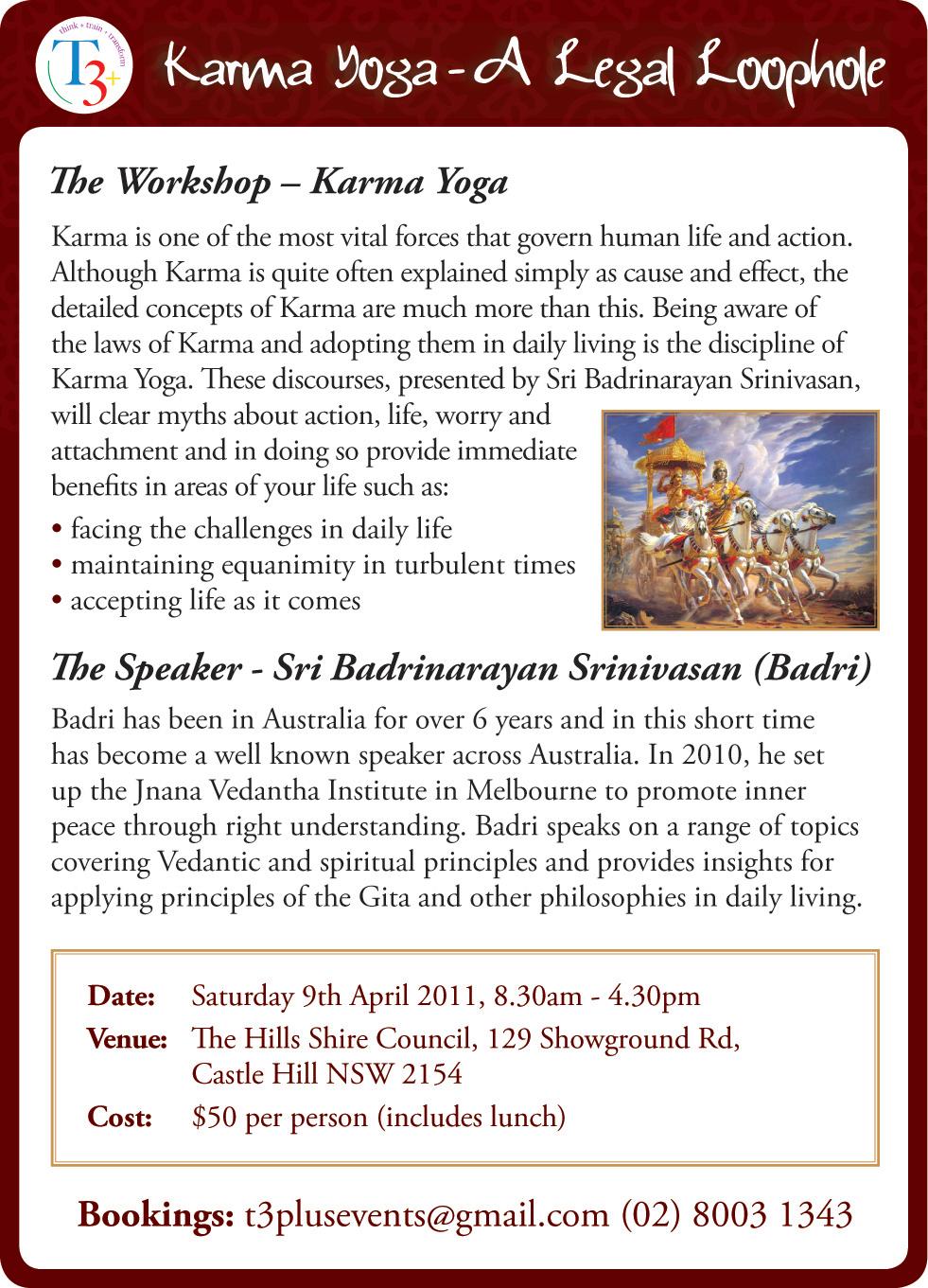

Cameron insists that to qualify for British residency you must believe in democracy and the right of people to elect their own Government. With the revolutions in North Africa, this has triggered a collective giggle. The West’s almost unquestionable support of Mubarak, who was no pin-up of democracy, has received a widely televised, brutal assessment by the media.
Furthermore, Cameron’s Foreign Minister has said that the Egyptian people should be encouraged to elect whomever they want in Government, as long as it’s not the Muslim Brotherhood. This is a school of democracy
My initial perception of Chris Bowen, the Immigration Minister, was someone who had been put in the job to give grave television interviews that made it plain that the Government rescued boat people only if it really, really had to. My heart swelled when he strongly spoke against the ‘fashionable’ sweep of world leaders declaring multiculturalism dead on arrival.
History will show that this will be an enduring definition of Australia, further differentiating us from a Europe that cannot dictate our culture. White Australia is far from buried. It is a nation that histrionically apologises to its indigenous people, but wouldn’t have an aboriginal over for tea and scones. A nation that sacrifices it’s young in the fight against terrorism, but detains and deports refugees who flee from terror.
But for now our leaders will continue to define us. It is who we are.
Besides, going back to boiled cabbage and cold mince is a fate worse than death.
44 <> MARCH (1) 2011 INDIAN LINK
www.indianlink.com.au OPINION
Be part of the Indian Link radio team!!! Email expressions of interest with details of relevant experience to info@indianlink.com.au
Like your Bollywood music? Want to work part time? Early mornings? Late evenings? Weekends?
The rot within
India is currently ill-prepared for invasion as its army tackles the issue of widespread corruption within its ranks
BY GAURAV SURATI
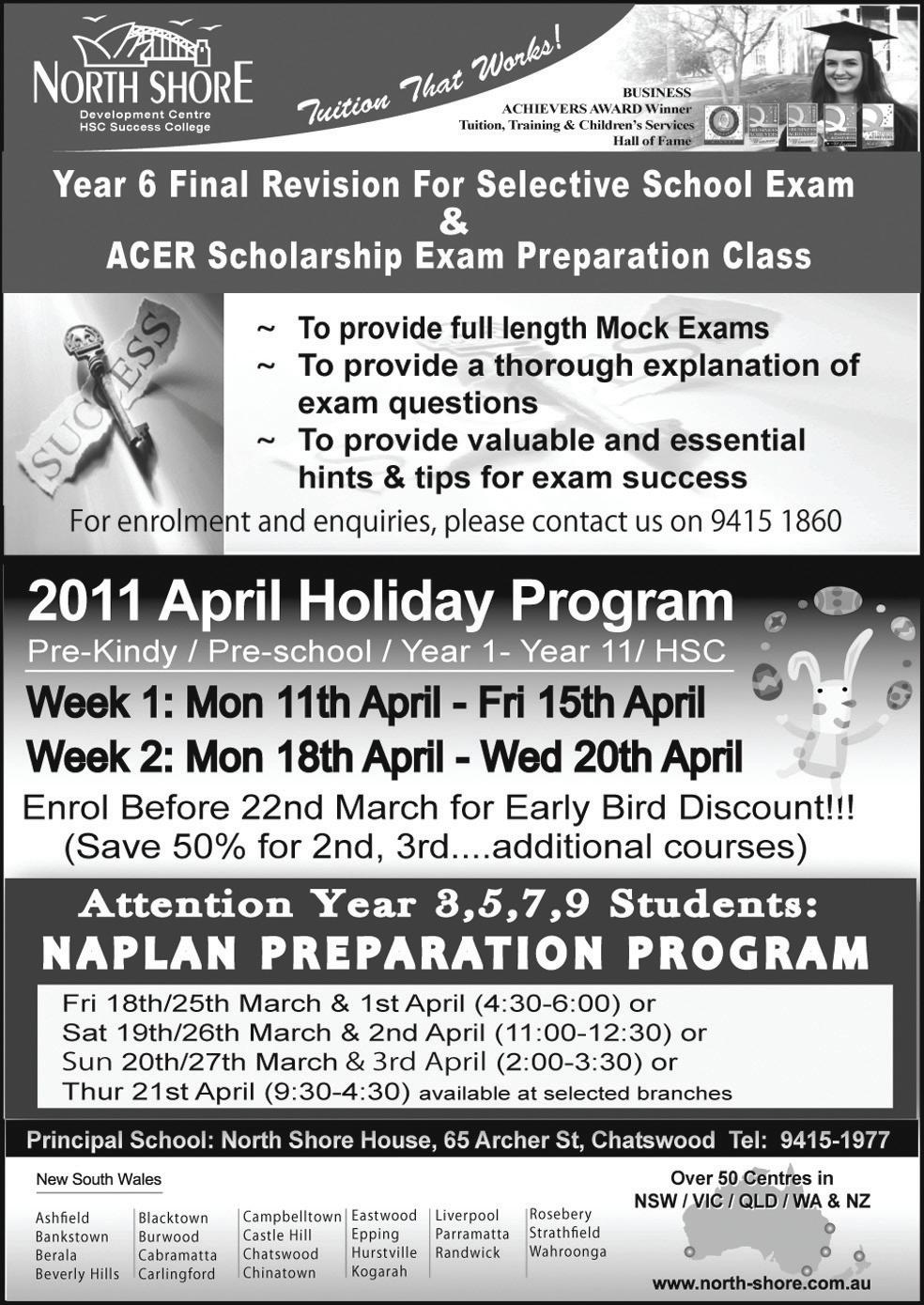
Scams, scandals and corruption. These are the three words that have been haunting the Dr. Manmohan Singh-led UPA government in India. As corruption has increasingly become part of our society, so has our tolerance towards any such scandals. Recently we have witnessed the Commonwealth Games and 2G Spectrum scams involving thousands of crores of rupees. As if this was not enough, the Indian Space Research Organisation’s (ISRO) commercial arm Antrix sold the S-band to Devas at an undervalued price, causing more damage financially. When it comes to the defence sector and especially the Indian Army, the situation does not look very promising either. Everyone knows about the infamous Bofors scandal of the ‘80s, during Rajiv Gandhi’s regime. In 1987 the Indian Army brought one of the most powerful and heavy 155mm Bofors guns into its artillery. The Indian Army initially planned to buy around 1500 of those monstrous guns, but the purchase was stalled due to corruption allegations after the army had bought just 410 pieces. Bofors are the same artillery guns which, you may remember, were used during the Kargil conflict in which these guns proved their real worth.
Unfortunately, India cannot afford to relax when one complete border is surrounded by the nuclear-armed but politically unstable Pakistan, and on the other side by the increasingly mysterious China. The reason why I call Pakistan unstable is well-known, as there is a constant battle between military rulers and extremist Taliban. But the reason why I call China mysterious is because no-one seems to know what the Chinese are up to. Firstly, the Chinese have rapidly improved and are still extending infrastructure including rail, roads and airports in border areas with India. Secondly, they have been modernizing their armed forces swiftly by mainly implementing reverse engineering to manufacture aircrafts, missiles and other military hardware. To implement reverse engineering one does not necessarily need to understand the scientific or mathematical concepts being used. Simply put, it’s an attempt to make a new device that does the same thing by simply duplicating from the original which saves time, as there is
less research involved compared to a machine that is built from scratch. For example, China’s Shenyang J-15 fighter aircraft is believed to be a reverse engineered version of the Sukhoi-33. Even China’s J-20 fifth generation aircraft is believed to be reverse engineered from its western counterparts. Thirdly and most significantly, both China and India which are busy creating a new world order, and are heading towards becoming superpowers. But they have already seen a short but bloody conflict in 1962. India has border disputes with China over the north-eastern state of Arunachal Pradesh which needs to be resolved at some point, sooner or later. Going back to the Bofors guns, after being in the army for more than two decades, they are well on the way towards being obsolete. The Indian army has been trying to modernize its artillery since the past few years, but this program keeps getting stalled mainly due to corruption allegations. What the army desperately needs are lightweight artillery guns that can be lifted by choppers or towed by a truck to any terrain in any weather conditions, particularly on the northeastern sector. One of the contenders in this category is the lightweight titanium body M777 Howitzer made in the USA by BAE Systems. The maximum effective range of this weapon can be up to 40km, depending on the type of ammunition being used. Even though these guns have proved their performance in the battlefields of Iraq and Afghanistan, leaked reports from the army suggest that these guns had fared poorly in direct firing and air portability trials. One more contender in this category used to be the Pegasus lightweight Howitzer by Singapore Technologies Kinetics (ST Kinetics), but the Defence Ministry had to freeze dealings with seven defence firms including ST Kinetics in June 2009, due to corruption investigations by the CBI. Procuring military hardware can be a very cumbersome process as there will be multiple stakeholders like the army who is the end user, babus from various ministries, as well as the supplier involved. Whatever equipment the army decides to purchase should be fit to meet its requirements without coming under any political pressure from any western country. The central government needs to put politics aside and focus on procuring equipment in the most transparent manner at the earliest, and prepare for war scenarios on two fronts in case of any eventuality.
Customer’s Comments
“I have dealt with so many travel agencies in Sydney, but yours was definitely the best customer service I have received. It went beyond my expectations. In fact, I could depend on you if something went wrong or I needed to make a change, even when I was overseas. I liked the honesty in your dealings and you never tried to misguide me on the price or anything else. I have recommended Travel Hut to a lot of our friends and they are equally happy.”



 - Ruchi Sanghi
- Ruchi Sanghi
Make

MARCH (1) 2011 <> 45 NATIONAL EDITION
your holidays more entertaining with a comfortable family tour
www.indianlink.com.au OPINION
Unfortunately, India cannot afford to relax when one complete border is surrounded by the nucleararmed but politically unstable Pakistan, and on the other side by the increasingly mysterious China.
Whatever equipment the army decides to purchase should be fit to meet its requirements without coming under any political pressure from any western country.
The new Honda Accord Euro
The new Honda Accord Euro Luxury is the latest in the popular Euro series for Honda. Honda Australia is very proud of this car as it not only reflects the true meaning of Honda with its high revving V-TEC engine, it truly is very much like a prestige European car.
The first test is always the touch and feel test. From the solid Audi-like thud when you shut the doors, to the quality soft touch plastics, you will find it very much like other prestige cars.
Interior
The interior ergonomics are also a benchmark where Honda has hit the mark, with easy-to-reach buttons and other controls.
In the car we are sampling, the Euro Luxury automatic, the front seats are fitted with full electric adjustments making it a very easy car to be comfortable in.
The sound system is a 6-disc unit with iPod connectivity which is a must now in this day and age. If you like your music, you will like the Euro luxury as the speakers certainly do a great job!
Steering wheel mounted buttons control the sound system, cruise control and trip computer amongst other things.
Leather trim is standard in the Euro Luxury and Euro Luxury Navi from the seats to the steering wheel. The seats are very supportive and have that sporty feel to them as well.
The 5-speed automatic gearbox can be set in a “S” mode where the gearbox holds a gear longer for maximum power or “manual” mode to allow the driver control over what gear to be in. This is controlled by a pair of paddle shifters behind the steering wheel. While it may seem a little gimmicky at first it is certainly useful at times as the engine loves to be revved to achieve the maximum power available.
Exterior
On the outside the Honda Euro is a beautiful looking sedan. The styling is visually appealing and not overdone in any area. The front is aggressive yet classy and the rear which hides an
ample boot is a touch conservative and stylish.
Xenon headlights are fitted to the Luxury Euro, similar to what you would find in more expensive cars. Front and rear parking sensors are also found ensuring safe parking.
Stylish 18-inch alloy wheels are fitted as standard in the Luxury Euro while 17-inch alloys are found on the Euro Standard.
What you have in the Euro is a very stylish, great value car,
making it one of the best mid-sized sedans to buy. Wheels magazine certainly thought so, naming it ‘Wheels Car of the Year’ in 2008 making it a great choice for anyone.
For more information and special offers on the Honda Accord Euro, visit our website www.trivett.com.au/honda or call Trivett Honda on the following numbers: (02) 9841 4157 for Parramatta or (02) 8822 1170 for Blacktown.



46 <> MARCH (1) 2011 INDIAN LINK
www.indianlink.com.au ADVERTORIAL


Singh Food and Spices Quantity Quality Service 143 Stephen Street (cnr Sackville Street), Blacktown Phone 02 9676 4677 Fax: 9676 4688 enquiry@singhfoodspices.com.au : www.indianspices.com.au Blacktown Aspice shop withadifference
A special senior
experience when Mr Bangaru Naidu had a major stroke, and his wife Gopma Naidu was totally devastated. She stayed by his bedside, prayed and made every effort to pull herself together. She was determined to get him back on his feet, and so she did to the surprise of everyone, as even the doctors thought it was difficult for him to survive this major stroke. Gopma laboured tirelessly to get him to physiotherapy and other required treatments and today, though on a wheelchair and without speech, Bangaru manages to stand up and take a few steps with support, which his devoted wife continues to gives him. You are moved to tears when you see them together. He is always cheerful, blossoming into an easy grin though he cannot verbally greet you, while Gopma reluctantly does, as it takes a lot of effort. The family has had its share of misfortune in the past few years, but they are united not only to face tough challenges, but also take things in their stride. They also create awareness in others of what could happen when you least expect it. Gopma’s daughter

every week for the bhajans conducted by the centre. She has also been active in service projects like monthly visits to nursing home inmates in the St George area, tree planting, visiting the infirm and sick at home, and providing food and comfort.
In spite of Gopma’s involvement in the care of her totally dependent husband, she continued her activities supporting various service organisations and offers her staunch support to RAIN (Resourceful Australian Indian Network Inc), a not-for-profit organisation dedicated to the care of seniors of Indian origin. She has put in lot of effort in raising funds for a day-care location for the seniors. She has never publicised her silent service work and continues to dedicate all the time she can spare, in spite of a tight schedule.
BY SUDHA NATARAJAN
Gopma Naidu is a unique woman. Despite her frail demeanour, this 74-year-old has proved to not just be a feisty, determined person, but one who has drawn on inner courage and strength to turn around her life.
Eight years ago the Naidu family had its most traumatic
Lalli Reddy was diagnosed with breast cancer and coming to terms with this shock took some time for the whole family. However, along with the treatment she also turned out to be an inspirational speaker, talking to friends and members of the public about her own experience and how important it is for women to have regular check ups and breast screening. Lalli’s daughter Radhika Reddy, a young lady with high community spirit and determination to help those who suffer with breast cancer, has rallied forth to raise funds for this cause. Together the family has decided to brush aside their own difficulties to help and support others. They certainly have a strong role model in Gopma.
Gopma has great faith in Bagawan Sri Satya Sai Baba and in the midst of all her caring activities, she has managed to be a very active member of the Sathya Sai Centre of Hurstville since its inception in 1983. Gopma has been involved in spiritual, service and educational projects of the centre, as well as the national organisation. She has taken it upon herself to gather flowers and make beautiful garlands

Gopma has made it her responsibility to help the aged, ailing neighbours with necessary assistance in sickness and difficult times. She is also a skilled gardener. It’s a regular occurrence to see Gopma dragging rubbish bins to be placed in front yards, and then replacing the neighbours’ bins for them. She has also been involved in the Salvation Army door knock appeals for many years. Gopma has been a great support to the old and infirm members of the community and also a good guide and preceptor to all the members.
It is totally awe-inspiring to find this 74-year-old lady striving with compassion for her fellow beings, while she herself faces the prospect of ageing, the trauma associated with an ailing husband who needs total support, family difficulties and health problems.
It was no surprise to those who know Gopma Naidu when she was picked for the CALD Carers’ Awards last year, initiated by the St George Migrant Resource Centre. The award was presented to her and three other seniors

Gopma has been a great support to the old and infirm members of the community and also a good guide and preceptor to all the members.

from CALD communities in the St George region in March 2010 during Seniors’ Week. RAIN officials Dr Gunu Naker and Dr Saroja Srinivasan nominated her for this award. Gopma was very touched and overwhelmed with emotion on receiving the award, as it was the first time her efforts were noticed and appreciated. Her husband Bangaru was equally thrilled, and wore a big smile through the ceremony and after.
It is truly wonderful to see that such a caring and compassionate individual did not go unnoticed, and that she has received well-deserved appreciation for her strength, courage and determination.
48 <> MARCH (1) 2011 INDIAN LINK
www.indianlink.com.au PEOPLE
Courage is a rare virtue, especially in the face of tragic mishaps, but a special woman has risen to the challenge


MARCH (1) 2011 <> 49 NATIONAL EDITION


















50 <> MARCH (1) 2011 INDIAN LINK


MARCH (1) 2011 <> 51 NATIONAL EDITION


52 <> MARCH (1) 2011 INDIAN LINK
technology Trysts with
Although the sport of cricket has now introduced technology to review the occasional ambiguous aspects of the game, there still exists doubt about its efficacy
BY RITAM MITRA

The introduction of the Umpire Decision Review System (UDRS) into the subcontinent for the first time was supposed to create definitive proof that technology is ready for a place in the game of cricket today. Instead, as the World Cup unfolds, not only the fans, but the players too, find it gives rise to more questions than answers.
The contention surrounding the UDRS in the World Cup has thus far been two-fold. First, the absence of “Hot Spot” has been widely criticised. This particular piece of technology has been extremely popular with players and officials over the last couple of years, and relies on infra-red cameras to pick up collisions between anything in the camera’s field of vision, and depicts these collisions with images conveyed to the officials. For instance, an impact between bat and ball from a crunched Sehwag cut shot would come up as a very intense white spot on the middle of the Indian opener’s blade, as a result of the rapid increase in temperature at this point, while a timid edge from a tailender would show up as a faint white spot on the edge of his bat. Hot Spot is especially useful in picking up edges where even extremely high-speed cameras cannot shed any light on the event.
Contrary to popular belief, however, Hot Spot’s absence is not a result of the BCCI’s well-known opposition to the technology. Indeed, Hot Spot is one of the few pieces of technology the Indian players find to be ready for use – Rahul Dravid and Sachin Tendulkar are averse to the ball-tracking technology that is a basic element to the UDRS, but agree

that Hot Spot is well and truly ready for international matches.
In fact, Hot Spot’s absence is due to problems far closer to home – the Australianbased Hot Spot cameras are extremely expensive and sensitive security equipment, based on the same technology used in fighter jets, tanks and even warships. They fall into the category of equipment that needs temporary clearance from the Australian defence department whenever taken out of the country, and the license also requires the equipment to be returned to Australia within 7 days after the end of the event in which they are being used. The owners of Hot Spot, Melbourne-based BBG Sport, declined to comment on their decision not to send the cameras after the ICC initially confirmed their availability for the semi-finals and finals. It is believed that perhaps the issues created by having to move the cameras between India and Sri Lanka, as well as the fact that the cameras cost $10,000/day (if four are used), may have had an influence on the decision.
As a result of Hot Spot’s absence however, the UDRS has been reduced to its three basic elements – a ball-tracker technology (in this case, Hawk-Eye), a super-slow motion camera and a high-quality stump microphone. The problem is, there are so many rules and restrictions regarding the ball-tracking technology that sometimes shortfalls in the technology can be caught out. And, in the spectacular tied match between India and England, administrators of the game found themselves with a lot to explaining to do after a review was requested during England’s innings.
Ian Bell was in sparkling form for England, and in the 25th over during their mammoth chase, England were more than 20 runs ahead of where India had been at the same stage. While on 17, Bell was struck on the
pads attempting a sweep off a straight Yuvraj Singh delivery. Billy Bowden turned down the subsequent Indian appeal, and the Indians turned to the UDRS for the second time in the subcontinent, after already having had a review turned down once in the match against Bangladesh. The crowd roared in delight when the replays showed the ball was going on to hit the stumps. Bell had already begun his walk back to the pavilion when he was called back by his batting partner, Strauss. The typically partisan Indian crowd then began chanting “Cheating, cheating!” to add to the acrimony of the situation, when they found out Bowden’s decision had been upheld to give Bell a crucial reprieve.
The issue was that the ball had hit the advancing Bell’s pad at a point where it was more than 2.5m from the stumps. Within the ICC rules pertaining to the UDRS, if a ball strikes a batsman with more than 2.5m left to travel to the stumps, the on-field umpire can choose to stick with his original decision and overrule the technology. It is believed that the ball-tracking technology loses its accuracy after 2.5m and as such, the umpires are able to transcend any decisions it makes. The problem is that none of the players seem to be aware of this rule, as Strauss and even Bell himself admitted after the match. Strauss went on to concede that “Belly was lucky to get away with it”, while Indian skipper MS Dhoni took a more philosophical approach, calling the event an “adulteration of technology with human intention”.
His comments were condemned by the ICC, who suggested that Dhoni should have known about the 2.5m rule before commenting on the decision. The BCCI in turn, as it tends to do, condemned the ICC’s statement regarding Dhoni’s comments. The messy affair threatens to take away from the fact that there is some
The problem is, there are so many rules and restrictions regarding the ball-tracking technology that sometimes shortfalls in the technology can be caught out.
fantastic cricket being played at the World Cup, but it does raise a lot of questions. Why aren’t the players, especially the captains, specifically aware of the situations in which the UDRS is considered reliable? Why isn’t the technology able to accurately predict ball paths of more than 2.5m after several years of trials? Does this now add to the BCCI’s case that this technology isn’t quite ready for the international circuit yet?
With all the amazing technologies we rely upon these days, it is a real concern that a centuries-old game has not been able to develop something to comprehensively erase doubt from the minds of professional sportsmen and paying spectators. No sport in the world is shrouded in this much uncertainty when it comes to the use of technology – at least football has the option of resorting to perfectly accurate replays, while tennis players have learnt to accept Hawk-Eye as extremely reliable. But with two-dimensional cameras, it is sometimes not even possible to tell whether a player has caught the ball cleanly in a game of cricket. Why can’t we make up our minds about which to trust – humans or technology? Perhaps it is purely the passion that surrounds this sport that drives players and fans to desire perfection; perhaps it is the unique intricacies that make up cricket that always leave us wondering. But, maybe it’s better to have a little bit of uncertainty in a great sport like this anyway.
MARCH (1) 2011 <> 53 NATIONAL EDITION www.indianlink.com.au SPORT
ICC World Cup India-England match at Banglaore: Zaheer Khan stops the sublime Ian Bell, but not before the UDRS saved him on a close LBW shout Photo: AP

54 <> MARCH (1) 2011 INDIAN LINK


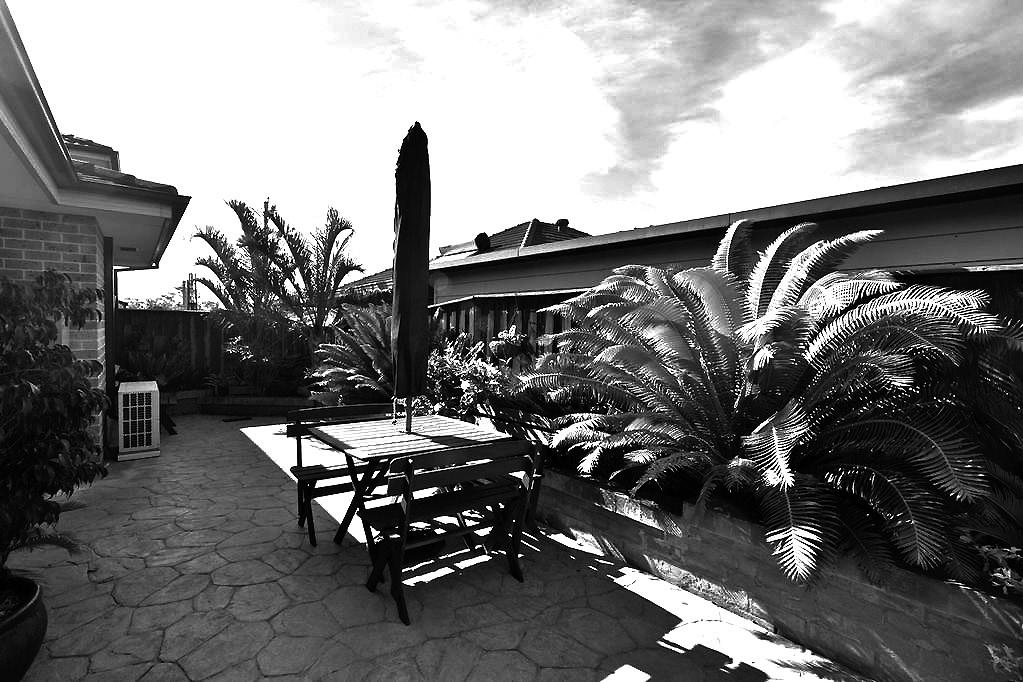









MARCH (1) 2011 <> 55 NATIONAL EDITION

56 <> MARCH (1) 2011 INDIAN LINK
beats to a healthier heart 10
As one of the most critical parts of our body, the heart needs looking after through healthy food and regular exercise
BY GEETA KHURANA
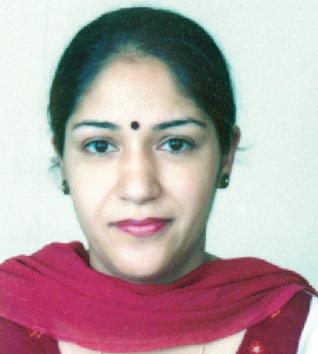
1. Fishy fun
Eat fish at least
twice a week.
Choose from tuna, salmon, mackerel, herring, and sardines, all of which are rich in Omega-3. They’re great to add to sandwiches, salads, and pastas or to simply grill, steam or bake fish (but not fry.) Any which way it’s cooked, fish will always make a delicious meal.

2. Shoo away saturated fats
Reduce the intake of saturated fats and transfats in your diet. The best way to do this is to limit the amount of solid fats like butter, cream and ghee added to food when cooking and serving it. Trim fat off your meat or choose lean meats, and go for fat-reduced dairy foods instead of regular ones.
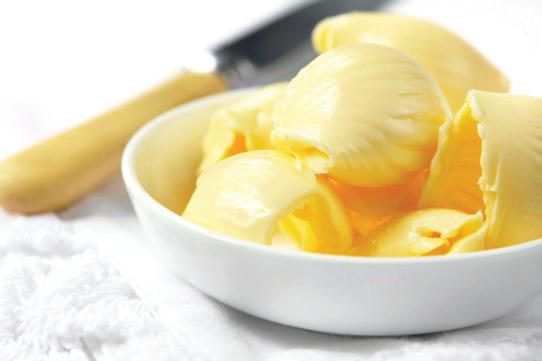
3. Prime up on protein
We’re told to cut carbohydrates and increase protein in our diet to lose weight and improve cholesterol levels.
However, high-protein foods could well result in gaining weight instead. Lean meat, poultry, fish and low-fat dairy products are some of your best sources of healthy protein. Legumes like beans, peas and lentils are also good sources of protein and contain less fat and no cholesterol, making them good substitutes for meat. Substituting soy protein for animal protein — for example, a soy burger for a hamburger — will reduce your fat and cholesterol intake.
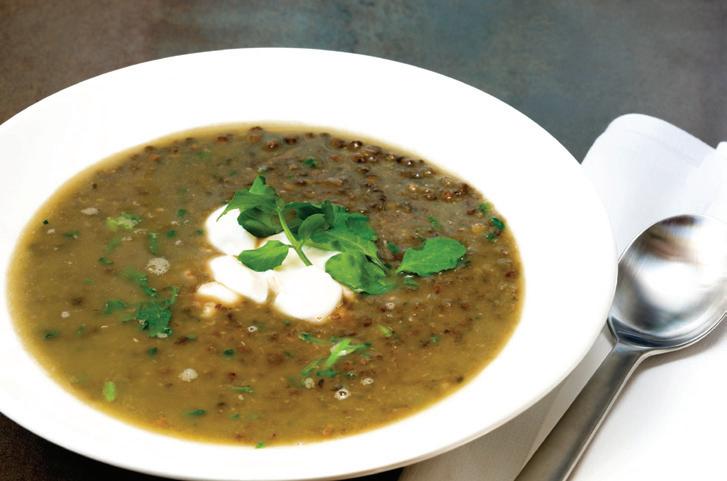
4. Find that flaxseed
Flaxseeds are small brown seeds which can be ground in a coffee grinder or food processor and can be added to cereal, homemade cakes and cookies or yoghurt. These are an excellent source of omega-3, fibre, and phytoestrogens.
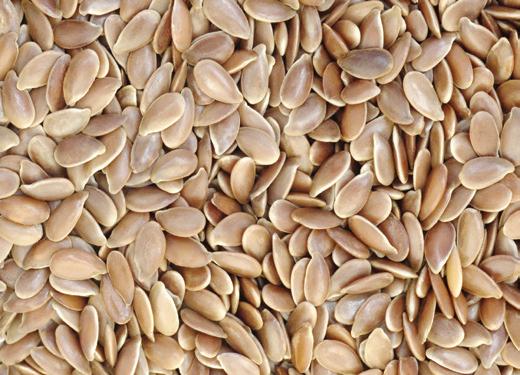
“Dil to abhi jawan hai!” (The heart is still young) is a saying we hear commonly from people middle-aged and over. This is what we all want and hope for, and is not that difficult to achieve. Today, conflicting medical reports sometimes make it hard to follow and analyse exactly what’s good for us and what’s not. For example, earlier, eggs were said to be bad for health, but that opinion is now revised, and apparently it is okay to eat an egg a day.
“Our research has shown that the main thing people are
5. Serious about soy

Some research indicates that in countries where people eat soy (such as Japan) the rate of lifestyle diseases is much lower than in western countries like Australia and America. Soy foods are a good source of iron and fibre, are low in saturated fats and contain no cholesterol. They have natural plant estrogens (phytoestrogens) called isoflavones with antioxidant properties. Enjoy soy and linseed bread as it has a low GI and is high in fibre. Use marinated tofu in kebabs and stir-fries, combine soy flour with wheat flour when baking, or add soybeans to casseroles and soups. Use soy milk, soy cheese and soy yoghurt, and choose varieties with added calcium. Vegetarian meals based on soybeans taste great too.
6. Bring on the berries
Cranberries, blueberries, raspberries, strawberries all are yummy and excellent sources of beta-carotene and lutein (carotenoids), anthocyanin (a flavonoid), ellagic acid (a polyphenol), vitamin C, folate, calcium, magnesium, potassium and fibre. Enjoy them as snacks, or add them to salads, muffins, cakes, yoghurt, desserts, smoothies, ice creams or fruit chaat.

7. Wholegrains work
Opting for wholegrain cereals and pastas is the healthy way to be. According to CSIRO chief research scientist
David Topping, evidence is emerging that eating more wholegrain foods can be as effective as drugs in reducing the risk of conditions such as heart disease. Dr Michele Allan, head of Go Grains says eating wholegrains is an easy form of preventing illness.

“You’re looking at less medication, less visits to the doctor and also, if you’ve got a calorie-controlled diet and an increase to four-plus serves of grains and legumes a day, you actually reduce weight over a period of time,” she says. Switching over from white bread to multigrain and having wholegrain pastas and cereals are definitely healthier options.
confused about when it comes to heart health is what the best diet is,” says preventive cardiologist Lori Mosca, MD, founder of Columbia University Medical Centre’s Preventive Cardiology Program and author of Heart to Heart: A Personal Plan for Creating a Heart-Healthy Family. “Every week there’s a conflicting research study or a new book that refutes last year’s book,” she says. But here are ten simple, uncomplicated tips to keep both dil and shareer jawan and healthy.
8. Shake off the salt

“Namak ke bina to khana ka maza nahin aata!”


(“You can’t enjoy food without salt!”) You would think this often, but eating a lot of salt can contribute to high blood pressure, a risk factor for cardiovascular disease. Reducing salt in food is an important part of a heart-healthy diet. Although reducing the amount of salt added to food at the table or while cooking is a good first step, much of the salt you eat comes from canned or processed foods like soups and frozen dinners, namkeens and bhujias us Indians love so much! Eating fresh food and making your own soups, stews and even namkeen mixtures at home can reduce the amount of salt you eat. If you like the convenience of canned soups, sauces and prepared meals, look for ones with reduced sodium.
9. Nuts are nice
Excellent for snacking, but limit your intake to a handful of unsalted nuts every day. These are again, good sources of Omega-3, folate, fibre, heartfavourable mono and polyunsaturated fats, phytosterols. Add a few walnuts to desserts, yoghurt, cookies and crunchy salads.

10. Value that vegetable oil
Make a change toward vegetable oils such as corn, soy, and safflower, which contain omega-6 fatty acids, and those containing omega-3 fatty acids such as canola and olive oil. All of these can help to lower LDL cholesterol when used instead of saturated fats such as butter.

MARCH (1) 2011 <> 57 NATIONAL EDITION
www.indianlink.com.au WELLNESS


58 <> MARCH (1) 2011 INDIAN LINK


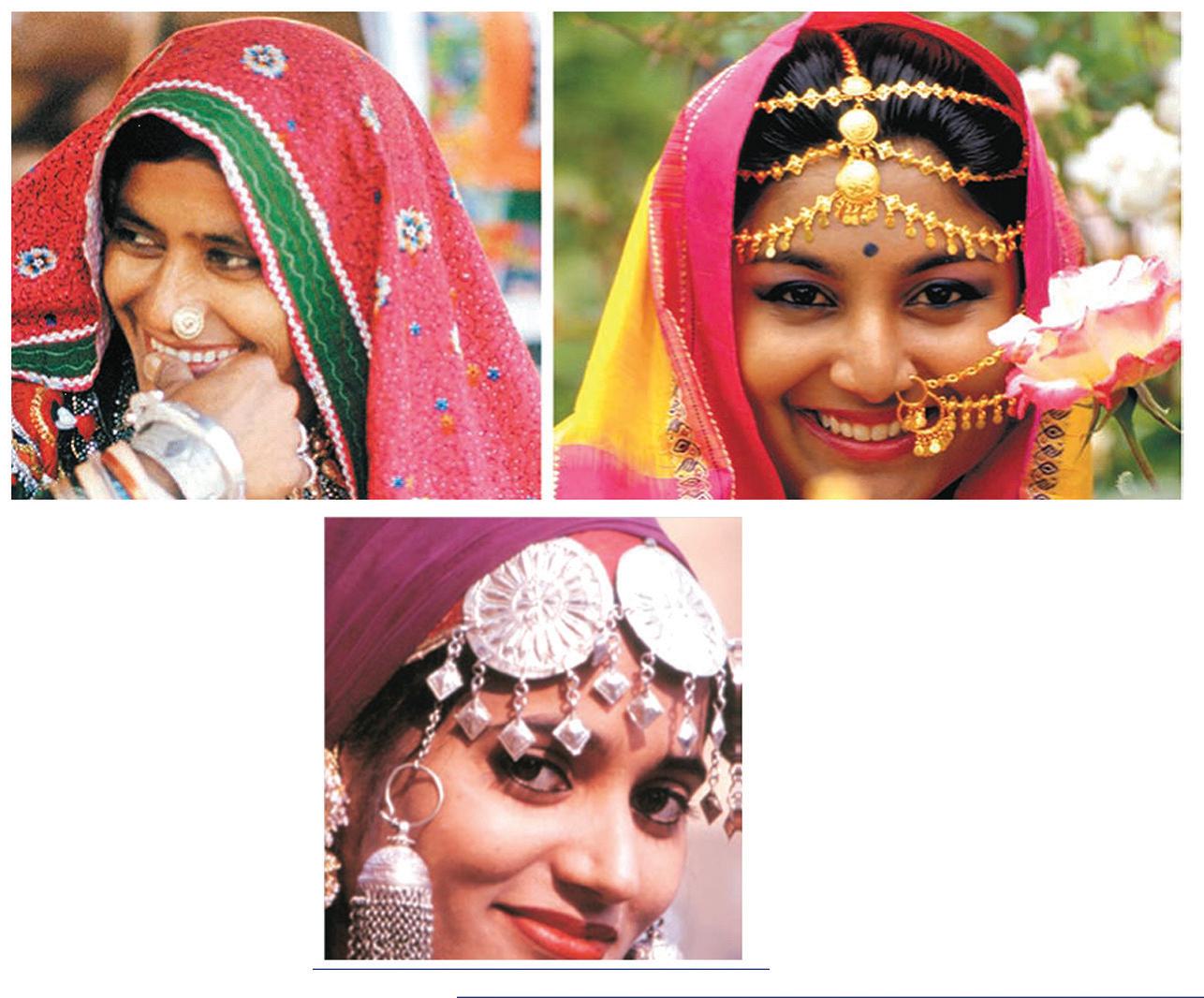




MARCH (1) 2011 <> 59 NATIONAL EDITION 5/32, York Street, Sydney, NSW 2000. Tel: (02) 9262 1661 Fax:(02) 9262 1217 Email: ram@ramworldtravel.com.au Web: www.ramworldtravel.com.au ONE STOP SHOP FOR: * Competitive international airfares to all parts of the world *Special airfares to Indian sub-continent *Package and tailor made tours to India and Nepal *Holiday packages to all parts of the world *Round the World Airfares *Hotel accommodation, car hire and guide services *Travel Insurance *DAILY DEPARTURE TOURS OF INDIA FROM: $975 P.P (ask for color brochure)
always make our travel arrangements through Ram World Travel for its excellent service and best price!”
“We
romising Phnom Penh P
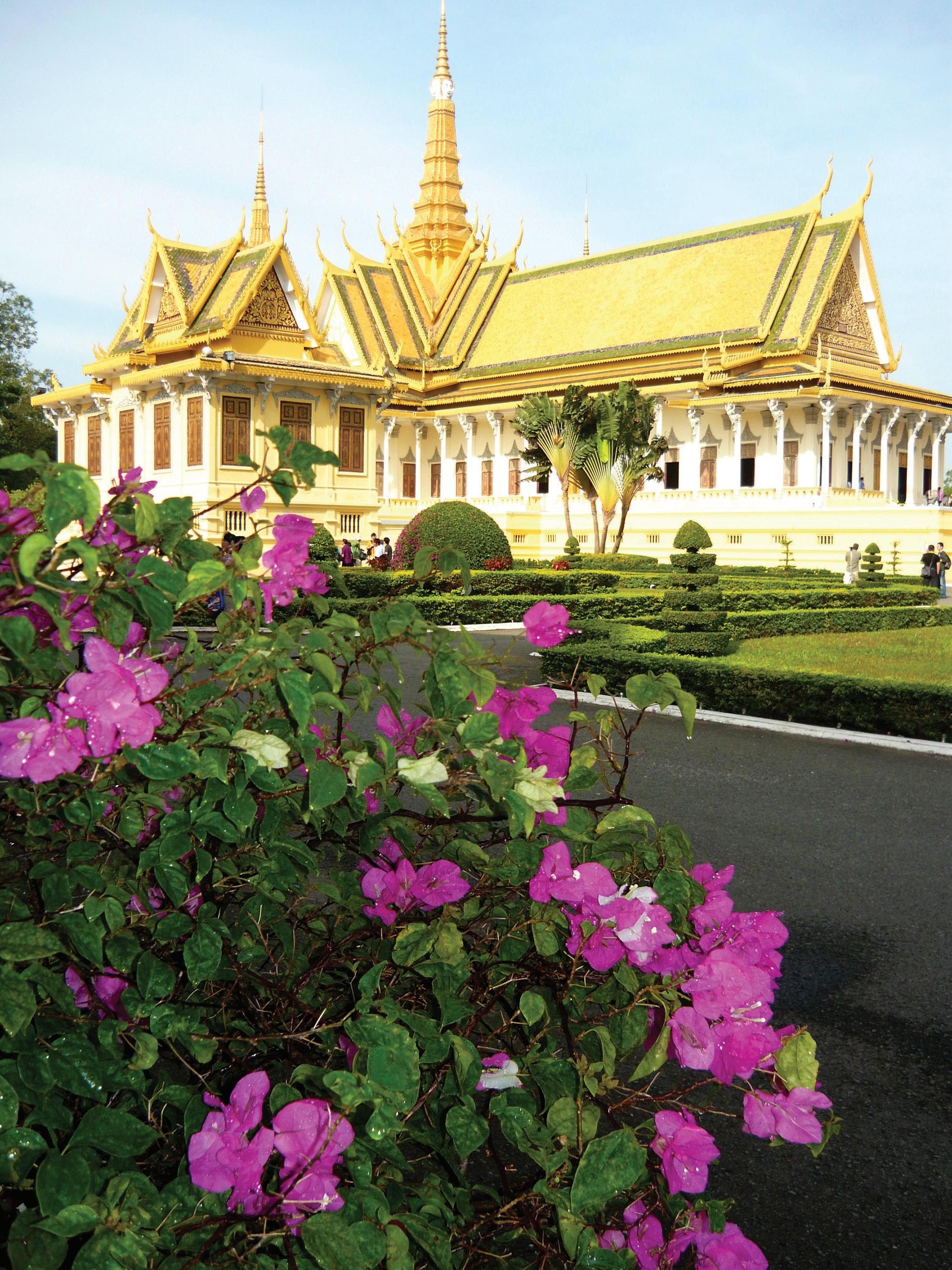 BY THOMAS E KING
BY THOMAS E KING
During many blissful years before April 17, 1975, Phnom Penh was known as the ‘Paris of Asia’. Nearly two decades of Khmer Rouge brutality and civil strife that followed that day totally halted development and the city – indeed, the entire country - slipped into the dark ages. In the past 20 years, however, the resilient capital of this buoyant land has undergone a major renaissance. Tourists in increasing numbers (some 2.5 million by the end of 2010) now arrive in the prospering and peaceful Kingdom of Cambodia.
The international gateway of Phnom Penh lures many who are equally enchanted and surprised to see a treelined city studded with historic landmarks and punctuated with high-rise commercial buildings. Beyond these structures, visitors can relax in spacious bougainvilleaaccented parks or browse through new shopping malls or vintage marketplaces. By night, they can dine on Khmer or Indian favourites in classy venues along palm-lined Sisowath Quay which parallels the Mekong River, check their email at broadbandequipped cafes, sample many trendy pubs and then retire to sophisticated lodgings complete with contemporary Cambodian decor, satellite TV, designer spas and sumptuous buffet breakfasts. Phnom Penh is once again a city of stylish refinement, enlivened with boundless enthusiasm.
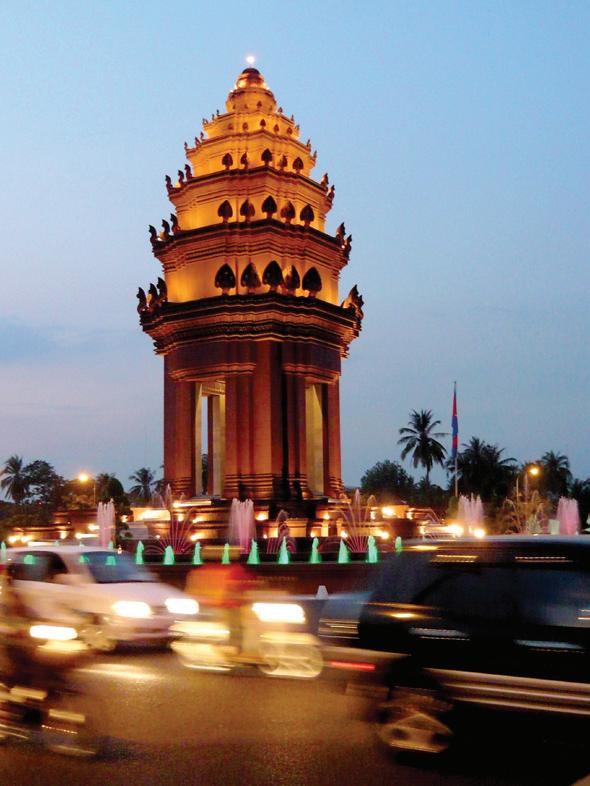
Legend relates that the city was founded in 1372 when a woman named Penh found four statues of the Buddha wedged in a tree trunk after a flood. In order to safeguard the relics she instructed workers to create an elevated knoll (phnom) and then build a pagoda on top of the 27 metre high mound. A 2 millionstrong city rapidly regaining status as a major Asian capital has since grown around this revered spot.
In January, I climbed the few dozen steep steps to the top of the tallest ‘hill’ in the city.
It is crested with a towering whitewashed pagoda supposedly containing the statues, several serene Buddhist temples and a little shrine dedicated to Penh. Lofty century old trees, however, obscured much of my view

60 <> MARCH (1) 2011
This charming city displays the best of Cambodia’s traditional, historical, modern and commercial affluence
TRAVEL
The fact that so many cultures could be represented as just a sample of the Indian community, is testament to the rich cultural heritage of India which was equally celebrated as part of Australia Day.
is but one stunning building in the Royal Palace complex
(Extreme left) Parklands lead to the Independence Monument which is bathed in light every evening
(Below, from left) The atmospheric Frenchbuilt Central Market is a visitor favourite filled with bargains
Sisowath Quay is a great place to stroll or just enjoy the ‘feast’ of restaurants and shops
The National Museum is studded with the world’s finest collection of Khmer sculpture
Photos: Thomas King
later, bring government troops face to face with communist soldiers belonging to a movement known as the Khmer Rouge. On that fateful day in April, communist forces swept into Phnom Penh. It marked the start of an unimaginable reign of terror that lasted until the Vietnamese army liberated the city in 1979.
One tangible reminder of those four years of horror is Tuol Sleng. Located in the central city, this former high school was turned into a Khmer Rouge detention and torture centre by Pol Pot, the regime’s infamous leader. The compound, still ringed by barbed wire, witnessed as many as 20,000 deaths.
With its graphic depiction of horrendous suffering, I didn’t find the Tuol Sleng Genocide Museum to be a pleasant place. However, as it was explained to me, the museum is important. It keeps memories of the atrocities committed on Cambodian soil alive and is the key to building a new, strong and just state.
When the residents of Phnom Penh returned from their forced exile in the countryside after the Khmer Rouge had departed, they found an intact but neglected city in shambles. Revitalisation began in the 1980s, but surged after a UN-brokered peace agreement lead to national elections in 1993. Following voting, the city saw the commencement of an economic boom that continues to this day.
If I had any doubts about Phnom Penh’s commercial promise they were dispelled when I visited a French-built marketplace in the heart of the city. (Cambodia came into the French sphere in 1863. For nearly a century this colonial power was responsible for constructing vital infrastructure, including the largest market in the city.)
Beautifully restored, the circa 1935 Central Market, as it’s commonly called, is a pilgrimage point for hordes of souvenir hunters from around the world. I bargained for a silver trinket box that I eventually got for US$5. (The US dollar is more commonly used than the local riel, while the value of the Australian dollar is not universally recognised for its current dominance.)
Other tourists were busy snapping up portraits of tiara-crowned apsaras, tee shirts with raucous logos or traditional designs, CDs of local music as well as just released movies, electronic goodies like MP3 players and the latest in photographic equipment, wood carvings, gold jewellery and even designer sunglasses from hundreds of happy vendors in the airy, dome-topped Art Deco building. Phnom Penh, as I ever so delightfully discovered, is truly back in business.
of the Royal Palace, the National Museum and Sisowath Quay. With many rooms overlooking the Mekong River, the self contained 12 storey “city resort” accented with Cambodian and French influences offers eight speciality food outlets, the exclusive So Spa and the most comprehensive sports club in the country. Tel (855) 23 218 328 200. E-mail sales_pp1@sofitel-royal-angkor.com. See www.sofitel.com

During my two-week excursion through Cambodia in January I also visited Battambang, four hours by road west of Siem Reap. (The centre can also be reached by boat from Siem Reap.) The nation’s second city is a quiet riverside town with beautiful Frenchperiod architecture and rapidly expanding tourist facilities. Tours into the countryside reveal tranquil village life and cottage industries where local products are produced.
EXCURSIONS
The jewel in the crown of Cambodia’s tourism industry, the UNESCO World Heritage listed Angkor Wat, is located just outside Siem Reap. The world’s largest religious structure originally built as a Hindu temple is part of a huge complex of monumental construction projects built between the 9th and 13th centuries. Daytime touring options are numerous; after dark enjoy shopping in Siem Reap’s markets and dining at very affordable Indian restaurants.
INFORMATION
As a representative office of the Cambodia Ministry of Tourism has not been established in Australia check with your travel agent for holiday advice. See the government’s official website www.mot.gov.kh Lonely Planet has published a guide devoted to Cambodia. See www.lonelyplanet.com/cambodia.
MARCH (1) 2011 <> 61
(Left) The golden roofed Throne Hall
www.indianlink.com.au



62 <> MARCH (1) 2011 INDIAN LINK
FIG-ure it out for yourself!
Cooking with figs can be plenty of fun
BY SHERYL DIXIT
What would past Mughal rulers, Cleopatra and Ulysses have in common? Very simply, a liking for the humble as we call it nowadays. The delicious as the fig is called in India, has enjoyed an elevated status since time immemorial. It has been in cultivation for over 3000 years and is a high-energy food containing calcium, protein, phosphorus, fibre, carbohydrates, minerals and vitamins. The fig is also known to have medicinal virtues and is considered a restorative food, aiding the body in recovering after illness. It is also considered an antidote to constipation, piles, asthma and corns. And in dried form or as a ripe fruit, figs always taste good.
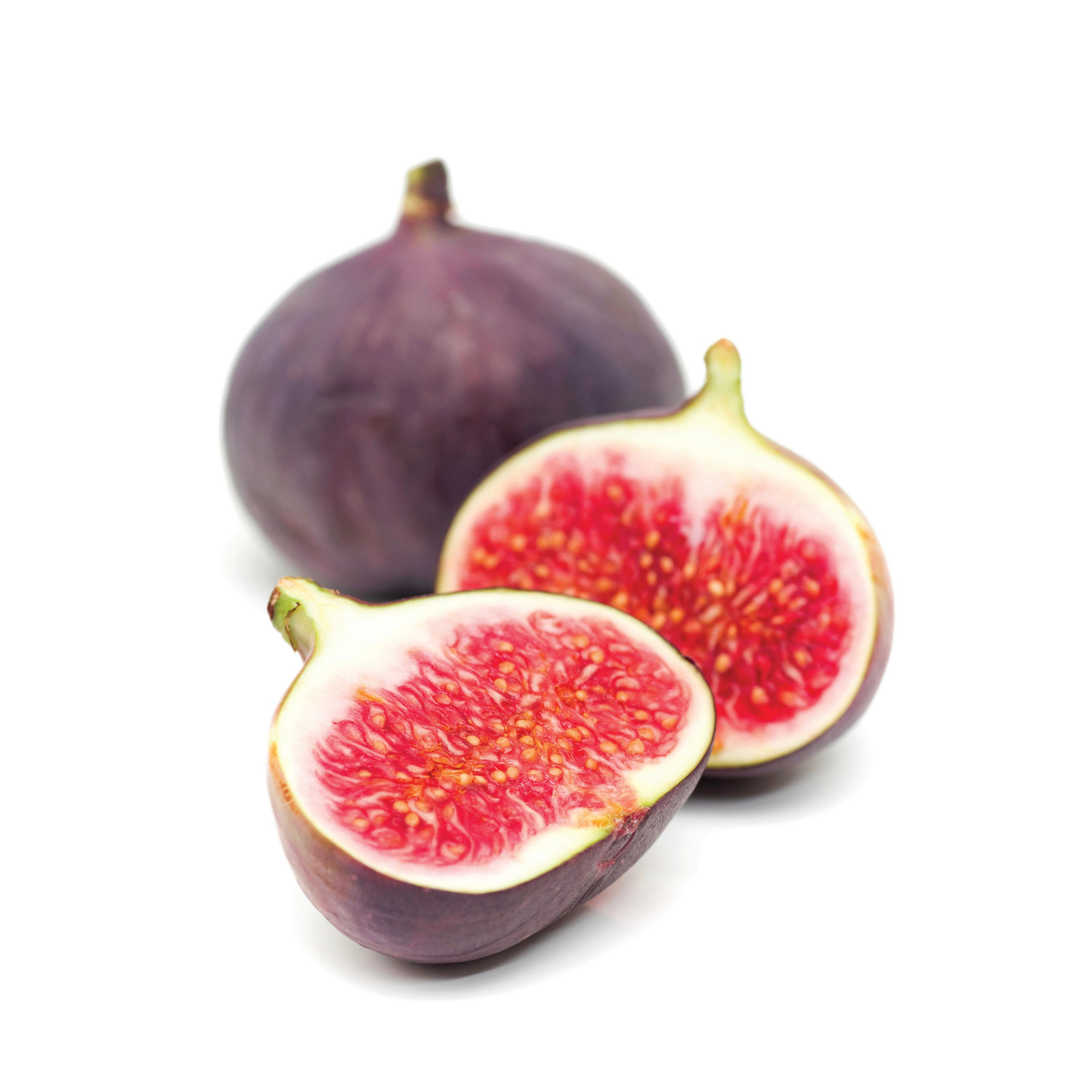
Figs are in season now, and if you thought it wasn’t possible to create a fourcourse meal with this amazing fruit, think again!
STARTER
How about fig and mozzarella skewers for starters?
You will need:
250 gms cubed mozzarella cheese
3 figs, diced
3 slices smoked ham, cut into long strips
2 tbsp olive oil
2 tbsp vinegar
1 tbsp honey
Small skewers
Wrap each mozzarella cube into a ham strip. Thread the mozzarella wrap onto a skewer along with a piece of fig. Repeat until you have several skewers. In a bowl, mix together the oil, honey and vinegar to make the dressing. Arrange the skewers on a serving dish and drizzle the dressing over figs and wrapped cheese.
SALAD
A fig salad with walnut dressing is perfect to begin the meal.
You will need:
½ cup walnuts, broken into large bits
80ml olive oil
80ml walnut oil
60ml red wine vinegar
1 tbsp wholegrain mustard
Pinch of sugar
Pinch of salt
2 heaped cups baby rocket leaves
3 figs, thinly sliced lengthways
Roast walnut pieces in a medium non-stick frying pan over medium heat, until well toasted. Keep aside in a deep bowl or jug.
Add the olive oil, walnut oil, vinegar and mustard and stir together using a whisk until well combined. Season with sugar and salt. Wash the baby rocket leaves thoroughly, shake out excess water and place in a large salad bowl. Add the figs. Pour the walnut dressing over the mix and gently toss to combine. Serve immediately.
guests totally impressed.
You will need:
½ kg chicken thigh fillets
10 gms dried figs
2 onions, finely chopped
3 whole dry red chillies
3 tbsp ghee
1 tsp caraway seeds (shahi jeera)
1 inch stick cinnamon
6-7 strands saffron
2 tbsp cream
For the marinade:
2 green chillies, finely chopped
1 inch piece ginger/8 pods garlic cloves ground together to a paste
1 cup yogurt
¼ cup cashewnut powder
2 tbsp red chilli powder
1tsp each coriander powder and garam
masala
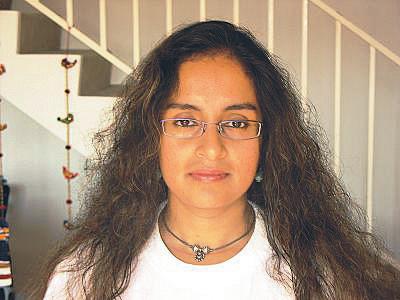
2 tbsp ghee
Salt to taste
2 tbsp fresh coriander, finely chopped
Soak the dried figs in a cup of water. Clean, wash and cut chicken into two inch size pieces. Peel, wash and finely chop onions. Remove stems, wash and finely chop green
pieces and set aside.
Mix all the ingredients of the marinade in a shallow bowl, add the chicken and figs and allow to marinate for an hour. Heat ghee in a pan, add caraway seeds and when they crackle, add whole red chilli pieces and cinnamon. Next, add the chopped onions and fry till golden brown. Add the whole marinated chicken and figs. Mix lightly and cook on high heat for three minutes. Add half cup of water and saffron strands. Stir well and cook on high heat for five minutes, or till the liquid thickens and chicken is tender. Stir in the cream. Serve garnished with fresh coriander. Great with rice as well as roti.
..................................
DESSERT
Dessert couldn’t be sweeter than Anjeer burfi
You will need:
12 dried figs
1/3 cup mixed nuts, broken into small pieces (almonds, pistachios, cashewnuts, walnuts)
1 tsp ghee
¼ tsp cardamom powder
A few saffron strands
For the garnish:
nuts, ghee, cardamom powder and saffron, and knead into a soft dough. Roll out into a rectangle of approximately 4 x 3 inches with about ½ inch height. Garnish carefully with edible silver leaves. Cut into smaller squares and serve.
ANYTIME TREAT
You can’t go wrong with a decadent honey and fig milkshake
You will need:
100 gms dried figs
4 cups milk
30 gms sugar
50 ml honey
1 scoop vanilla ice cream
1 heaped tbsp cream
3-5 drops rose essence (optional) Soak the figs in a cup of water for 4 to 5 hours, then blend till smooth in a food processor. Add the milk, sugar and honey. Blend till frothy.
Add the cream, ice cream and essence and blend again till thick and frothy. Serve ice cold, with another scoop of ice cream, if you really want to be naughty!
MARCH (1) 2011 <> 63 NATIONAL EDITION
..................................
..................................
..................................
FOOD www.indianlink.com.au
First love
BY SIVARAM HARIHARAN IYER

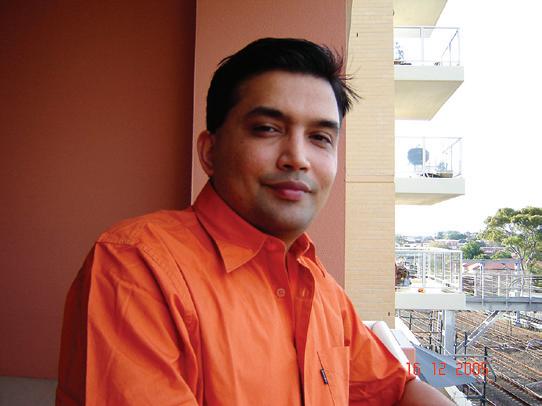
Rahul Sharma took his guard at the crease, helped on by the umpire and then assumed his right-handed batting stance. This would be the last over of the finals of the 2007 ICCI knockout tournament at the SCG. India had somehow scraped through to the big show, after edging past other teams and they now faced mighty Australia in the finals. Chasing 258 to win in the allocated 50 overs, India were precariously placed at 254 for the loss of nine wickets at the start of the 50th over. Rahul tapped his bat lightly on the pitch and waited for the “Destroyer” as they lovingly called Shaun Elders, the feared spearhead of the vaunted Australian pace attack. He was very nervous and sweat poured down his forehead. It was Elders who had ripped through the mercurial Indian batting in his second spell after India were comfortably cruising at 245 for 3 at the end of the 44th over. In a space of four overs, the Destroyer had flipped India on its heels and now they were tottering towards an all-too-familiar snatching of an improbable defeat from the jaws of victory. Rahul, who had come in at the fall of the first wicket at 23, was the lone anchor of the Indian reply with a well-hit 103. He was India’s only hope as the non-striker, leg-spinner Hari Singh, was a dud with the bat. Rahul focused hard as Elders rushed in to deliver his accurate and lightning fast deadly thunderbolts. The hopes of a billion plus Indians rested squarely on him.
Ball 49.1
An unplayable ball, which only the likes of Elders could produce, the delivery pitched at good length just outside the off-stump and whizzed past Rahul’s edge just as he withdrew his bat in the nick of time. Elders ran his hands through his hair in disappointment. That was a close call indeed! A big ‘aaah’ went around the stands as Australian fans despaired collectively at the close call. But the batsman was visibly relieved. He was still alive and India could still win. In this tense situation, he looked around for any signs of inspiration. His teammates in the pavilion also looked visibly uneasy.
Captain Vivek Amarnath had buried his face in his palms. As Elders turned around at the top of his bowling mark, Rahul knew that he had to find the inspiration within himself, an inspiration to create history with one stroke of the bat. All his life he had been a survivor and a fighter, and cricket was just an extension of his life. He had survived against all odds after going through infinite disasters that could have easily put down those with weaker wills. His decision to become a cricket player at the age of 25 was one such move for survival.
Ball 49.2

It was another of Elders’ magical delivery, much similar to the previous one. When Rahul again withdrew in the nick of time, the ball just whizzed past the off-stump. Another massive sigh rippled across the stadium and again, Rahul
himself breathed an audible sigh of relief. He had survived once more and again, his thoughts drifted back to the past. Rahul had started his sporting life at the age of 13 not as a cricketer, but as a hockey player. And he had been a very good one. Endowed with superb reflexes and hand-to-eye coordination, he excelled in India’s national sport with an all-round display. He could attack, defend and also goalkeep brilliantly. He had a sledgehammer of a penalty corner drive and his dribbling was immaculate. His field vision was second to none and all his coaches predicted another Dhyan Chand in the making for India. But hockey was also the cause of much heartbreak for Rahul.
Ball 49.3
Elders charged in like a diesel loco and this time the delivery was short pitched and Rahul reared back in time as the ball flashed past his face into the hands of wicket keeper David Chalmers. Rahul knew that Elders had delivered this bouncer only to unsettle him and next time around, he could expect a deadlier selection from Elders’s copious arsenal. Once again his thoughts switched back to his hockey days. As a precocious teenager, Rahul had represented his state in the sub-junior and the junior levels, but at the national level, he was only an extra. In spite of his enormous talent, Rahul could never make it to the starting 11 of the national hockey side of any age bracket and the reason for this was nothing short of politics. Rahul’s father was just a middle class battler, an employee of the Life Insurance Corporation of India, and consequently had no influence beyond his small circle of friends and work colleagues. It was always heartbreak for the young man whenever the national side was announced. But he still stuck to his sport with dedication and devotion.
Ball 49.4
Elders charged in again to deliver a beautiful yorker and Rahul brought down his bat just in the nick of time. Else, his middle stump would have shattered and gone flying into outer space. That was another close call and Rahul was visibly rattled. His thoughts again flew back to the past as Elders slowly headed back to the top of his long bowling mark, rubbing the ball furiously on his pants. After graduation, Rahul had joined the Indian Railways, who employed him for his hockey skills. He represented the railways in various national tournaments with distinction, and yet fell short of making the national senior side. Each Champions trophy, Olympics and FIFA world cup was dejection all over again. But he still did not give up. In the Beighton Cup at Calcutta, he played extraordinary hockey and helped the Railways to make it to the finals where they lost to the Services on Penalty strokes. But as usual, he somehow failed to catch the eye of the selectors. The usual reason was that he needed more experience. But that year was the final straw that broke the proverbial camel’s back of Rahul’s hockey.
Ball 49.5
The ball reared up like a black mamba from good length and hit him straight on his face. Rahul, who was wearing no helmet, was immediately knocked to the ground by the impact

64 <> MARCH (1) 2011 INDIAN LINK FICTION
Despite compromising the love of one sport for the glamour and money of another, the protagonist compromises neither dedication nor talent
of the delivery. He writhed in pain as he covered his bloodied face with his palms. He could hardly comprehend what was going on around him as the pain chewed into his facial bones and his nose was splattered. By the time he regained himself, he was in the dressing room surrounded by the team medico and fellow teammates. Rahul once again switched himself to the past. It was the year 2004 when Rahul gave up hockey in total frustration and quit his job from the Indian Railways to the chagrin of his family and fiancée. He had now decided to switch his allegiance to cricket. Cricket was where all the big money and glory lay and Rahul was determined to put his superior sporting abilities towards this end. One of the other reasons was the enormous financial pressure on his family because of the impending wedding of Rahul’s younger sister. To compound this, his father Amar Sharma, was a compulsive gambler at the Mahalaxmi horse races and had no savings amassed for a rainy day. So the onus was squarely on Rahul’s young shoulders to come up with the dahej money, a must in most opulent Punjabi weddings. Unlike cricket, there was no big money in hockey and that’s why he decided to make the switch. Rahul had dabbled in cricket now and then, and had good batting abilities. Added to that, he had the Punjabi puttar confidence of making it good. Jo bhi hoga dekha jayega…was his motto.
In the next 12 months, he honed up his batting skills at the Matunga Gymkhana. It was then that he made a pact with the devil, and watched philosophically as his exasperated fiancée deciding to marry a rich Wall Street software professional instead. Rahul had simply decided to take a short cut. He had approached the local MLA, thug Pandurang Patil, for a spot in the Mumbai Ranji side and was promised one for an exchange of Rs 10 lakh. Rahul amassed whatever meagre savings he had, but he could raise only Rs 50,000. The rest of the money was borrowed from a local mafia loan shark, Romeo Akhtar, with a three-year window to return the money. By that time, Rahul would end up owing Romeo about 60 lakhs, including the accrued interest. Rahul knew that, somehow, he had to break into the Indian team within that time, as that was where the big money lay. It would then be makkan (as they said in Bambaiyya Hindi) for him to even make a crore as long as he played along with some bookies now and then. Romeo himself expected this out of Rahul. Anyway the clock was ticking for the young man. If he did not return the money, Rahul would lose his house and would have his knees shattered and his right palm amputated, and he knew that Romeo would surely keep his promise.
Rahul batted like a man possessed and within a span of two years, he made it to the national team. But he had also managed to pull some strings along the way, thanks to his politician friend Pandurang Patil. Once he made it to the Indian test side, there was no looking back for him. Now he was on the verge of cricketing glory at this ICCI tournament. A victory here would take care of all his debts in one stroke and he could get the dreaded mafia off his back. Of course the adulation, fame and fortune that followed was no less an incentive. As Rahul drifted back to the present, he could overhear Captain Amarnath discussing with team manager Milind Joshi the merits of declaring Rahul ‘retired hurt’ and throwing in the towel. It was then that he screamed, “I’m going back to play the last ball, Skipper. I can do it! We are not going to wimp out of this!”
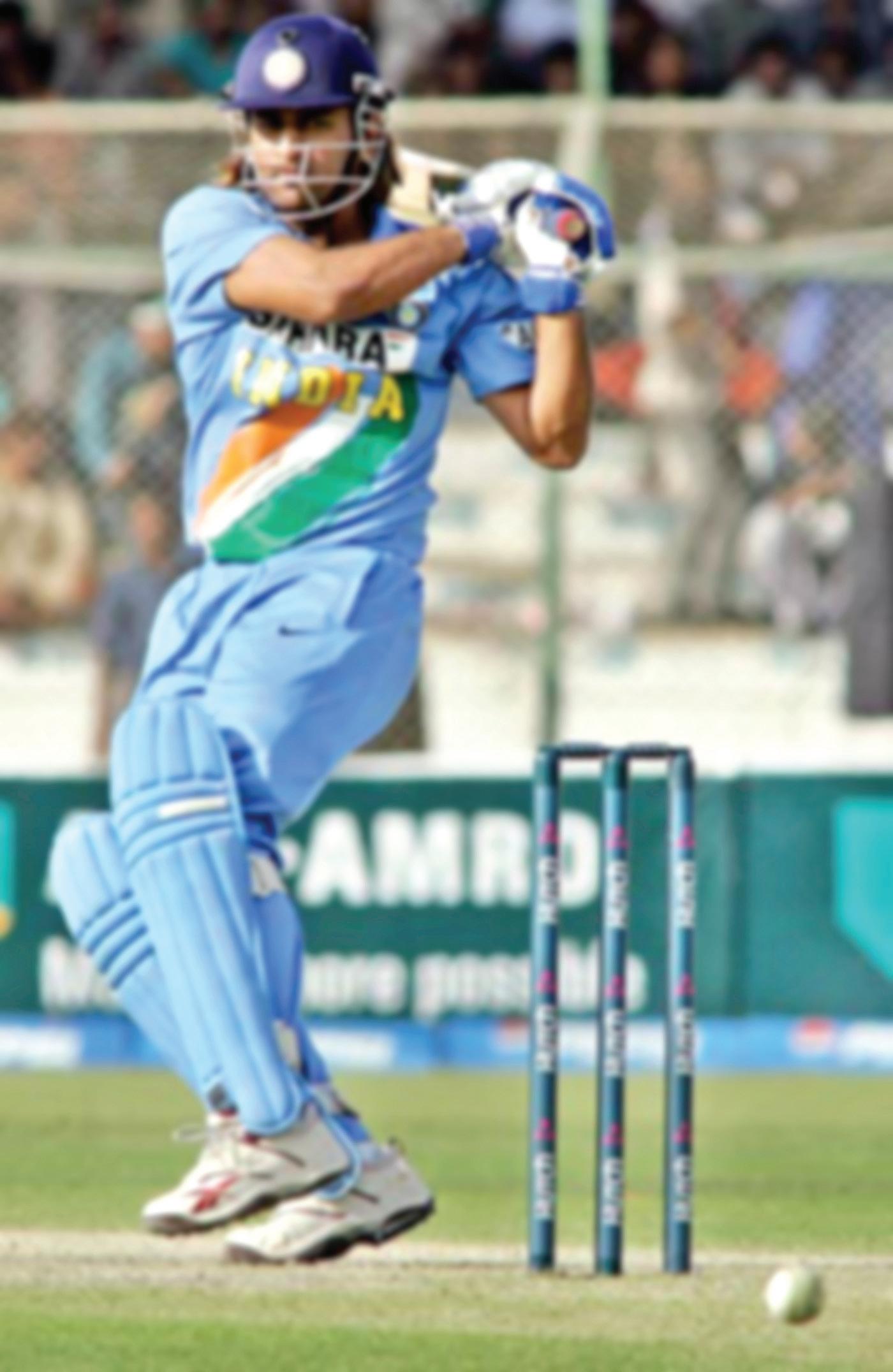
“Calm down, man, you are in no condition to play,” retorted Amarnath, gripping Rahul’s hands, and for the next few minutes a heated debate raged on whether he should be allowed back into the field for one more crack at glory. Suddenly, Rahul jumped up from his stretcher and grabbed his captain by his shoulders.
“Send me in, my captain. This one is for all of us. Hind!”

And what happened next would go down the annals of international cricket as one of the most courageous acts by a player for his country. The entire stadium gave Rahul a rousing standing ovation as he walked in with a heavily bandaged face with only his eyes visible through the slits of the dressing. He was still bleeding from his nose as he took guard and waited for the Destroyer to bowl the final ball of this match.
Ball 49.6
Elders was in no mood for mercy even though he had made an astounding gesture of sportsmanship by shaking Rahul’s hand before he went on his way to the top of his bowling mark. The equation was 4 runs to win in one ball and as Elders came thundering in, it seemed to Rahul as if the skies were tumbling down on him. When the ball finally left the Destroyer’s hand Rahul somehow had a premonition that this would be a replica of the earlier ball that had floored him and this time he was ready for a hit. In one magnificent move, Rahul went down on his right knee in the classic Kanhai style and hooked the ball over the outstretched arms of the leg slip fielder. The ball fell just short of the boundary ropes and hit the advertisement boards with a thud. India had won the match and this was surely one of the finest moments of cricket and of personal courage. The entire stadium including the Australian team burst into a thunderous applause for the wounded hero.
Rahul was drowned by his ecstatic teammates and for a while they totally forgot about his splattered nose. He was too numb with excitement to feel the pain, and it was only during the post match awards that he grimaced while accepting the Man of the Match award.
That night, alone in his hotel room, Rahul felt at the top of the world.
But suddenly his attention was caught by his lucky charm: his hockey stick that he always carried with him. And then he drifted into his dream, the one that he had always dreamt and which would be with him till his last breath. It was the finals of the hockey world cup and the India were tied 2-2 with archrival Pakistan with a minute to go before the final hooter. India had earned a penalty corner and Rahul was the striker. Rahul had scored both the two earlier Indian field goals and now was on the verge of a hat trick if he could get the shot past the tight Pakistani defense and the world’s best penalty corner saving goalkeeper, Shoab Abbas. He was totally focused as he waited for the ball at the top of the striking circle. And then he saw the ball coming to the stopper, Dhruv Deol who made a crisp job of it. Rahul then unleashed his trademark bullet drive with the marksmanship of an Olympic pistol shooter. The next instant the ball had arrowed through the narrow gap in the Pakistani defense and between the goalkeeper’s pads, getting a slight deflection, and tore through the back of the net. India was the hockey world champion and had regained all its formal glory. saw himself lifting the coveted trophy and his eyes were moist……hockey would forever be his first love!
The next morning, Rahul was discovered dead by his teammates. He had died in his sleep from a blood clot that had entered his brain. His hockey stick was clasped to his chest - and there was a beautiful smile on his handsome face.
(This story laments the demise of Indian hockey and countless players like Rahul whose talents are nipped in the bud by noxious politics. It is also dedicated to the heroic display of Indian bowler Anil Kumble who once famously bowled with a broken jaw.)

MARCH (1) 2011 <> 65 NATIONAL EDITION
www.indianlink.com.au
BUZZThe
Ma-beti on screen together
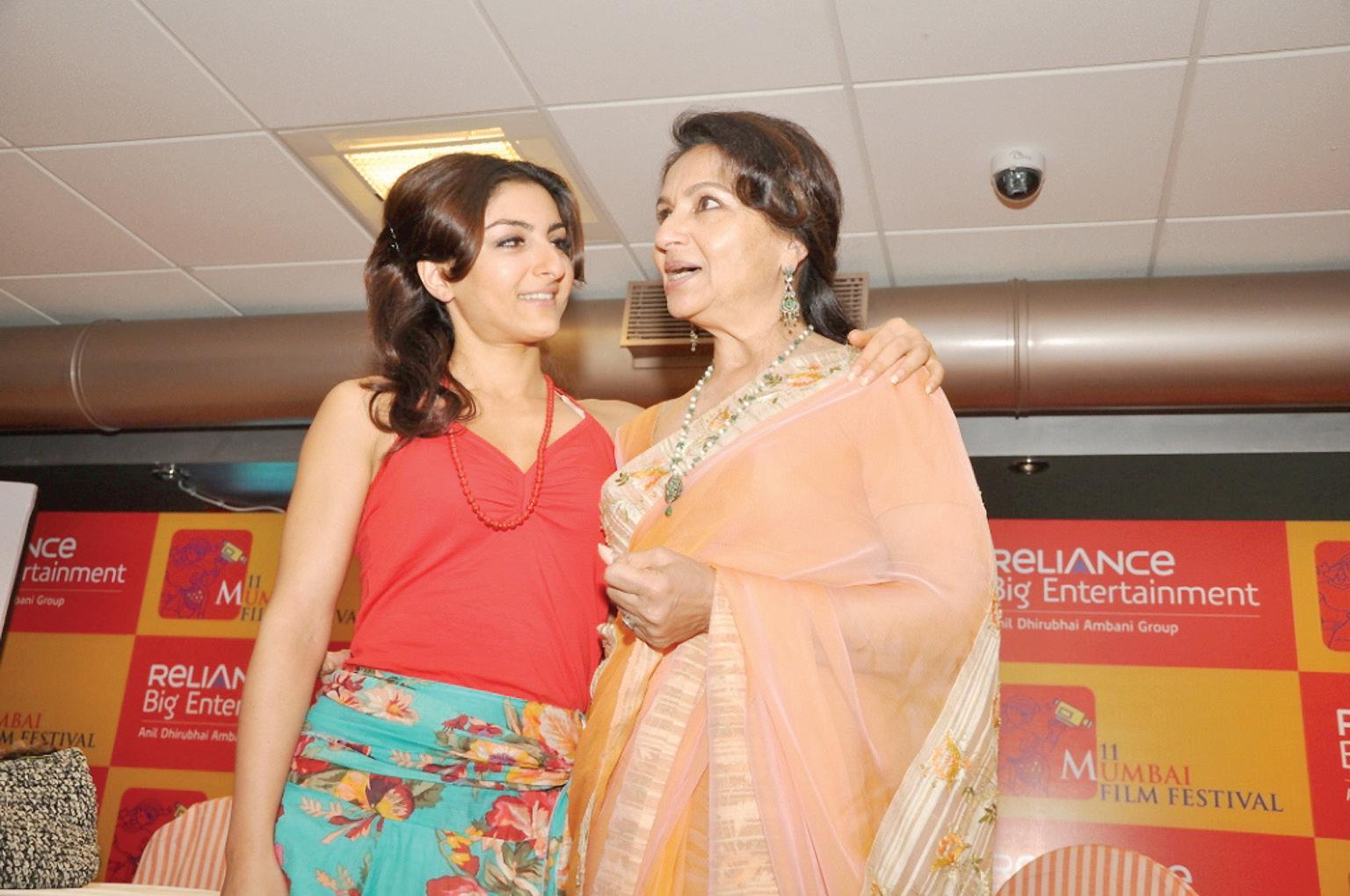
Bollywood veteran Sharmila Tagore will soon be seen in a British movie. Life Goes On, made by Indian-origin filmmaker Sangeeta Dutta, releases in Britain March 11 and in India March 25.
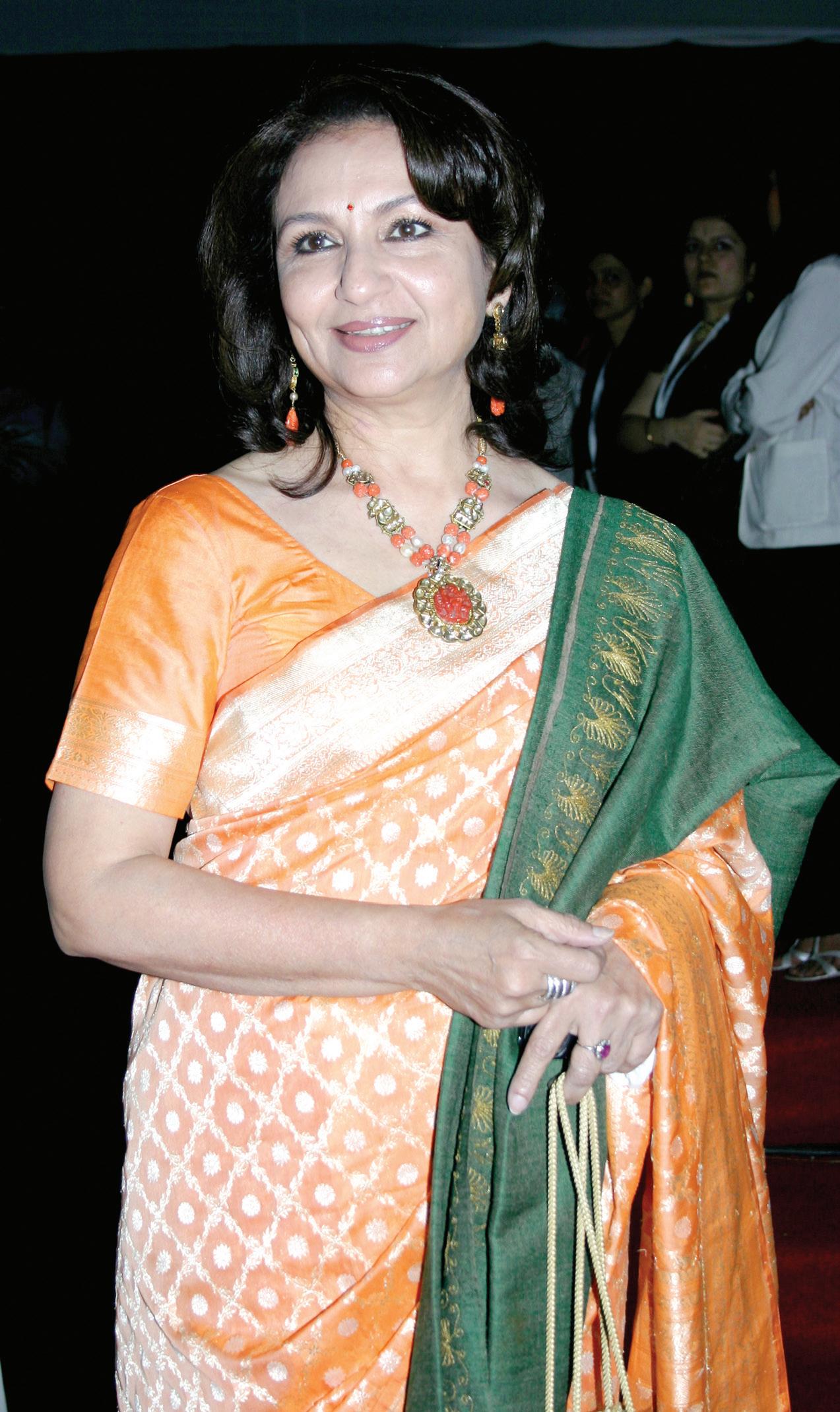
The London-based movie explores the relations between a grief-stricken father, played by acclaimed actor Girish Karnad, and his three daughters, after the death of their mother Manju, essayed by Sharmila.
The actress has played a mother on screen umpteen times in films like Viruddh and more recently in Break Ke Baad. But this role is somewhat different. You see, the movie marks the first-time pairing of Sharmila and her real-life daughter Soha, who plays the youngest child in Life Goes On.
Sharmila says she enjoyed every bit of the experience working outside of India’s industry, especially, the optimum utilisation of time and professionalism on the sets.
Bryan and Sonu in a duet?
Singer-composer Sonu Niigaam is elated at an invitation to visit Canadian rocker Bryan Adams. The two shared the stage at the ICC World Cup 2011 opening at Dhaka.
“Brian surprised me by singing along my song during rehearsal...and he has invited me to visit him when I go abroad next,” said a visibly thrilled Sonu who will host the singing reality show X-Factor for STAR Plus.
Recently, Sonu surprised his audience by giving 54 voices to the title song of Tees Maar Khan, starring actors Akshay Kumar and Katrina Kaif.
“But the one I enjoyed the most was singing in Akshay Kumar’s voice,” said Sonu, who has been approached by Guinness World Records for showing 54 variation of his voice in that song.
“The Guinness Book has sent me a letter, but they want to listen to all the tracks again. They want the proof of 54 tracks. I will show them when I get time,” he said.
Looks like Sonu’s heading for starry heights, good luck to him!
Priyanka-Shahid back together
But only on screen, it would seem. After their much-publicised on-off romance forming grist for the media mill, Shahid
“We managed to pack in a lot of work in very little time. Nobody was late, everything was clocked. The cast and crew would eat something before starting work, and worked five hours at a stretch. Here, we start work at noon and then break for lunch at 1.30…”
Kapoor and Priyanka Chopra will finally be seen together in a romantic setting. The well-matched jodi will star opposite each other in Kunal Kohli’s as-yet-untitled film. “Yes, Priyanka is absolutely confirmed for my film,” says Kohli. “I don’t think either Shahid or Priyanka would ever give more importance to factors other than the script to choose a film. And Priyanka is a professional. If she agreed to do my film, why would she walk out or have second thoughts?” It was suggested that the actress was reluctant to confirm the offer because of her hectic schedule. But Shahid, on the other hand, readily agreed to do Kohli’s romantic film. The couple’s relationship at present remains a mystery. Priyanka wasn’t present at Kapoor’s starstudded birthday party recently, though she sent him a white helmet as a gift. So will an on-screen romance ignite feelings offscreen too? We’ll have to wait and see!
Dum maro dum for Deepika
Deepika Padukone has dished it out for Dum Maro Dum, title song of the movie due to release in early April, and its choreographer Bosco hopes that it surpasses the popularity of Darling... Munni... and Sheila... which have all created their own niche.
“I think it should be one of the biggest after Darling..., which is currently in the
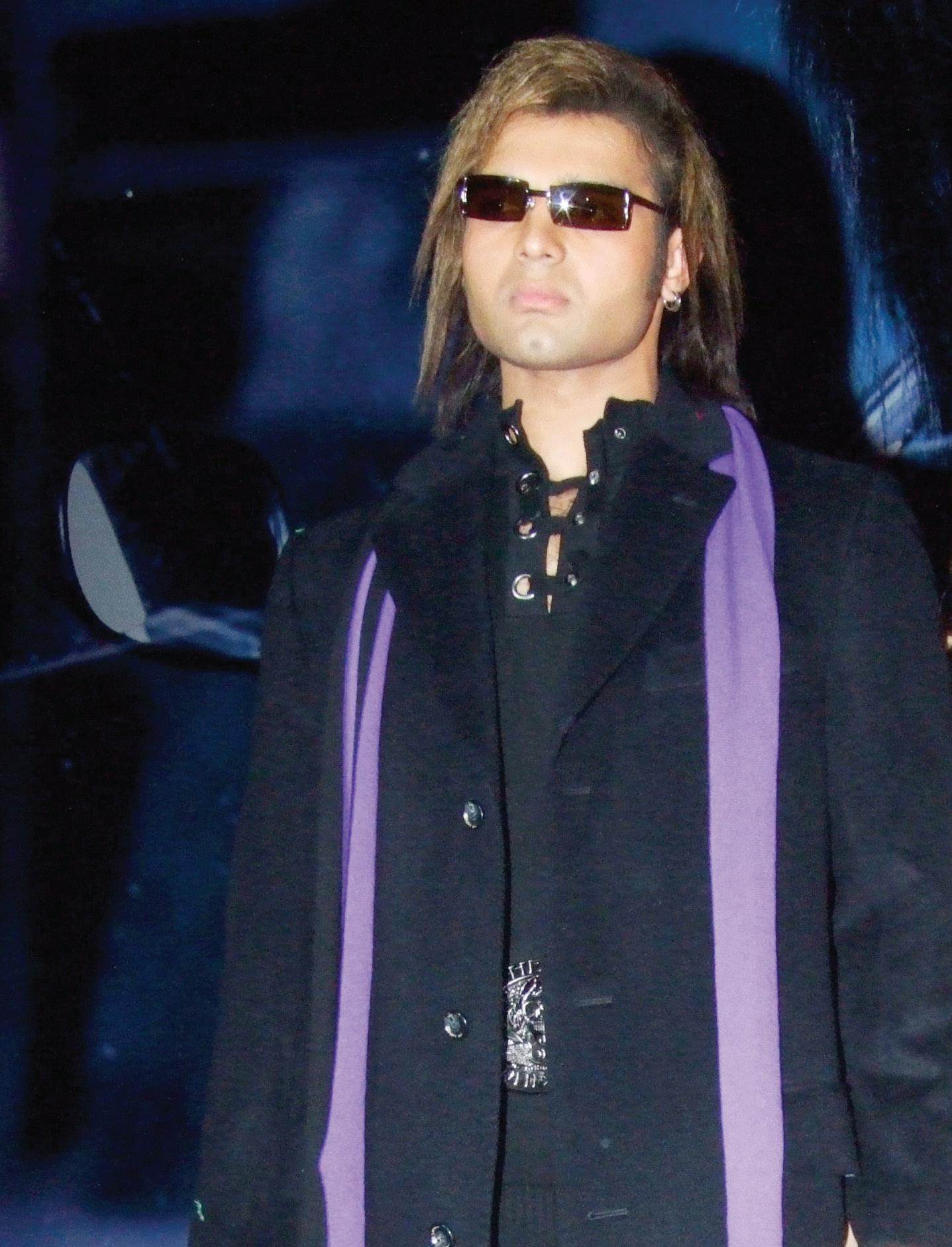
news,” said Bosco. “I hope the audience love the way it is done”.
Deepika had to work hard for the song as Bosco made the steps tougher, but the actress impressed with her positive attitude, learning the steps, and executing the sequence gracefully and very well, claimed the enthusiastic choreographer.
The title Dum maro dum is reminiscent of the iconic song from 1971 classic Rama Hare Krishna, picturised with Zeenat Aman. But Bosco claims the new track is fresh and least comparable with the old one.
“The track is new and so is the whole treatment of the song. We didn’t want to compare it with the old one, but instead we gave our song an identity of its own with a completely different sounding track and look,” he said.
Well, we can only wait to see how much dum Deepika has put into this one.
Bobby’s back
The success of Yamla Pagla Deewana been good for actor Bobby Deol, because it’s also brought the unusually shy actor into the publicity spotlight. Now Bobby will be the face of filmmaker Anees Bazmee’s upcoming film instead of old favourite Akshay Kumar.
After his two hits Singh is King Welcome it was believed to be quite certain that Akshay would be the face of Bazmee’s
GUESS WHO
66 <> MARCH (1) 2011
ENTERTAINMENT
SHARMILA TAGORE
ABHILASHA SENGUPTA brings us up-to-date on what’s hot and happening in Bollywood
Femina Miss India 2010, in a debut venture for both. Newcomer Joe Rajan will also do his directorial debut with Luv U Soniyo comedy of a relationship between a Catholic boy and a Punjabi girl. The debut director who claims to be good friends with Madhur Bhandarkar, says he was looking for a fresh couple, and Neha and Tanuj fitted the bill perfectly. Now once the supporting cast is finalized, production of will be ready to take off. It will be shot in the crowded environs of Mumbai and pristine locales in Mexico. How’s that for contradictions? Now all Tanuj
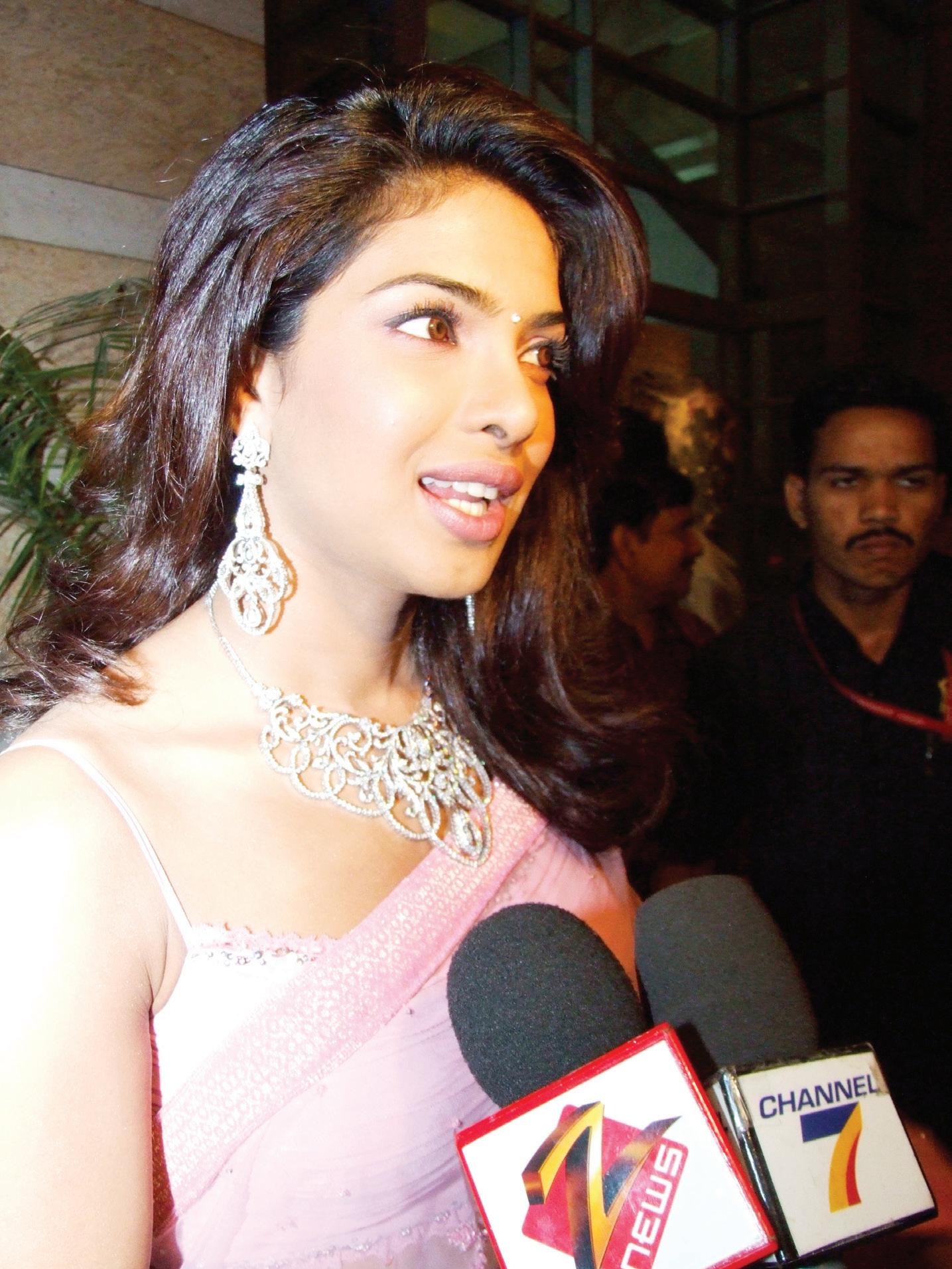
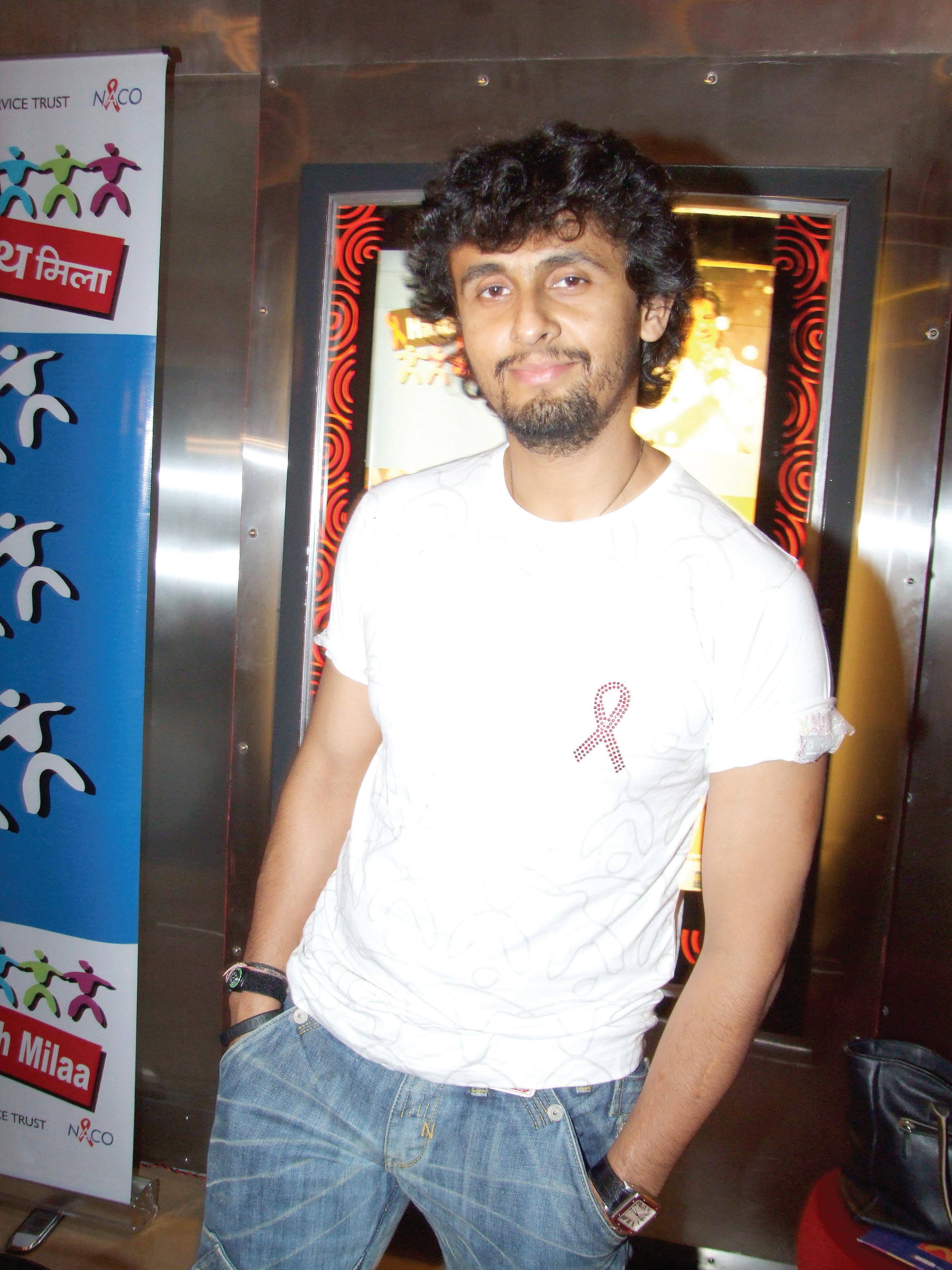

CAPTION CONTEST
held across the cities of Toronto, Brampton, Mississauga and Markham in the Greater Toronto Area from June 23-25.
The three-day show will also feature a world premiere of select films, an awards gala, a fashion show and other interactive events.
Amitabh Bachchan, however, will not be at the event and will be sorely missed. After an association of more than a decade, Amitabh has ceased to be IIFA brand ambassador.
What’s the chitchat between Urmila and Preity here?

Send in your responses to info@indianlink.com.au and win a surprise prize
Send in your responses to info@indianlink.com.au and win a surprise prize
What’s the chitchat between Jagjit Singh and Talat Aziz?
Jagjit: As the President of the Blackest of Black Hair Dye for Oldies Association, I present my (junior) colleague Talat Aziz the Crowning Glory Award for 2011
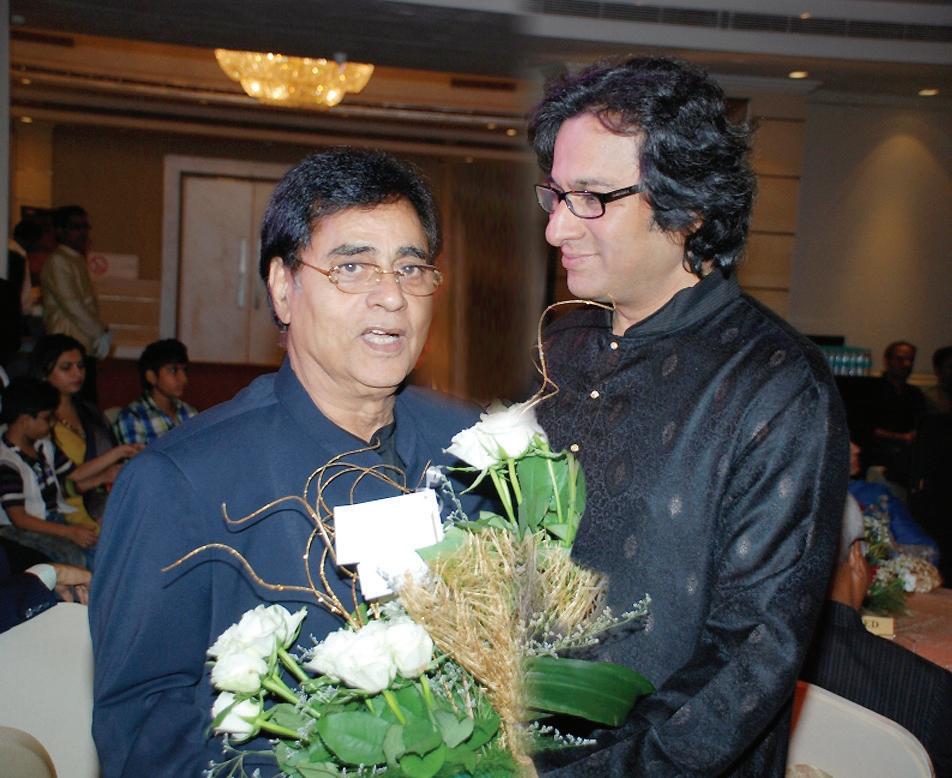
Meenakshi Kalia Mt. Hawthorn WA
Meenakshi wins an original audion CD of new release 7 Khoon Maaf
MARCH (1) 2011 <> 67 NATIONAL EDITION www.indianlink.com.au
PRIYANKA CHOPRA
GUESS WHO :ANSWER Mimoh, sonChakraborty’sMithun
Last issue Caption Contest winning entry
Cine Talk
Hopelessly mismatched
Film: Tanu Weds Manu

Cast: R. Madhavan, Kangana Ranaut, Jimmy Shergil, Swara Bhaskar
Director: Anand L. Rai
Why should you watch Tanu Weds Manu? For R. Madhavan! He will win your heart as the sweet lovable NRI doctor Manu who has the misfortune of falling in love with a Kanpurgirl Tanu (Kangana Ranaut) who not only rejects him as a suitor but also uses him to elope with her ruffian boyfriend.
Hiding his heartbreak and disappointment behind a smile, Madhavan fits into the role of a goody goody NRI like a glove. He is hopelessly in love with Tanuja who doesn’t miss a single opportunity to hurt him. Rules, they say, are meant to be broken and that’s what Tanu’s agenda in life is - to break all rules that a middle-class family swears by.
Well, an NRI coming home to find himself a suitable bride is very common in Indian society, and director Anand Rai’s comedy opens with the same. He tries to be as close to reality as possible - from the
backdrop, to clothes, to character artists - all of who bring out the element of a middleclass setup beautifully. A wedding in the background provides a perfect place for Tanu’s second chance meeting with Manu, the movie traces the relationship between the girl and the NRI. Surely, perfect material for sentimental romances, with ‘comedy ka tadka’.
But there is something missing to make it a perfect romantic comedy. First, the script is punctured, then there is no chemistry between Madhavan and Kangana, and if that was not enough, the narrative doesn’t flow at the desired pace - it’s slower than it should be.
Though the director picked up an interesting subject, he has not succeeded in executing his story effectively on screenthere are just not enough laughs! Whatever funny scenes are there, credit goes to the chemistry between Madhavan and Deepak Dobriyal who plays his friend Pappi.
Kangana’s dialogue delivery puts you off and she lacks the spunk and spark to play the free bird that she is in the movie. In fact, Swara Bhaskar, who plays her friend Payal, holds the fort as the Bihari girl who is marrying a Sardarji (Eijaz Khan), Manu’s best friend.
feelings for the man who is picked by her parents.
Critics won’t appreciate the plot but Madhavan fans would find enough material to enjoy the film.
Music plays an important role in a wedding-based romantic comedy and the director could have got it right if he had opted for fast-paced peppy numbers.
Rajendra Gupta and Navni Parihar don’t have much to do, but carry off their bit roles well. Jimmy Shergill as Kangana’s ruffian boyfriend is wasted, so is Ravi Kishen as his sidekick.
If you are looking for a great romantic comedy, this is not the one, but watch it for Madhavan and his chemistry with Deepak.
Wave of women-centric films a welcome trend
Shrivastava are trying to break the mould and present women in a more realistic, vibrant and unconventional way.
One-film-old Rajkumar Gupta’s No One Killed Jessica was an attempt to bring alive the struggle of Sabrina Lall’s fight with the Indian judiciary for years to get justice for her murdered sister.
Starring Vidya Balan and Rani Mukerji, the movie created a buzz as it was inspired by the 1999 murder of model Jessica Lall and the director was never apprehensive that his film won’t do well without a strong male character.
“The protagonists in my movie were two leading ladies who were very powerful in whatever they did. It’s not easy to make a film on such a theme, but times are changing and people are accepting it with open arms,” Gupta said.
Director Vinay Shukla, best known for his 1999, multiple National Awardwinning project Godmother, is confident there will be more successful womencentric films in the years to come.
short story Susanna’s Seven Husbands , which saw Priyanka Chopra bumping off her seven husbands, while debutant Alankrita Shrivastava’s Turning 30 was a take on the dilemma of women at the milestone age.
Talking about her experience of working as the leading lady in Turning 30 , actress Gul Panag said: “It was all about a woman’s perspective and being a woman, I loved shooting every part of the movie as it was an honest attempt. We gave it our best and I am proud of the movie.”
Earlier too, films like Dor (2006), Silsilay (2005), Tehzeeb (2003), Pinjar (2003), Chameli (2003), Satta (2003), Filhaal (2002), Zubeidaa (2001), Lajja (2001), Chandni Bar (2001) and Fiza (2000) brought the woman into the spotlight - all these films got critical acclaim, but they didn’t turn out to be a commercial hit.
to a specific audience,” he added.
Veteran actress and censor board chief Sharmila Tagore said: “I feel more women-centric films will come with time. But we shouldn’t complain because it’s the same the world over - it is indeed, the male characters that are in prominence even in Hollywood. So we shouldn’t fuss.”
The 64-year-old, who has been in the industry for over five decades, feels No One Killed Jessica is the only womancentric movie to have worked at the box office.

No One Killed Jessica, Mirch, Turning 30 and 7 Khoon Maaf - all women-centric films in the last few months show the female leads in strong and powerful roles. Filmmakers and actors hope this trend continues in future.
On the silver screen women are usually seen as a helpless mother, submissive wife, devoted girlfriend, overcaring sister, daughter or a vamp, but directors like Vishal Bharadwaj and Alankrita
“At the moment, the number of women-centric movies is less, but it will grow with time because actresses nowadays have got huge potential to run a movie on their shoulders much like their male counterparts,” said Shukla, whose latest film Mirch dealt with four stories of women’s emancipation.
Other movies that gave importance to women character is Bharadwaj’s 7 Khoon Maaf , inspired by Ruskin Bond’s
Shukla pointed out: “It’s not that the trend of women playing the main character has come into practice now. It has been happening for quite long.
From Meena Kumari in Sahib Bibi Aur Ghulam , Nargis in Mother India , Nutan in Bandini to Hema Malini in Seeta aur Geeta and Meenakshi Seshadri in Damini , these ladies always managed to make an impression on the audience.”
“The number of such movies has in fact decreased in today’s time but the reason could be that women-centric movies are distinctive and appeals only
“Only one women-centric film has sort of worked - No One Killed Jessica ; so one shouldn’t get too excited about the phenomenon. No One Killed Jessica was a hugely publicised film because of the actual happening, which had affected so many people. The news about Jessica (Lall) was in the front page of dailies for very long, people were so involved, so the film had a lot of publicity value in a commercial way. So, it was one success,” Sharmila explained.
Meanwhile acclaimed actress Rani Mukerji says she is looking forward to more projects where women are projected as strong and powerful.
“Whatever films I have been a part of so far, most of them have been womencentric films. I wish to do more such films where women are shown stronger because it is a fact that women are stronger,” she said.
68 <> MARCH (1) 2011 INDIAN LINK ENTERTAINMENT
www.indianlink.com.au
Arpana

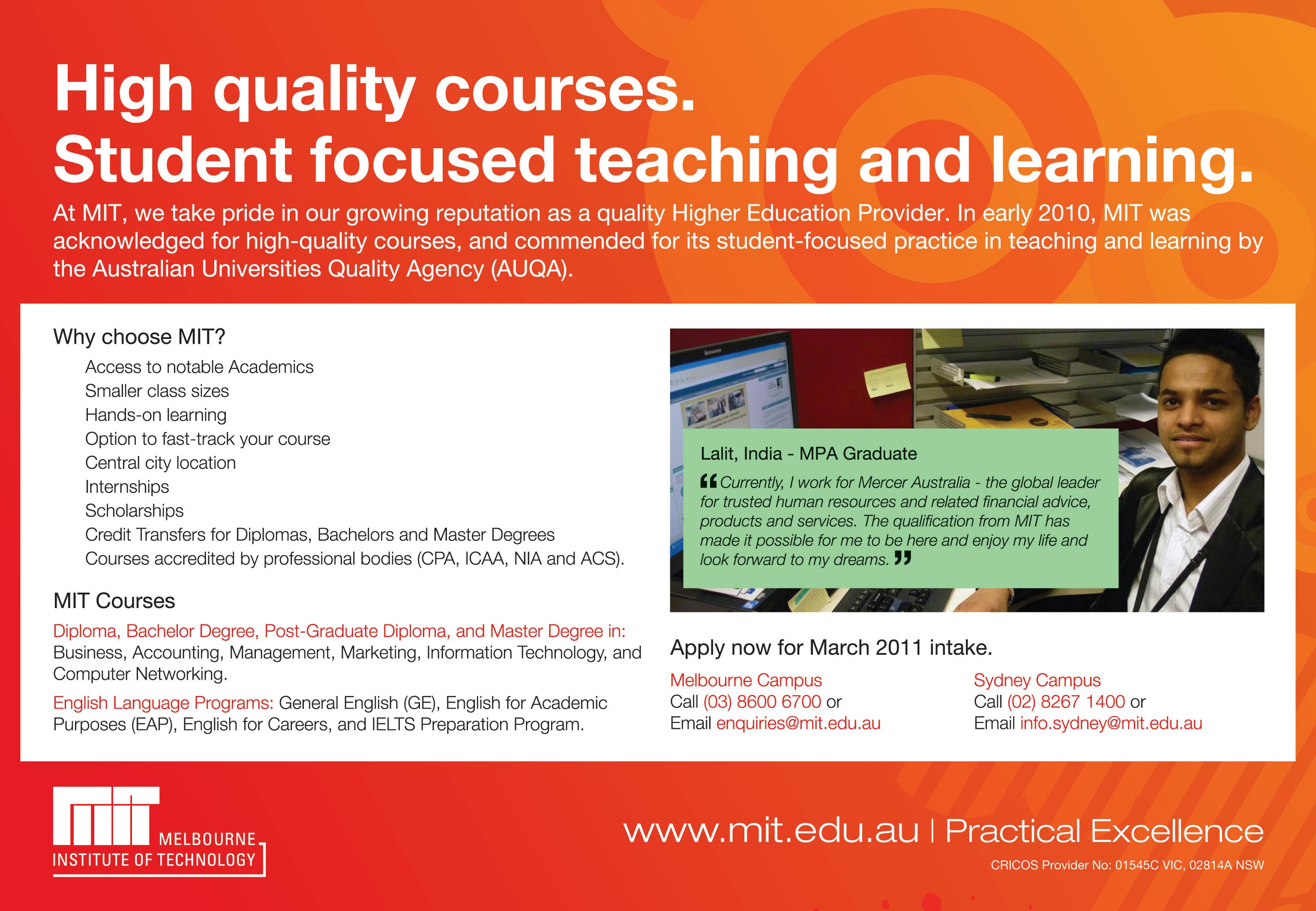
MARCH (1) 2011 <> 69 NATIONAL EDITION
Matrimonials
SEEKING BRIDES
Match required for India-born Jat Sikh boy, temporary residence going to apply for permanent residence, 25 year old, 5’10”, fair complexion, BSc (medical), diploma in horticulture, father Govt employee, brother in Italy. Looking for a girl from an Australia-settled family. Call 0430 472 878, or email bali_heer@yahoo.co.in
Seeking well-educated Hindu girl in Australia for 31-year-old, well settled Hindu Punjabi boy in Sydney. The boy has finished Masters in IT from Deakin University Melbourne. For further enquiries contact Nitin Gera (brother) 0401 279 200 or nitingera.work@gmail.com
S eeking a Gujarati girl with good family values, for my son, 35, divorced since 3 years, no children, tax consultant, fair, 5’8”, non-smoker, light drinks, eggetarian, living in Sydney since 18 years. Contact 0402 416 353 or hp11869@hotmail.com.
Fiji Hindu, 52, dual Australian / New Zealand citizenship, living in Liverpool, Sydney, seeks Hindu wife from India or Fiji, age 30-45. Please email details / pics to ron_87singh@hotmail.com
Match for Sydney-resident never married, 28 year old, slim, handsome, fair complexioned, Sood Punjabi boy, IT professional, 5’9”. Seeking Indian girl. Caste no bar, girl’s merit main consideration. Please call 0416 407 496.
30-year-old Punjabi Brahmin male, 6 feet, fair, handsome, double degree

holder, Reigistered Nurse, Australian citizen living in Sydney, seeks suitable match of honest girl with good family values. Caste no bar. Please reply with photo and details amit4012@hotmail.com or call 0431647402.
Seeking an alliance for Valmiki boy, 36, 5’8”, very well educated, LLB, MIB (AUS) government employee, Australian citizen. Parents are seeking a well educated, homely girl with traditional values. Caste no bar. Respond with photo and complete bio at valmikiboy@hotmail.com or call 0431 159 221.
age 30-42. Child accepted. Email bio-data with recent photo to sagg812@gmail.com Serious enquiries.
Seeking for a boy for a very good looking Christian girl, 25, with good family values. Working in Melbourne. Australian citizen. Contact Julius Noronha. Mobile 0433 242 461.
Gupta (elder daughter’s father-in-law) mpgupta@hotmail.com, Mob: 0419 749 448 or, Mrs Anita Gupta (mother) Anita_uae@hotmail.com. Mob +971 (50) 877 0460 or Mr Kanhiya Lal Gupta (father) Kanhiyag@yahoo.com, Mob: +971 (50) 462 1450
3
1-year-old male, Fijian-Indian background, 5’8”, fair, handsome, Australian citizen vegetarian and nonsmoker, living in Sydney, seeks suitable match of honest girl with good family values, age 25-30. Caste and education no bar. Please reply with photo and details HI.WATSUP@hotmail.com or call 0449 109 620
SEEKING GROOMS
Alliance invited for a good looking UP Hindu Jat girl, 29 years, 5’3”, engineer, working for a MNC in Melbourne. Seeks Hindu professional of good family background. Caste no bar. Family members are Australian citizens. Contact 0435 162 864 or email nidhisingh1781@gmail.com
Indian Hindu Khatri divorcee girl 34 years, 5’5”, slim built, attractive, M.A. B.Ed., studying Diploma of Accounting in Sydney, seeks groom, P/R or Australian citizen, family oriented, upper caste no bar,
Seeking a suitable match for Punjabi girl, 31, divorced, 5’3”, slim and good looking. BEng qualified, an IT professional in Sydney, and holds Permanent Residency. Please send details with name, date, time and place of birth at matrimony.groom11@gmail.com. Caste no bar.
Punjabi Hindu Khatri, good looking, smart, homely girl, never married, 34 5‘11”, looks very young, seeking tall Indian boy settled in Australia. Two brothers well settled in Sydney. Caste no bar. Contact with photo and details on 0425 910 007 or ricky.bhalla@gmail.com
Seeking suitable boy (pref. Agarwal) for good looking, slim, vegetarian, 23 years (5 May 1987: Sonepat), 155cm, about to complete MSc Finance from Heriot Watt University U.K. (Dubai Campus). Holds BSc (Hons) Banking & Finance from London School of Economics (Dubai Campus) followed by 2 years employment in HSBC Bank (Treasury Operations). Father runs business in Dubai and Africa. Elder sister married and settled in Canberra; younger brother studying engineering in Melbourne. Please contact Dr MP
L ooking for an intelligent, handsome, Sikh boy for my younger daughter 24 years old, 5’6”, slim, fair, beautiful, working in Insurance industry with Finance background, on high income. We have been settled in Sydney for past 35 years. My elder daughter is happily married here in Sydney. Please respond back with your details and photo to 24advertiser@gmail.com
Seeking a suitable match for Hindu lady, 53, 5’2, young looking, very fair, living in Australia for 25 years, works in govt dept. Groom must be between 47-55, well qualified, non-smoker, occasional drinker and vegetarian. Contact sydaus@hotmail.com.au
Dr. G. L Gupta settled in Australia since 1970, seeks match for granddaughter. Meenakshi Gupta DOB 7th Nov 1986, ht. 5’ 4” fair, with sharp features, from Hyderabad, India. Graduate in Commerce, PG Diploma in Banking and Finance from IFBI and worked in ICICI Bank. Coming to Sydney. Seeking Hindu (preferably Agarwa)l professional match. Contact 0401 448 186 / 0404 833 750. E mail giri32@yahoo.com.au
70 <> MARCH (1) 2011 INDIAN LINK
ARIES March 21 - April 19
Tarot
Tarot ‘n’ You Tarot ‘n’ You
Tarot predictions for February 2010


Tarot predictions for March 2011


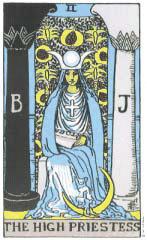


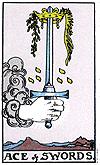



LIBRA September 23 - October 22
By NANCY SOOD
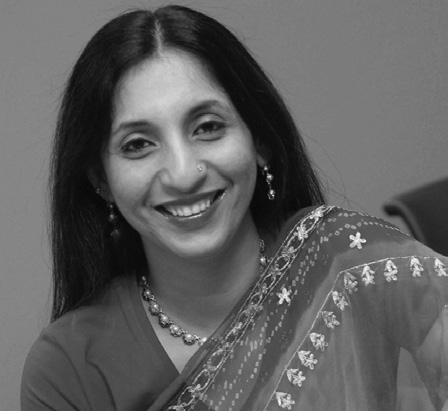
It’s going to be a great period of financial gains for you, Aries. There are indications that you will have a busy social calendar too up until mid March. Look after your health, because Tarot suggests also that you will feel less energetic, after mid month. Try and follow a healthy diet as there are indications here that all your partying could lead to eating a less nutritious diet. A great time also for making travel plans. But, be warned about unexpected expenses!
TAURUS April 20 - May 20
Your career is going to progress well this month, Taurus, and you will also find that you will be busier at work. Mid March could see a promotion at work: there are certainly strong indications of an increase in income. Tarot also foresees reunions with friends and family, and a few celebrations are likely. Look after any health related issues this month as you have a habit of ignoring things. Thursdays this month will prove to be a lucky day for any business dealings or meetings.
GEMINI May 21 - June 20
Not only are you becoming spiritual, Gemini, there is also a creative streak around you. You will feel lucky up until 18 March as things will go your way; this will please you. Investments will do well and you will also find peace with family and friends. If you want to plan any social events with loved ones make sure you choose Saturday as this day looks to be lucky for you. All in all, a month of powerful changes.


CANCER June 21 - July 22
You may find this month that you don’t have as much stamina as you normally do, Cancer. Work will be a little slow around you too: you will want things to move but there will be certain delays. Postpone any important meetings until after 20 March or even April: it would be beneficial for you. There are indications here of strong chances for travel this month. Important meetings or events this month should best be scheduled for Wednesdays for good results.
LEO July 23 - August 22
Tarot foresees some difficult situations with your ‘significant other’ until mid month, Leo. Perhaps you need to work harder to bring in more harmony into your relationships. You need to take care of your health too, as you could be stressed out, causing low immunity at this time leading to colds, coughs and fevers. Start taking better care of your health. There are also indications of tiredness around you. Leave important decisions this month for Fridays if possible.


VIRGO August 23 - September 22

It’s a wonderful time for love and romance this month, Virgo, if you can steer clear of disagreements. Someone around you seems to be suffering from joint ailments. Plans for a short break are on the cards and you may plan a surprise for your partner. Be very clear about what you want at work as there are some colleagues who may try and take advantage of your good nature. Friday is your lucky day for events and meetings this month.
You seem to have an overactive mind right now, Libra, and the cards indicate that you have some issues to deal with. There could be a concern around your child or a child you know. Your working environment will be cordial and energetic though; you have energy around you to get things done and ask for what you want. You could be earmarked for a better position. Be careful whilst driving. Lucky day for you this month is Thursday.
SCORPIO October 23 - November 21
Be careful of family conflicts this month, Scorpio. Things have been brewing under the surface for some time; and they could all bubble over. You will be very energetic and ideas around work and family will be flowing right now. You will think of a way to change your appearance in some way too. The cards also show a new purchase; either a new car or investment in property is on your mind right now. Lucky day for you this month is Friday.
SAGITTARIUS November 22 - December 21
It’s a wonderful month for the rise of your reputation, Saggitarius, thanks to your dynamic attitude as well as networking skills. You will feel high amounts of energy and enthusiasm around you, helping you focus on important plans with work. There will be a distance between you and your family, though. The cards show there will be a change of residence or indeed changes within your current residence. Enjoy the ride of success. Lucky day for you is Monday.
CAPRICORN December 22 - January 19
There is a strong indication that you will gain financially, Capricorn. But be careful in your manner of speech as your communication is often misunderstood. From mid month onwards there will be a great increase in your networking and success. This is a very high energy phase for you where you will be looking at acquiring all that you can for future stability. Make sure you get plenty of fresh air and exercise. Lucky day Tuesday.
AQUARIUS January 20 - February 18
There are a lot of issues that you are avoiding this month, Aquarius. You will have a tendency to be short tempered and agitated. Family and finances are your main concern. If self employed there are changes that you are considering in your set up. People working for or around you may not be functioning effectively – deal with them appropriately. Watch out for stressrelated headaches. Try to include meditation in your daily routine. Lucky day this month is Wednesday.
PISCES February 19 - March 20
Pisces, this month will begin with pressures and feelings of lethargy which may last until 17 March. There will be a significant improvement in how you feel from 18th onwards. There could be plans for an exotic holiday – a break with your family maybe, as you need to spend some quality time with those you love. If single you will plan a holiday with friends. Be careful not to lose your cool with colleagues. Lucky day is Sunday.
MARCH (1) 2011 <> 71 NATIONAL EDITION
STARSFORETELL
www.nancysood.com
www.indianlink.com.au
Cabbage patch to clones
It’s a surrogate world out there, as celebs and ordinary folk scramble for seats on the baby boom bandwagon
BY LP AYER
Babies come in all sizes, weights and colour, right? Right. They also come into this world through the same process –an act of love (not much love needed, though) – right? Wrong!

I’ve read four stories in the space of two weeks in the dailies, which set my head spinning and my mind wondering at the multiple choices available to mankind to multiply their kind. Most of these stories are the stock feed for the gossip columns in glossy rags, that girls gulp in gallons. I wouldn’t mind such coverage, but these items taking up shrinking news space in daily papers goes against the grain of a hard-nosed newshound.
Understandably these stories are about celluloid celebs broadcasting to the world (banking in the process fat cheques from publishers), intimate details of how they went about adding another one to their brood. Of course the whole universe has been kept up to date, courtesy of these magazines, with mega-stars Madonna and Angelina’s gargantuan global hunt to grab a baby from all parts of the world, so that they can have their own mini-UN in their Beverley Hills mansions, rivalling the real but ineffectual one in New York. These superstars, you will at least admit, adopted less pushy (no pun intended) paths than some others of the celebrity clan.
Our own fair dinkum Aussie actress (oops, actor as per political correctness)
Nicole Kidman and her partner Keith
Urban after studious silence for a month, dramatically disclosed the surrogacy path they took to bring home a baby. My metro daily made a song and dance showpiece of them spilling the beans of their secret foray into a full page spread, even as the rest of the paper was awash with flood tragedies. Maybe a welcome break, but what was not well-received was the term “gestational carrier”, used to describe the process of how Faith Margaret was reared in a woman’s womb worlds away. Is ‘www’ an acronym for something different now?
But to keep faith with her fans, Miranda in her blog said, “I gave birth to him naturally, without pain medication and it was a long and arduous labour”, prompting a Sydney midwifery professor hail her as a model mother.
In contrast to the arrival of Faith, Flynn “the ray of sunshine’ in the life of super model Miranda Kerr followed the mundane route known from prehistoric times. But to keep faith with her fans, Miranda in her blog said, “I gave birth to him naturally, without pain medication and it was a long and arduous labour”, prompting a Sydney midwifery professor hail her as a model mother. Is that a world first, Miranda? This ‘miracle’
happens a million times a day all over the globe without rating any media mention. Adding a picture of her feeding Flynn, Miranda made sure her bub got a fair exposure, as only models know how to milk every cent out of their celeb status. Baby stories kept coming. Tassie lass turned royalty Princess Mary of Denmark delivered twins, proving that royals don’t do anything by half. Peter Costello’s advice to beget ‘one for the nation’ seems to have been taken ‘two’ seriously. But the best was yet to come, as only the British can do. Elton John and his partner David Furnish’s desperate deal to be dads to darling Zachary was all over the print media. Their surrogacy path is somewhat surreal. Juicy bits picked up by dailies from a six-page splash in the Australian OK magazine elaborated Elton’s motive for his seemingly zany (to some at least) path to parenthood. Zachary Johnson Levon Furnish-Elton may have a problem about whom to call ‘dad’ since both men claim to have contributed to the production process. The doting dads say the baby has David’s ears and Elton’s nose. Readers don’t get too nosey to know the real dad. Little Zachary may have another issue too, since the egg was from a woman different to the one who carried him. So a set of twin dads and mums, quite different from Mary’s Denmark duo.
In order to lavish his love on this little tacker, ebullient Elton bought a neighbouring luxury apartment and also increased his entourage of housekeepers, costing him extra few millions to care for his mite. What’s next? With ego to match his grand piano, will Elton go for a clone? Already within the space of the last
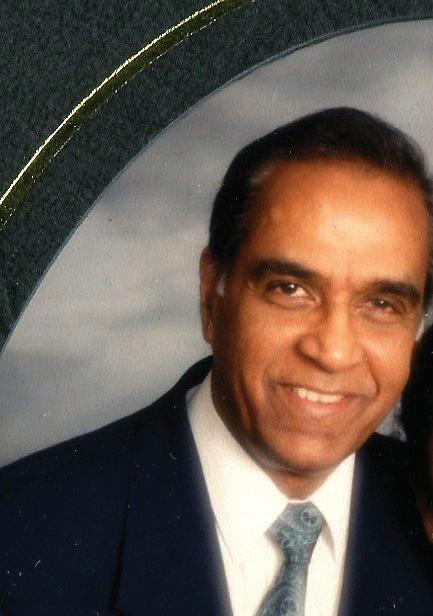
thirty years, technology has made storks redundant and cabbage patches lie fallow. It is not just the rich and famous who now broad/tele/podcast and collect considerable cash for what was once a purely a private business. Ordinary folks too have jumped on the baby bonanza bandwagon to announce to the outside world their ordeal to obtain obstetric Oscars. “A gay Melbourne couple who paid an Indian surrogate mother to give birth to twin girls has won a major legal case for parenting rights,” says the Adelaide paper and adds, “The case
Ordinary folks too have jumped on the baby bonanza bandwagon to announce to the outside world their ordeal to obtain obstetric Oscars.
comes as overseas surrogacy booms, with 350 babies expected to be brought to Australia in 2011 compared to 50 just a couple of years ago.”
An Indian connection! Some readers may be interested to know that Anand, a little known village in Gujarat that came into prominence for its ‘white revolution’ (milk production through the efforts of one Dr.V.Kurien) and its ‘utterly butterly’ delicious Amul products, is now a major baby boom centre, attracting many a foreign couple. A land of milk and mankind?
72 <> MARCH (1) 2011 INDIAN LINK www.indianlink.com.au BACKCHAT



MARCH (1) 2011 <> 73 NATIONAL EDITION
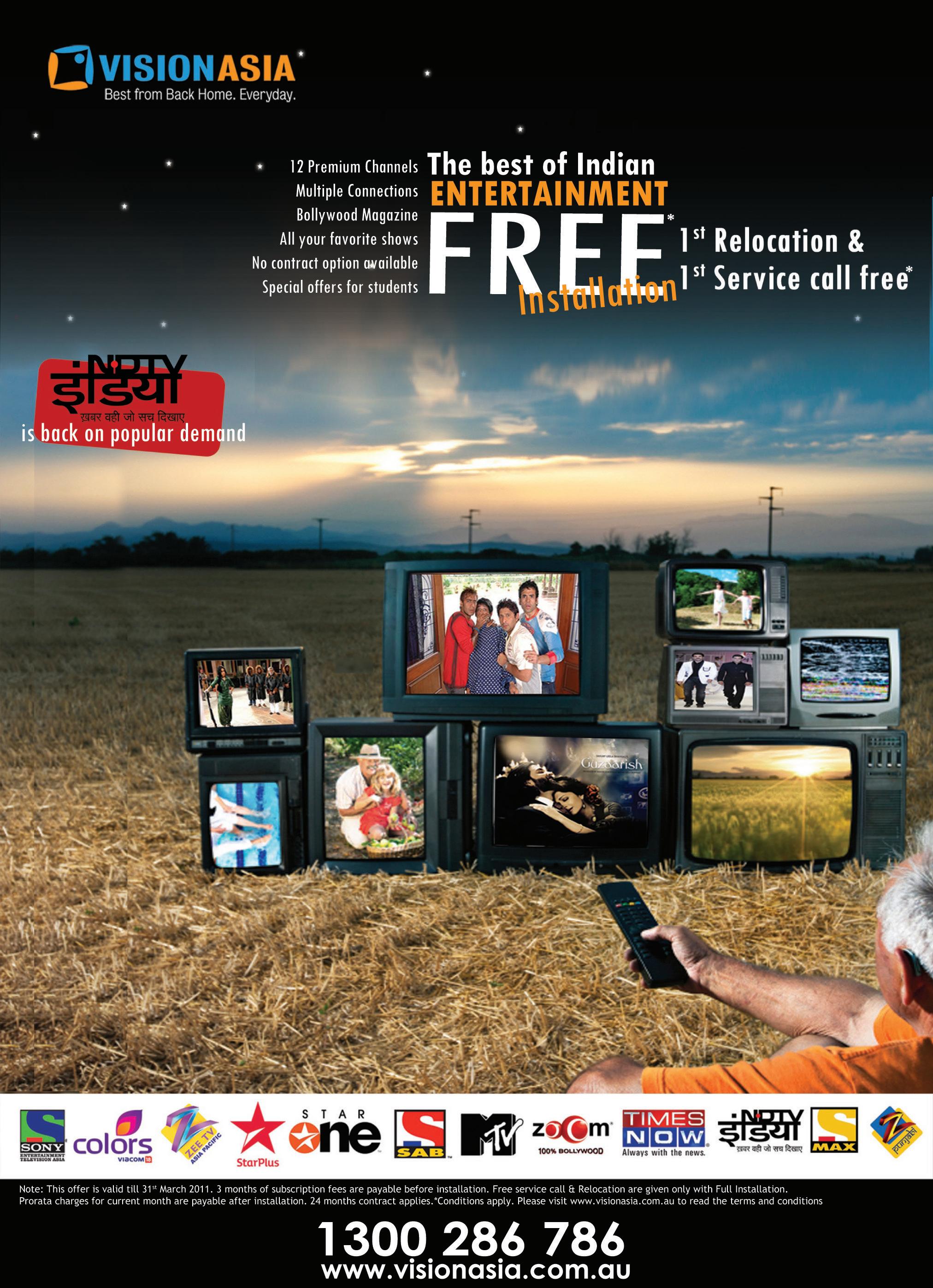
74 <> MARCH (1) 2011 INDIAN LINK

MARCH (1) 2011 <> 75 NATIONAL EDITION

76 <> MARCH (1) 2011 INDIAN LINK











































 Swati Nishar Dedhia
Swati Nishar Dedhia

























 Sudha Natarajan
Sudha Natarajan

































 Prashant Dixit
Prashant Dixit







 BY FARRHA KHAN
BY FARRHA KHAN




















 BY ROY LANGE
BY ROY LANGE










































































 BY THOMAS E KING
BY THOMAS E KING
















































